Earsham
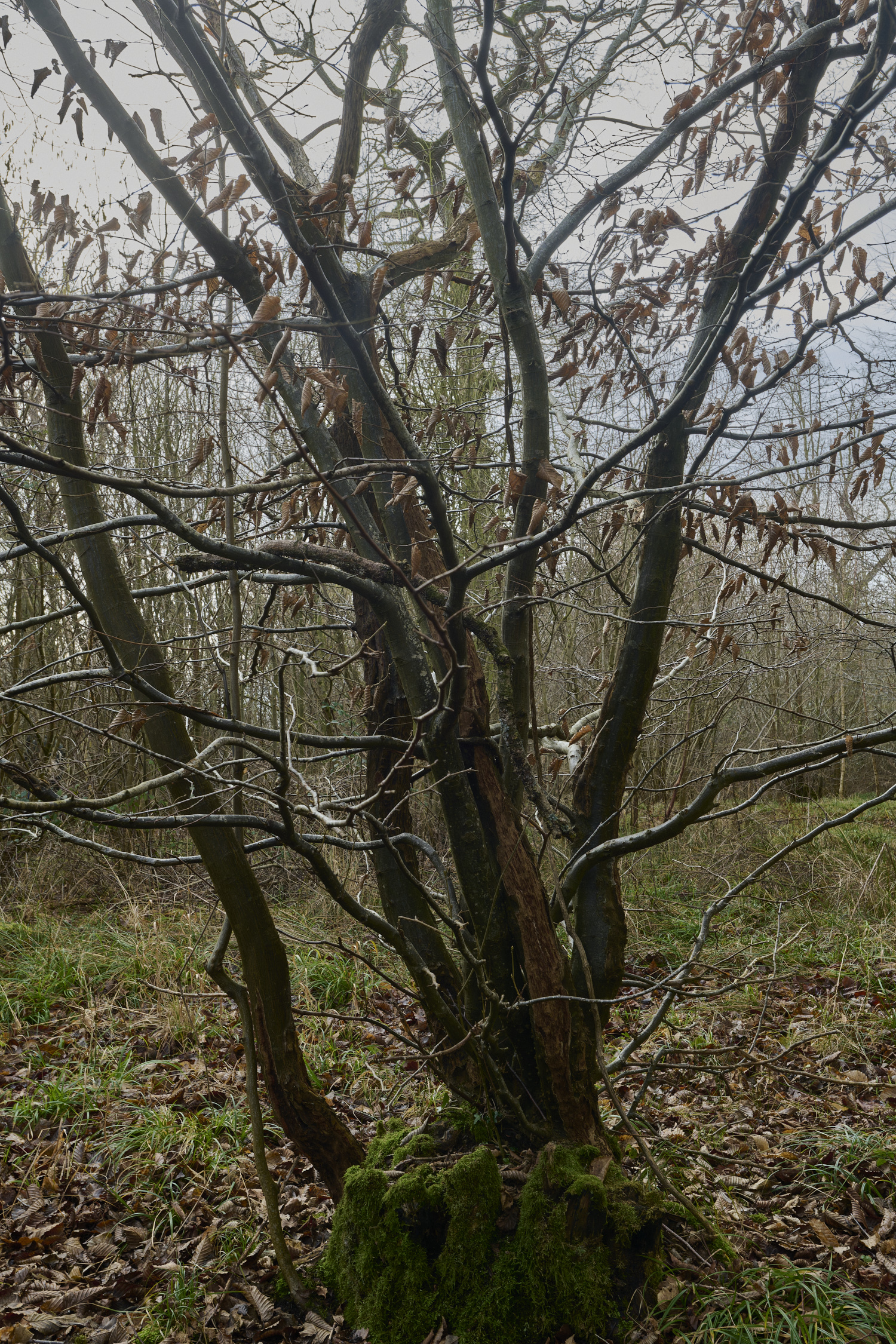
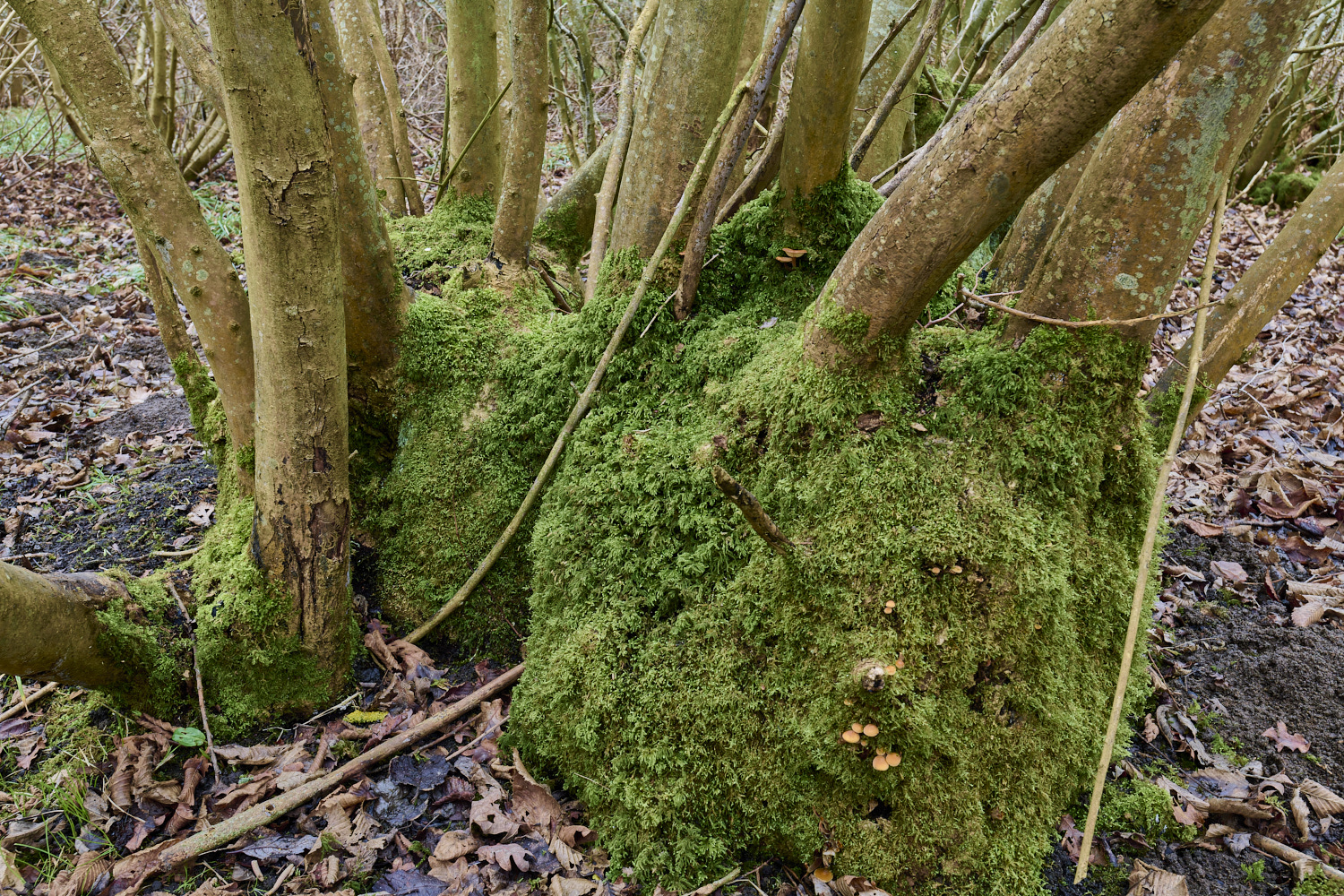
Hazel Coppice (Corylus avellana) stool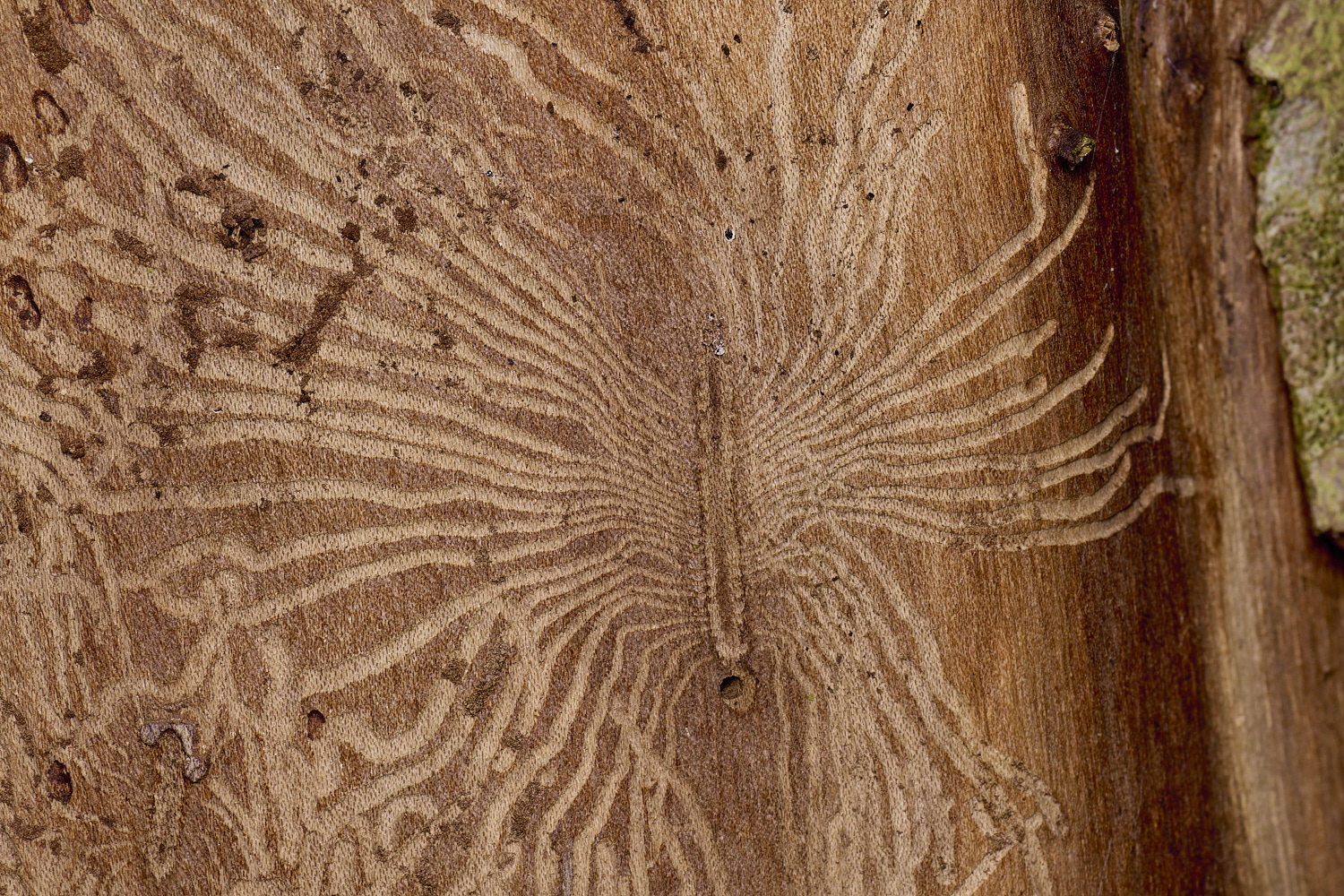
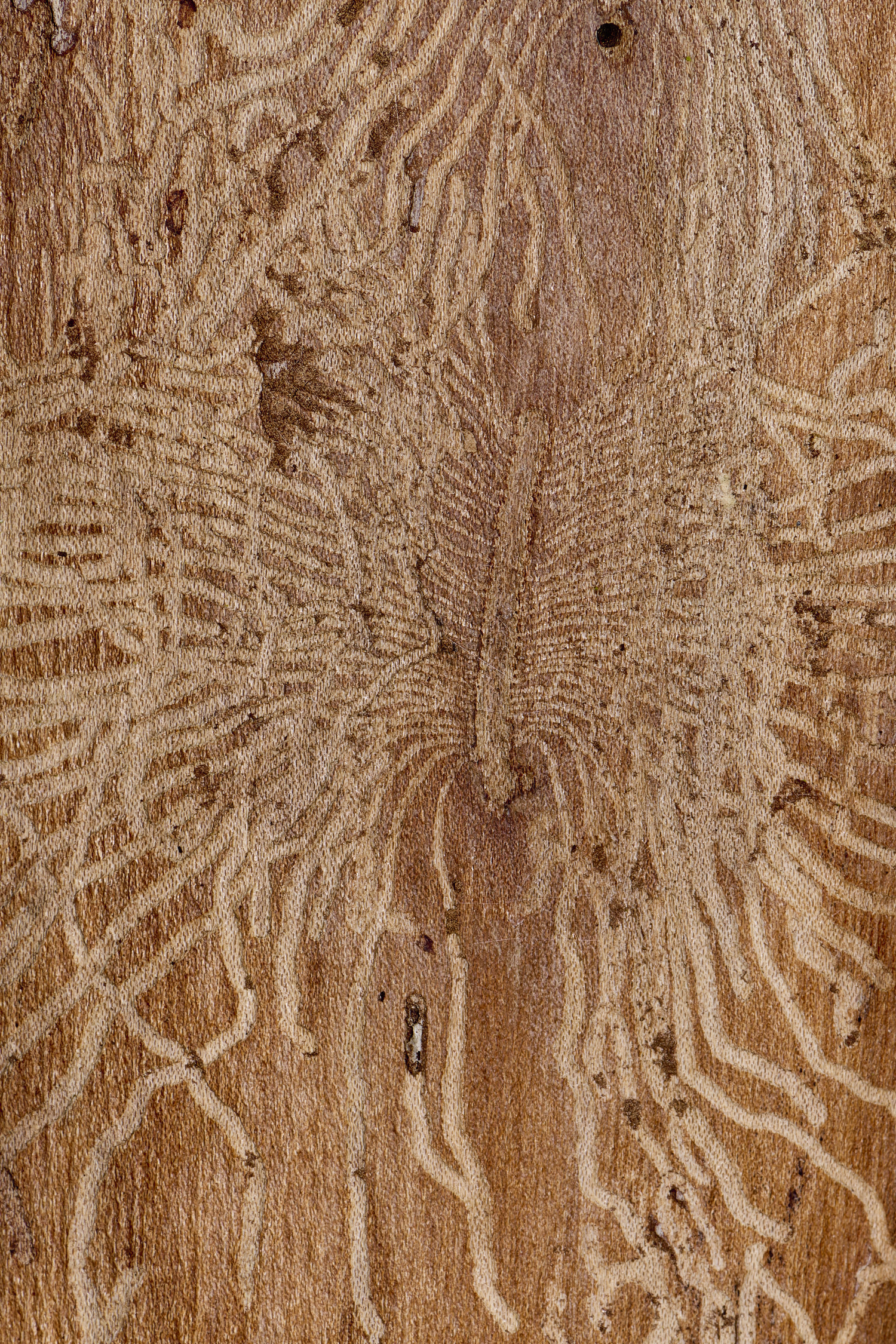
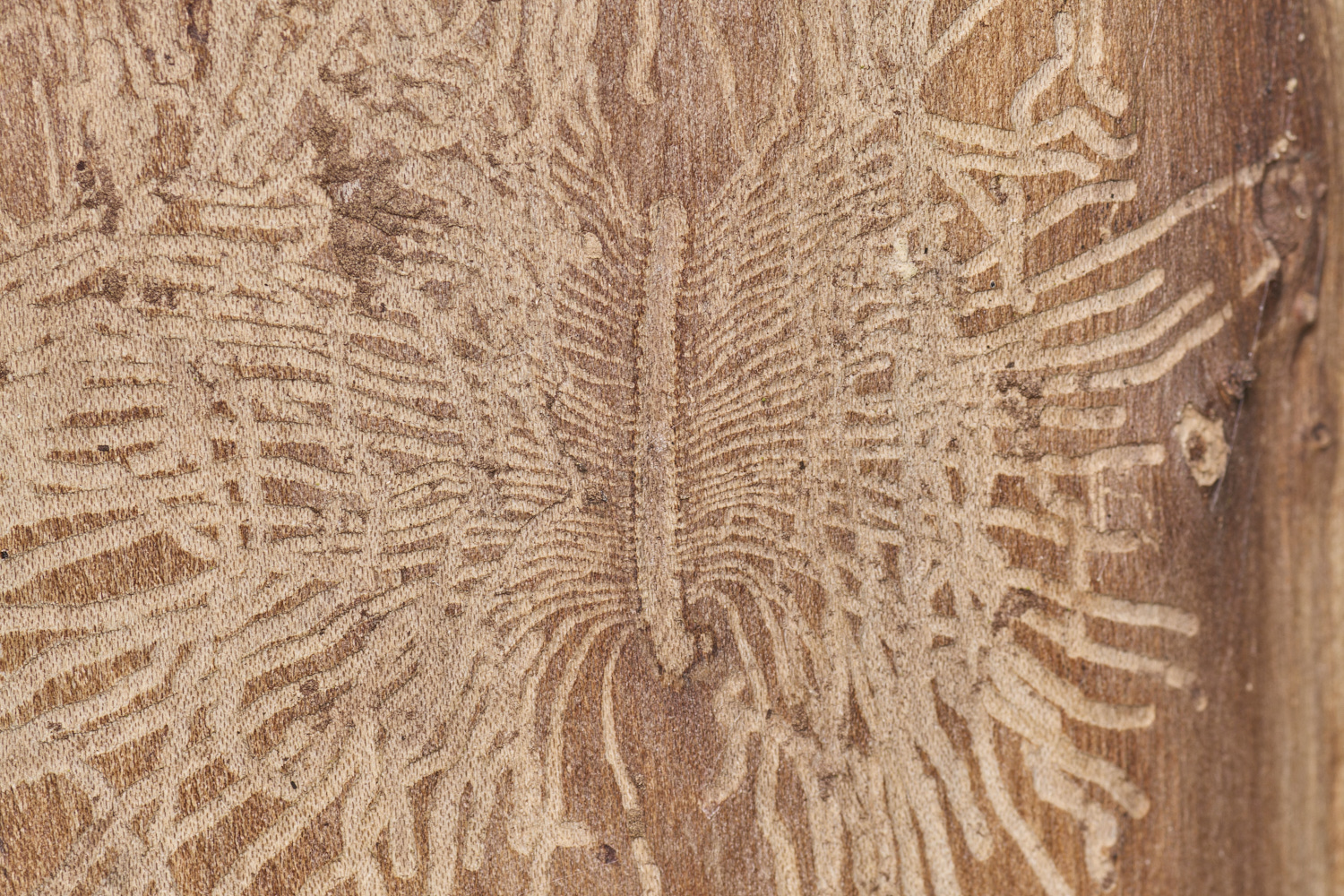
Galleries from an Elm Bark Beetle 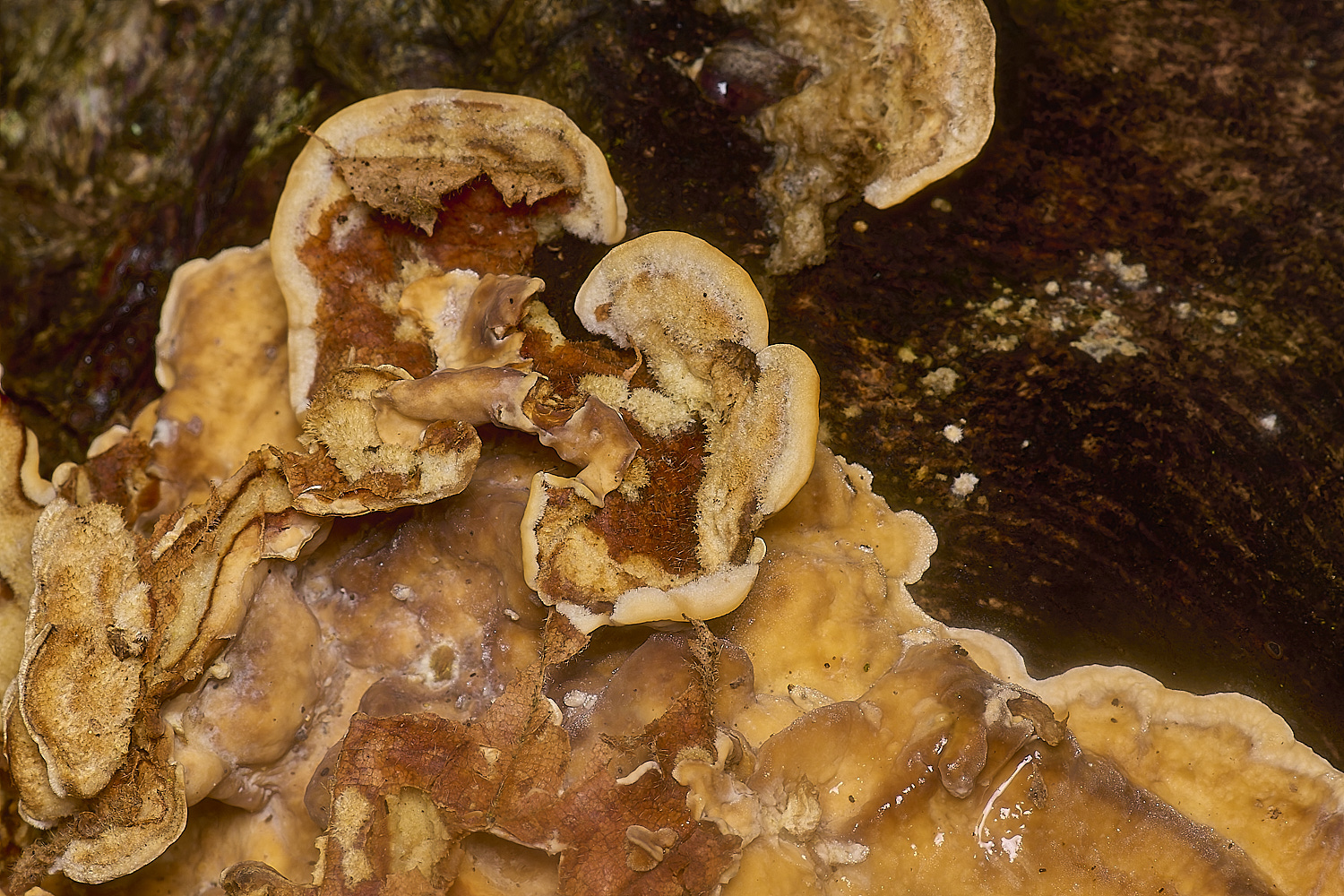
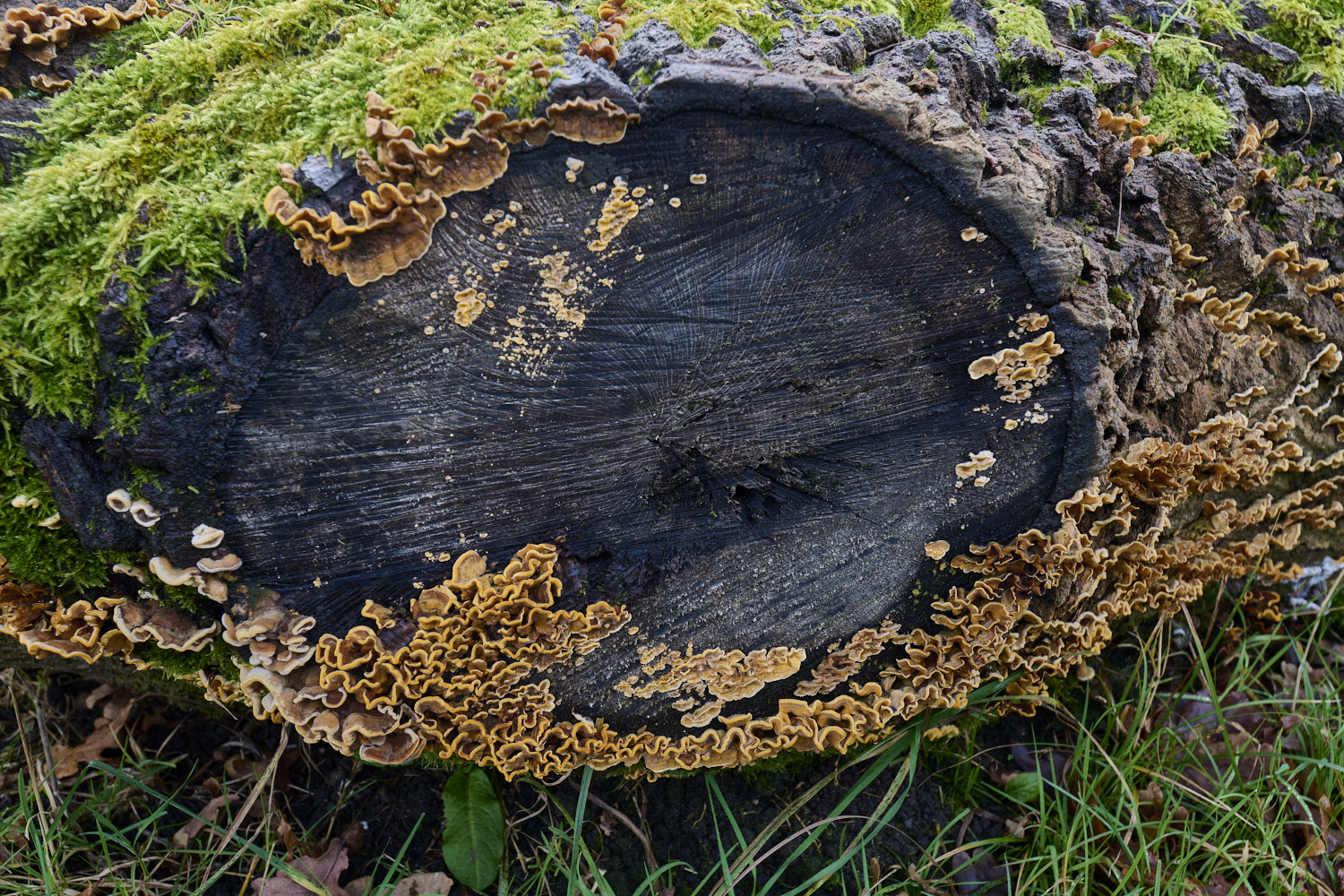
Hairy Curtain Crust (Stereum hirsutum)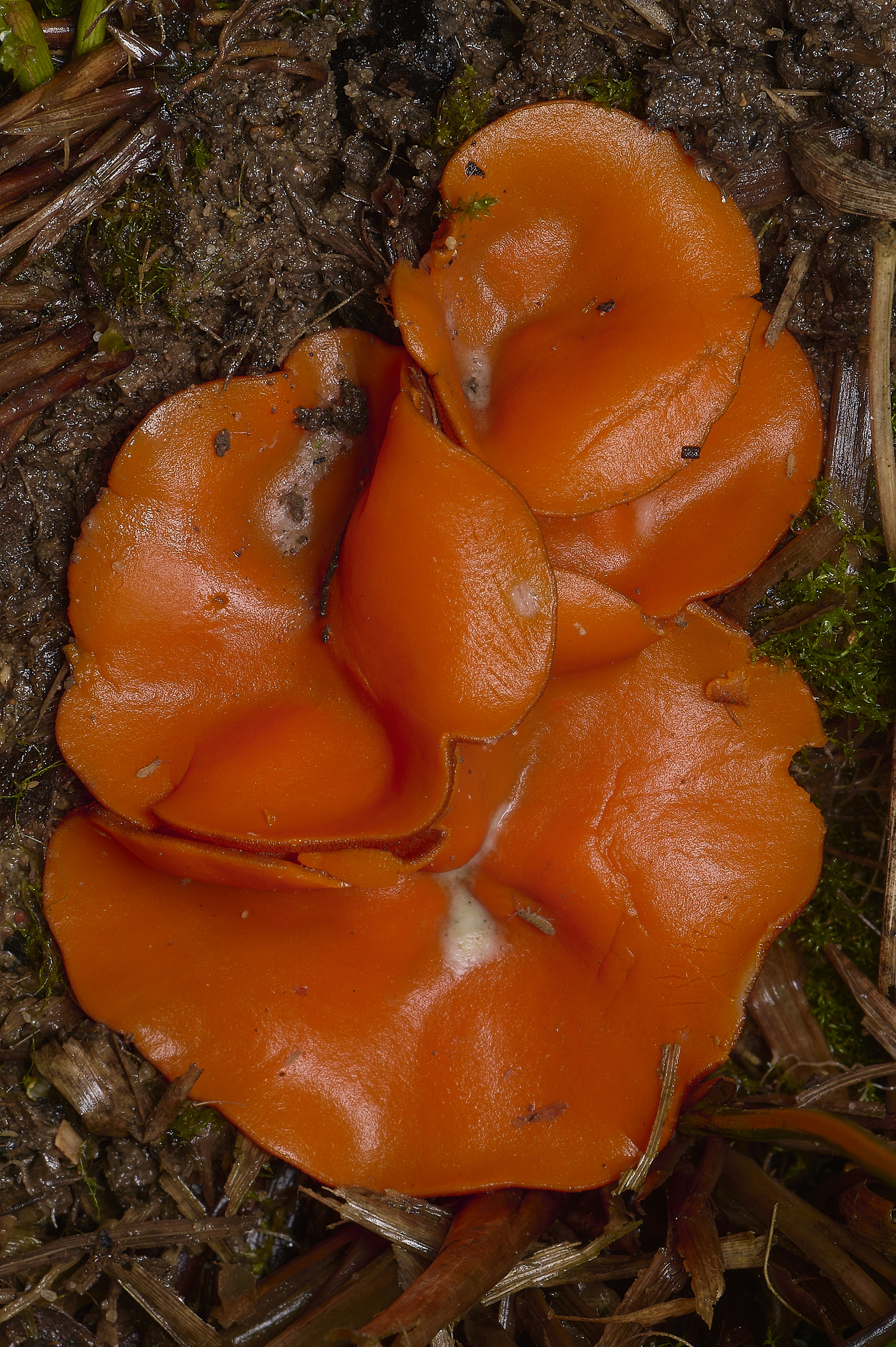


x100
x 200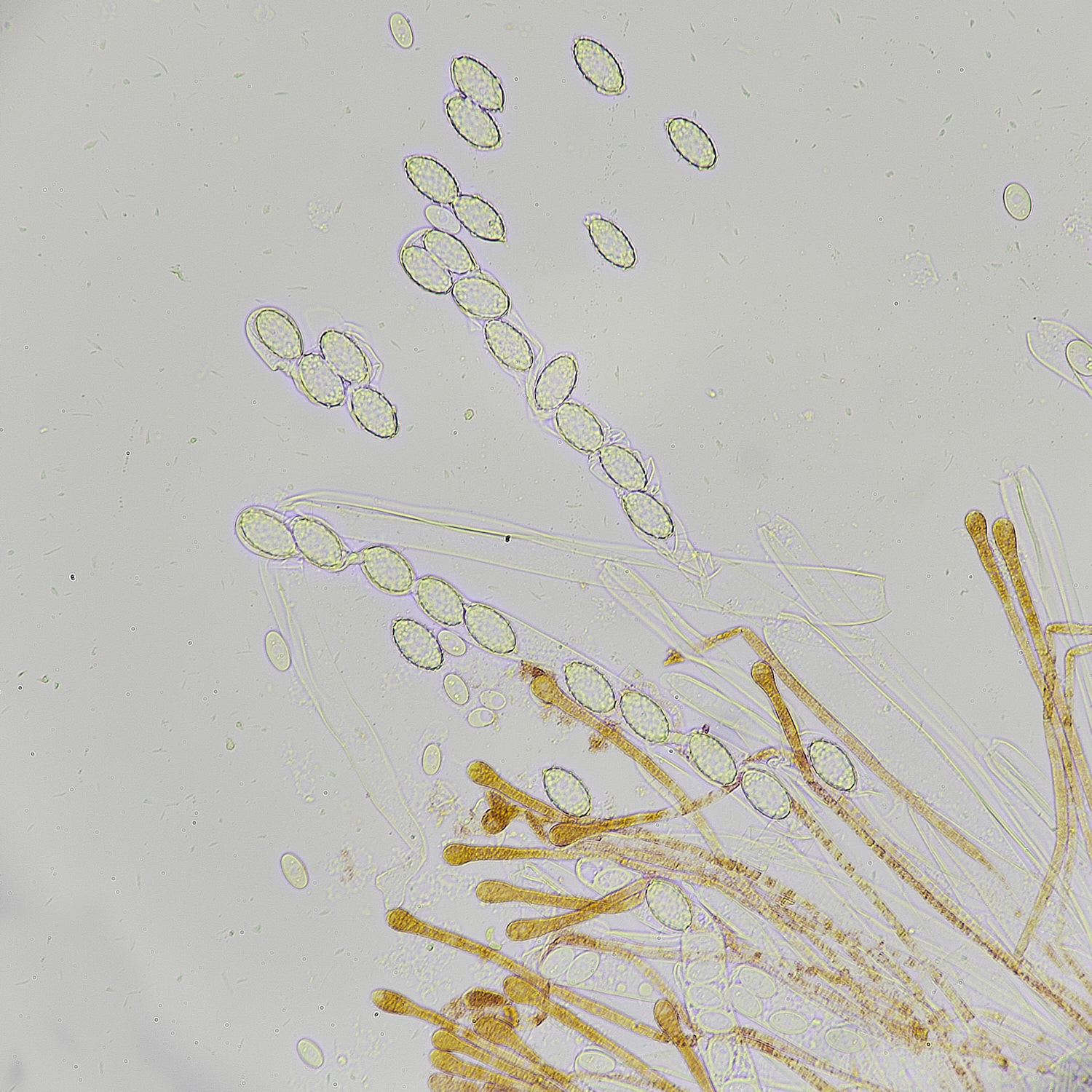
x 400
Spores
Coarsely reticulate surface
Orange Peel Fungus (Aleuria aurantia)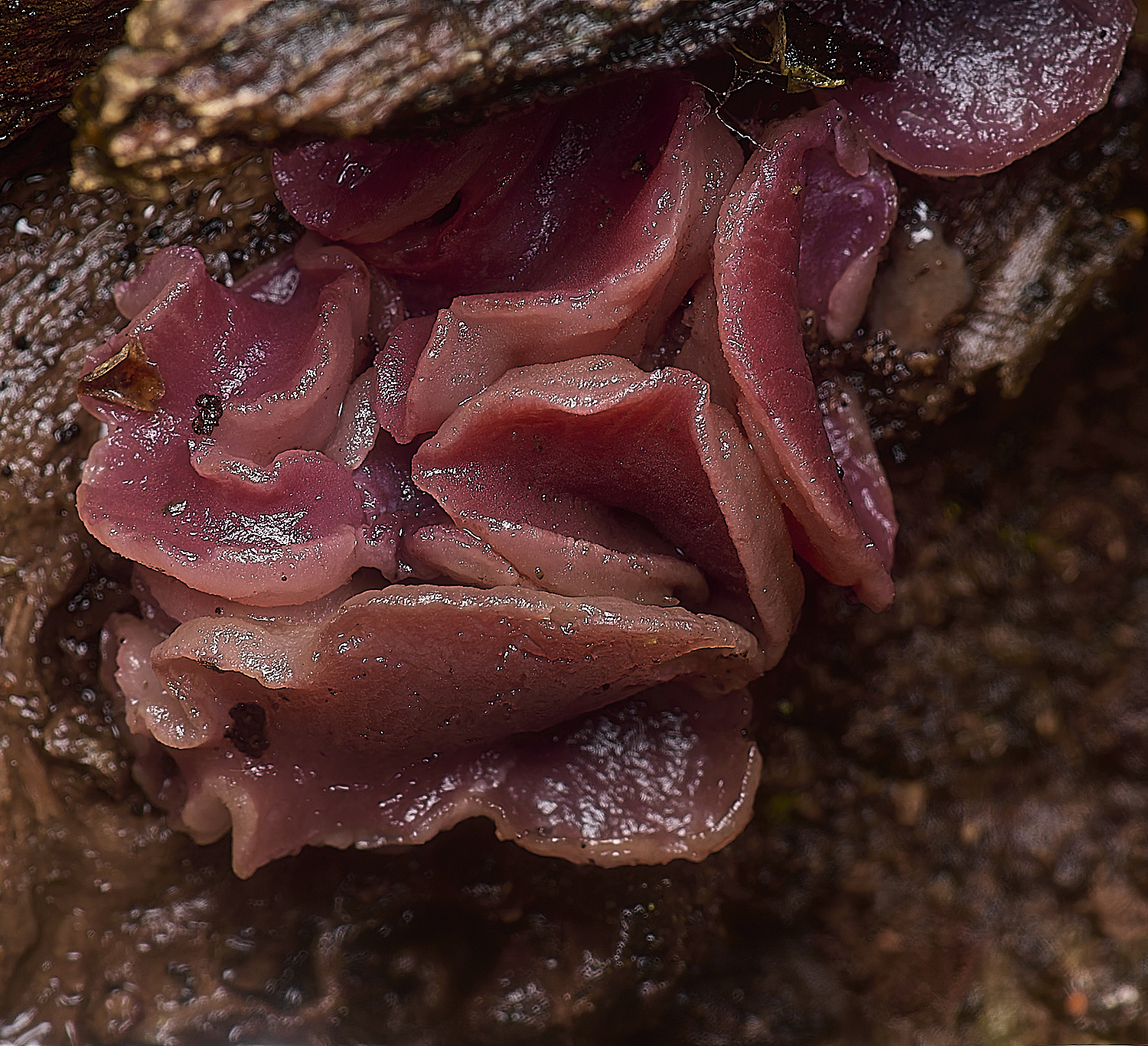
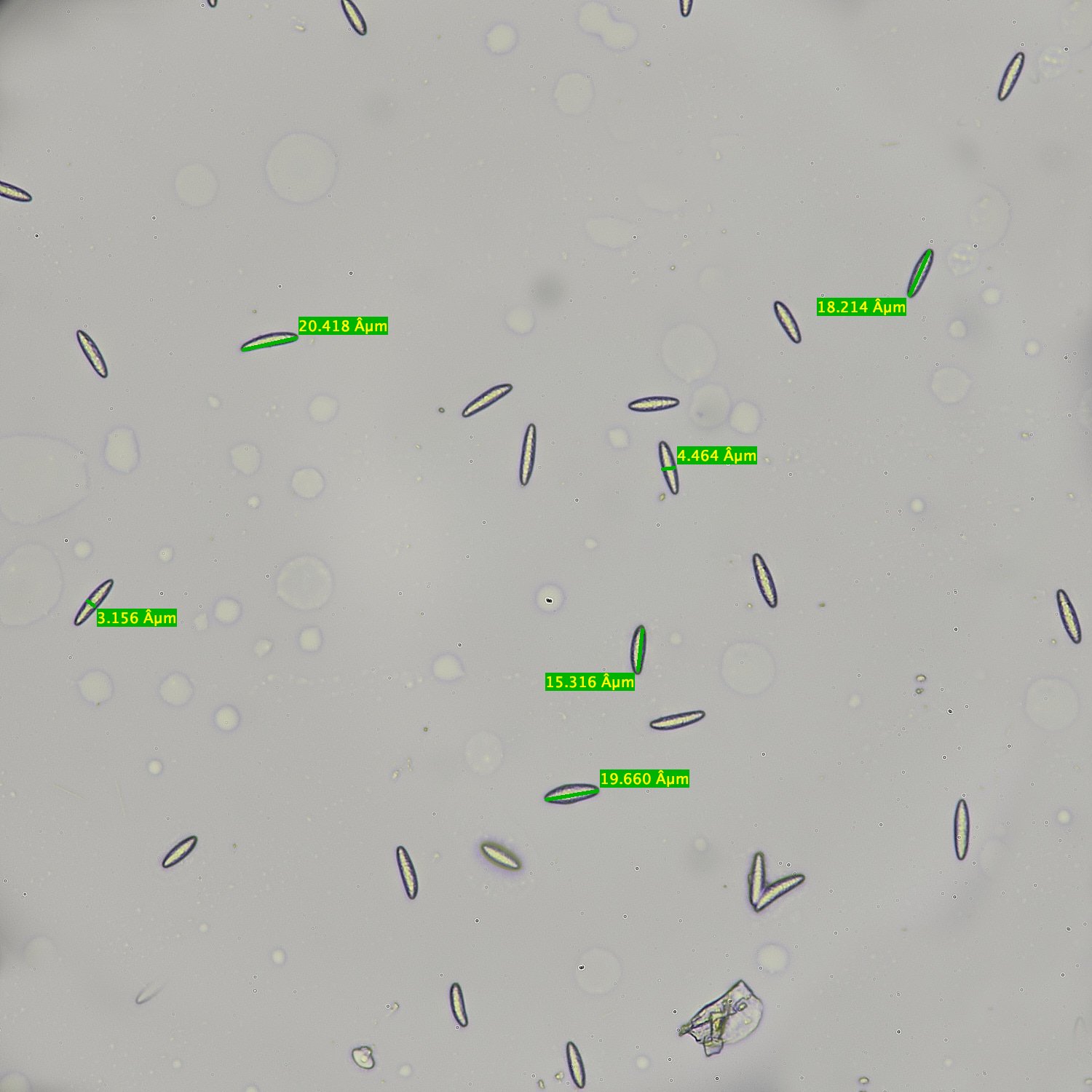
Spore size is correct for
Purple Jelly Disc (Ascoryne sarcoides)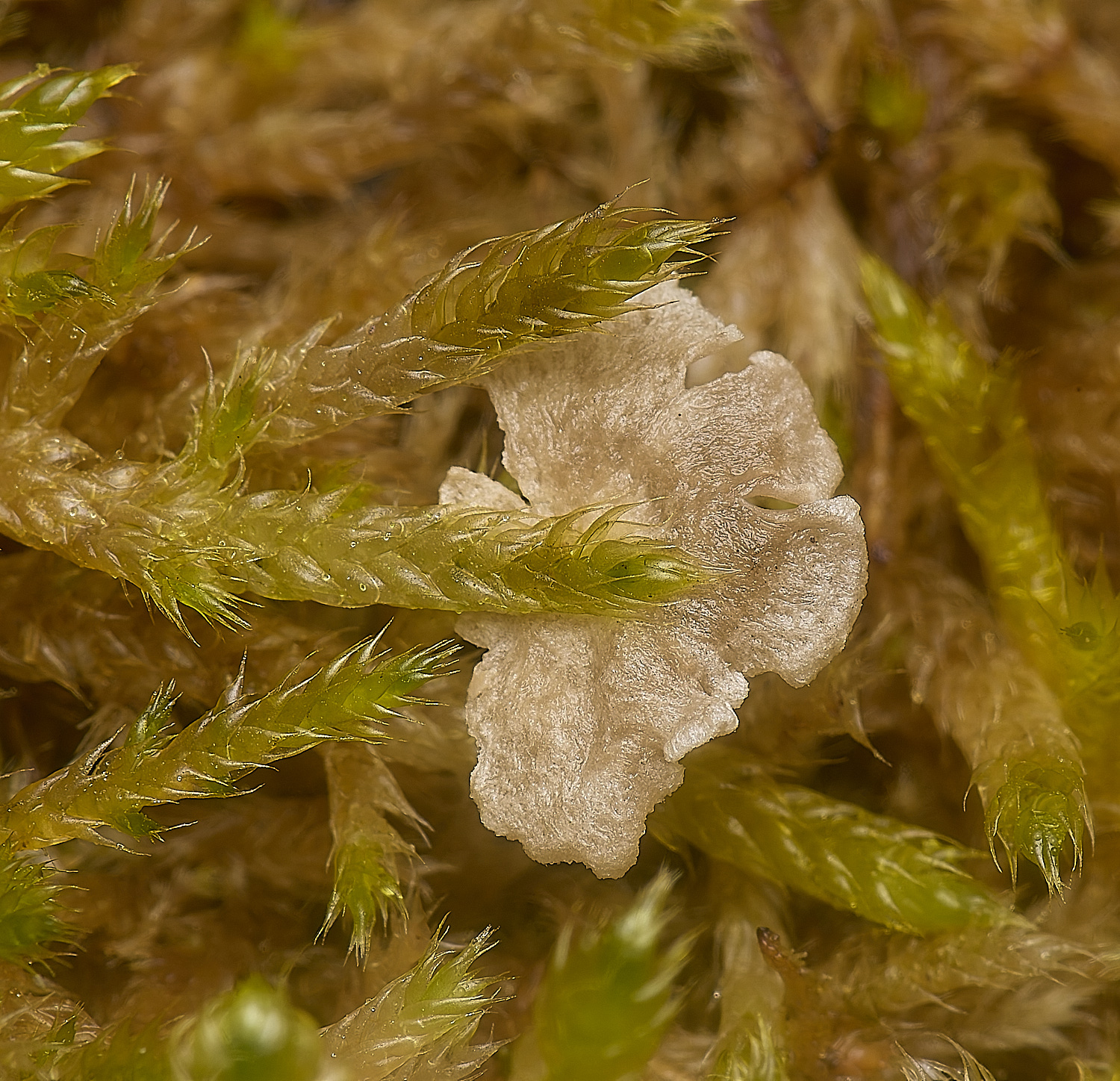
Small Moss Oysterling (Arrhenia retiruga)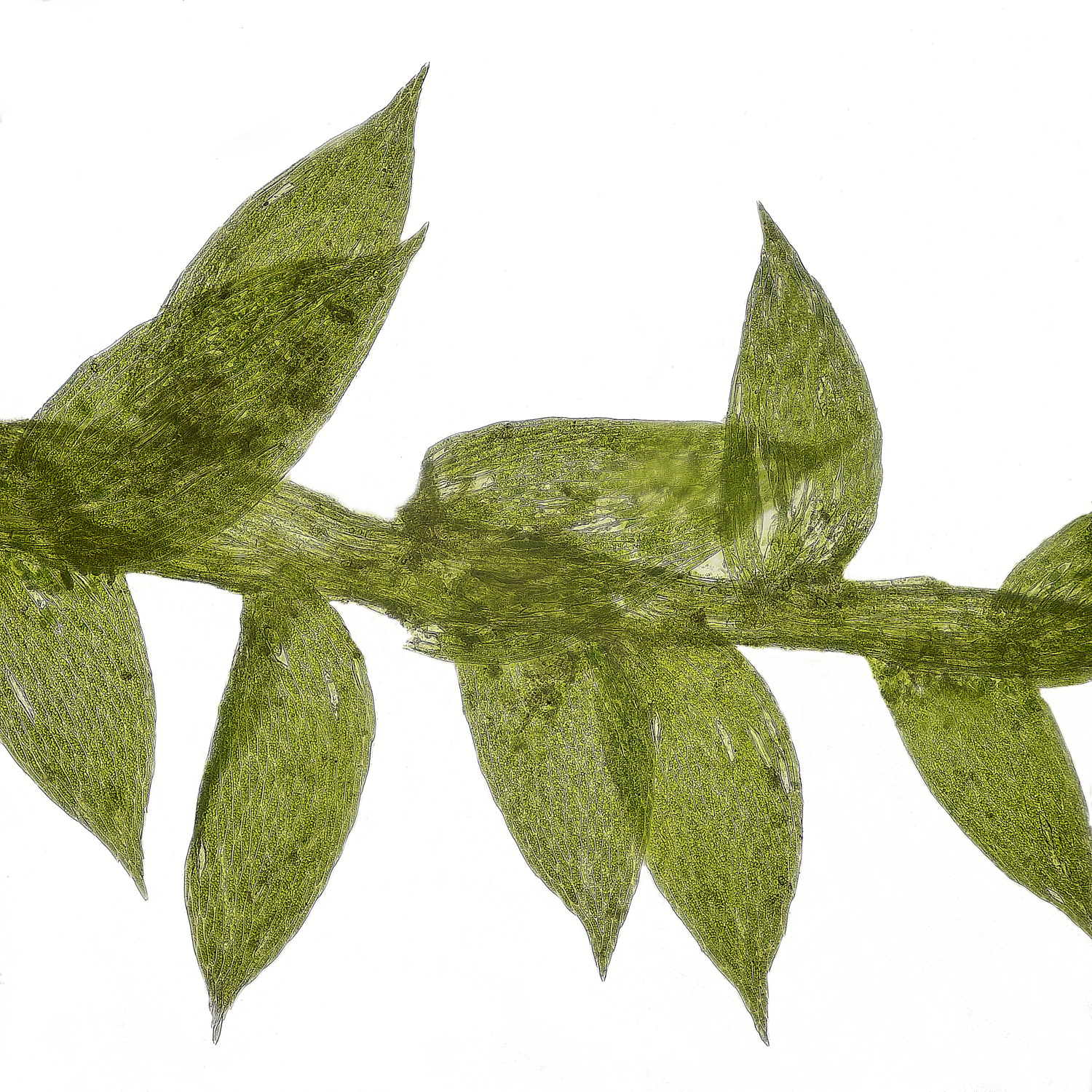
x100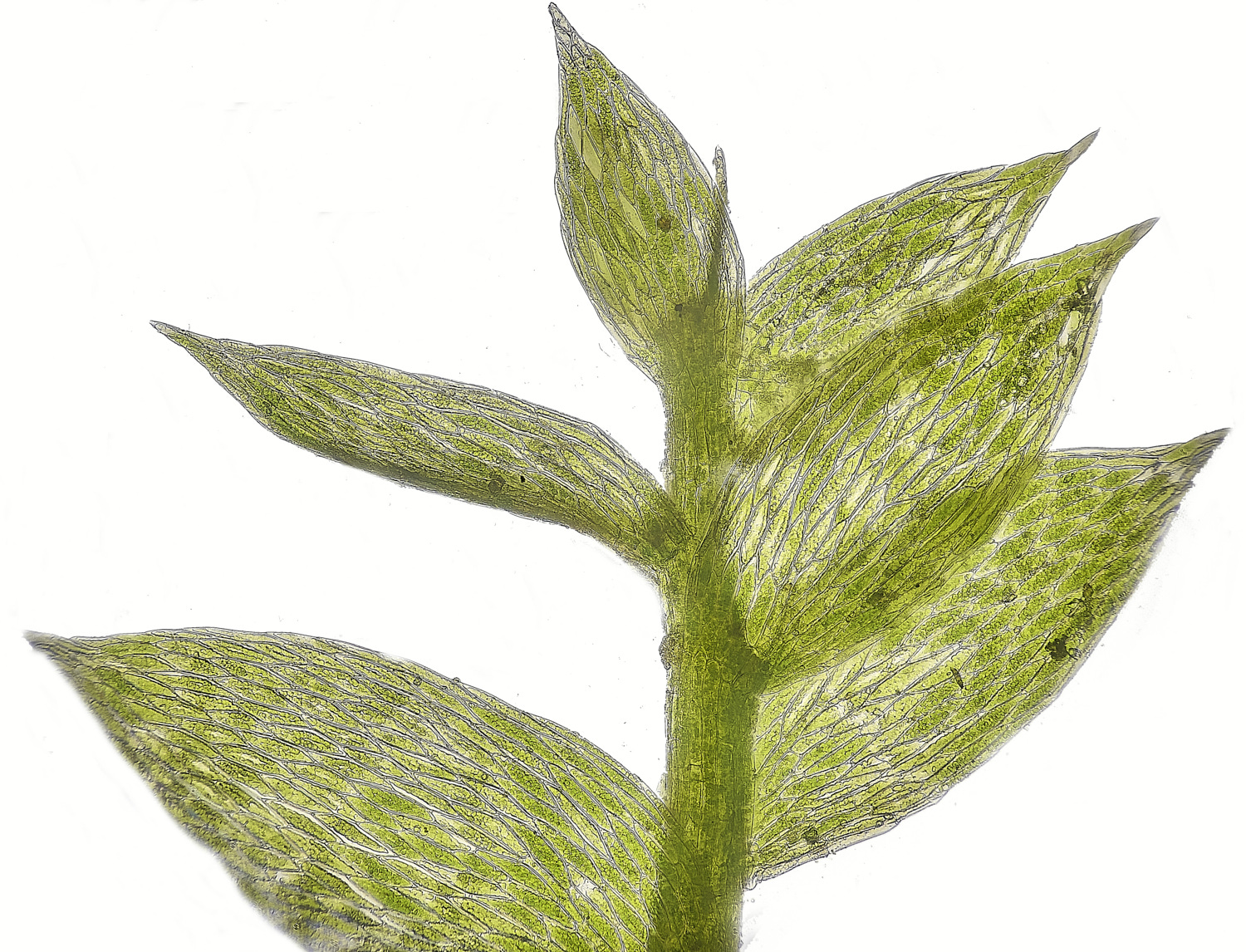
X100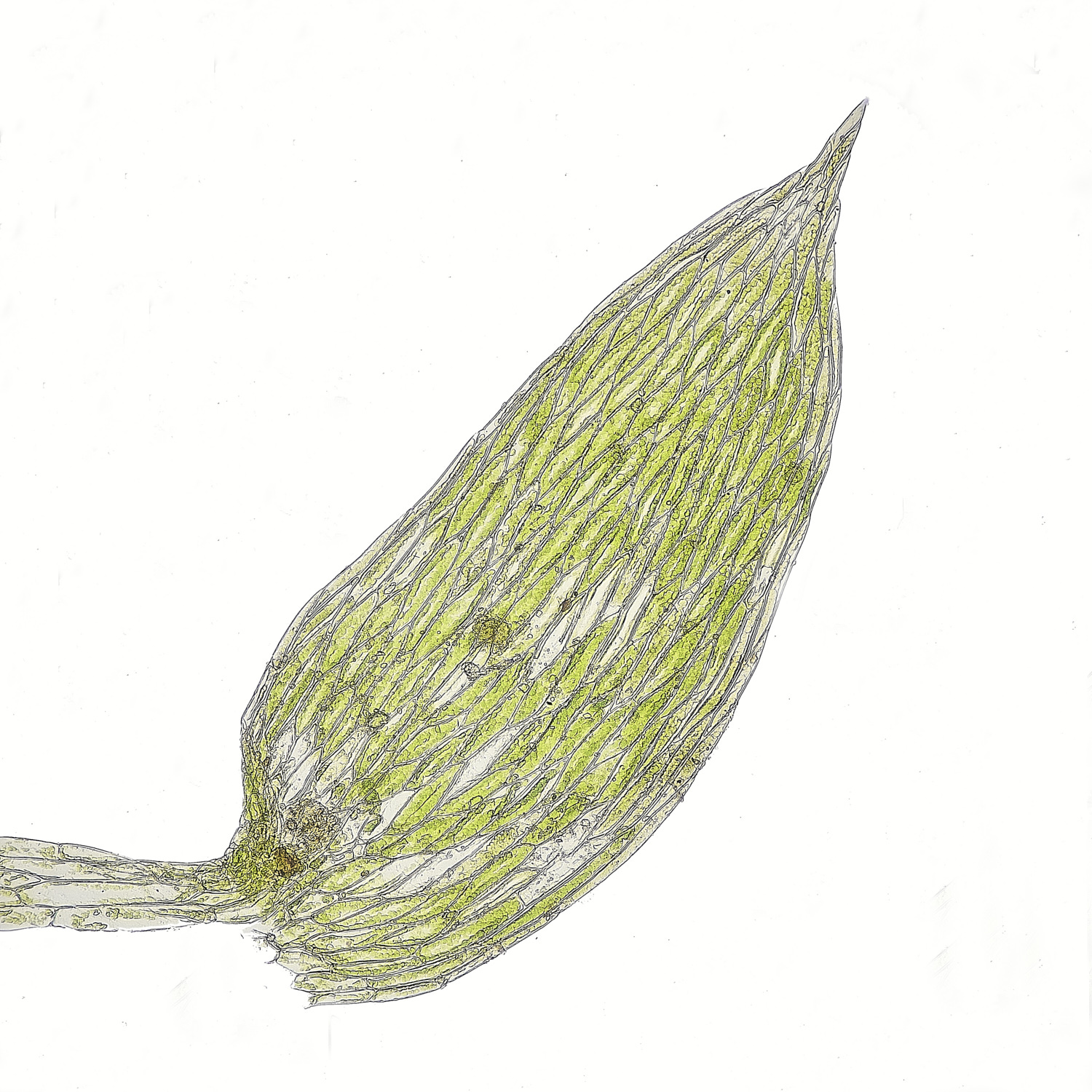
x200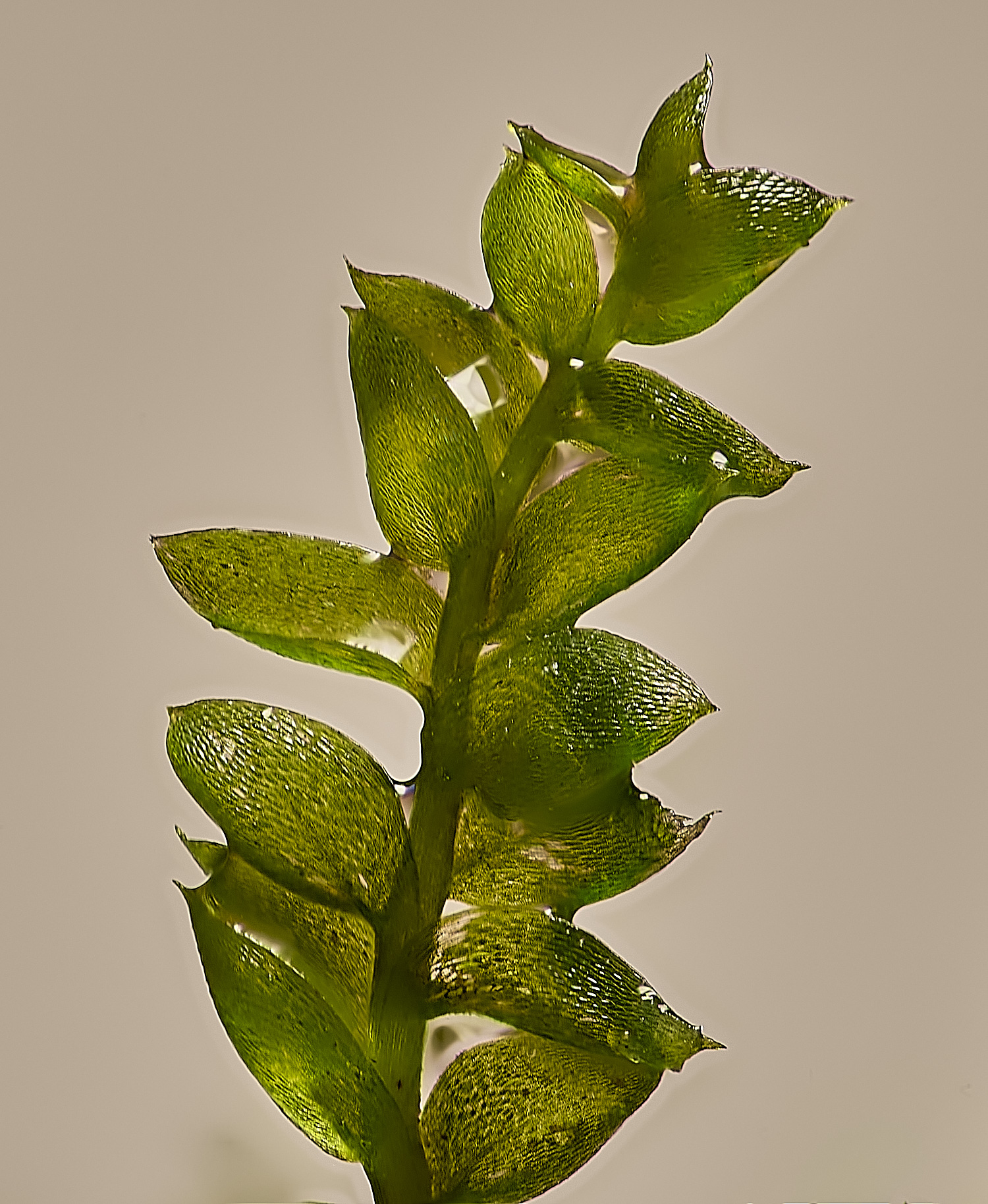
A dull green colour in the field
Although the small double nerve is not apparent the mid leaf cells are barely overlapping in transverse rows.
This point towards
Woodsy Silk-moss (Plagiothecium nemorale)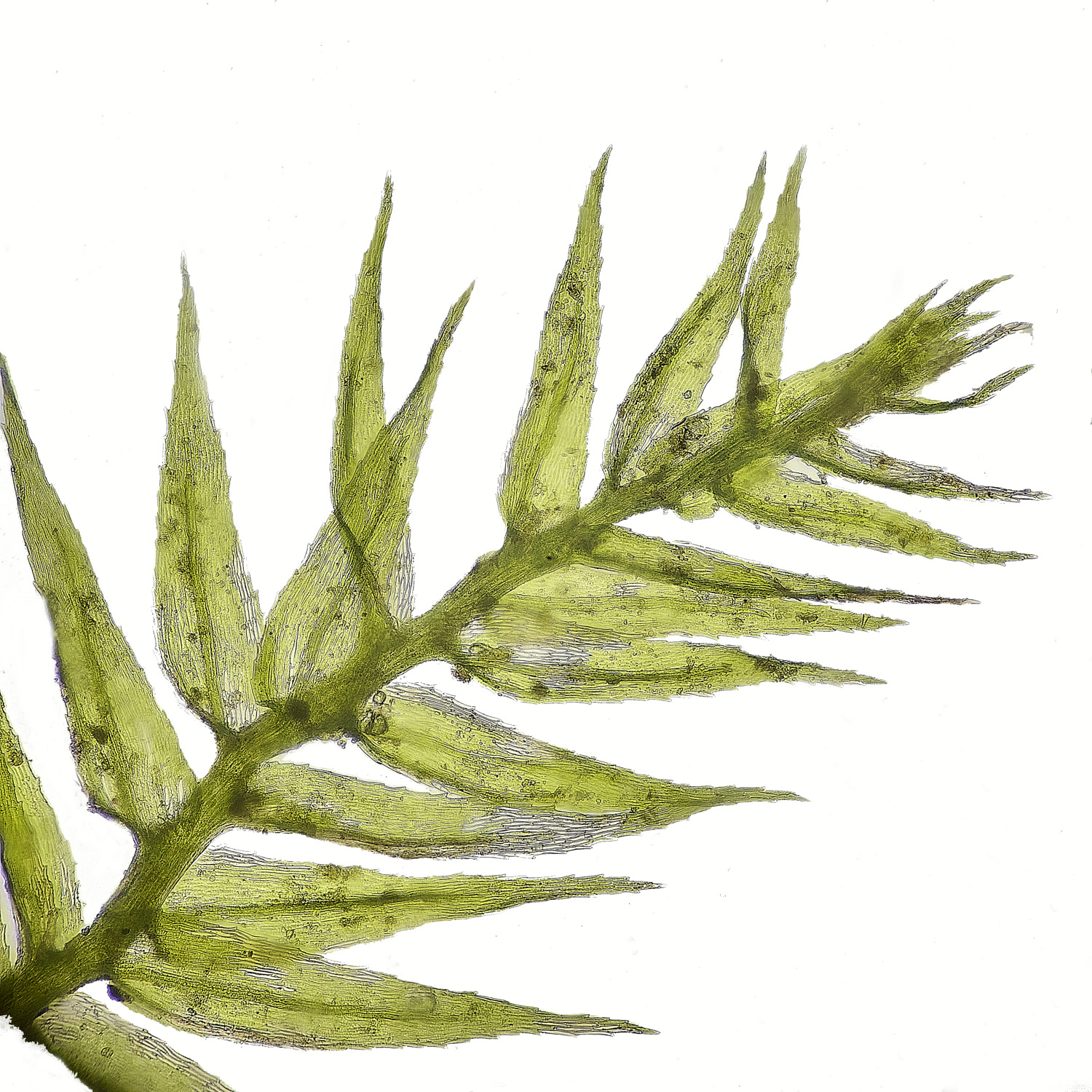
Finely toothed margins and a stout nerve that extends to about two thirds of the leaf.
Dwarf Feather-moss (Rhynchostegiella pumila)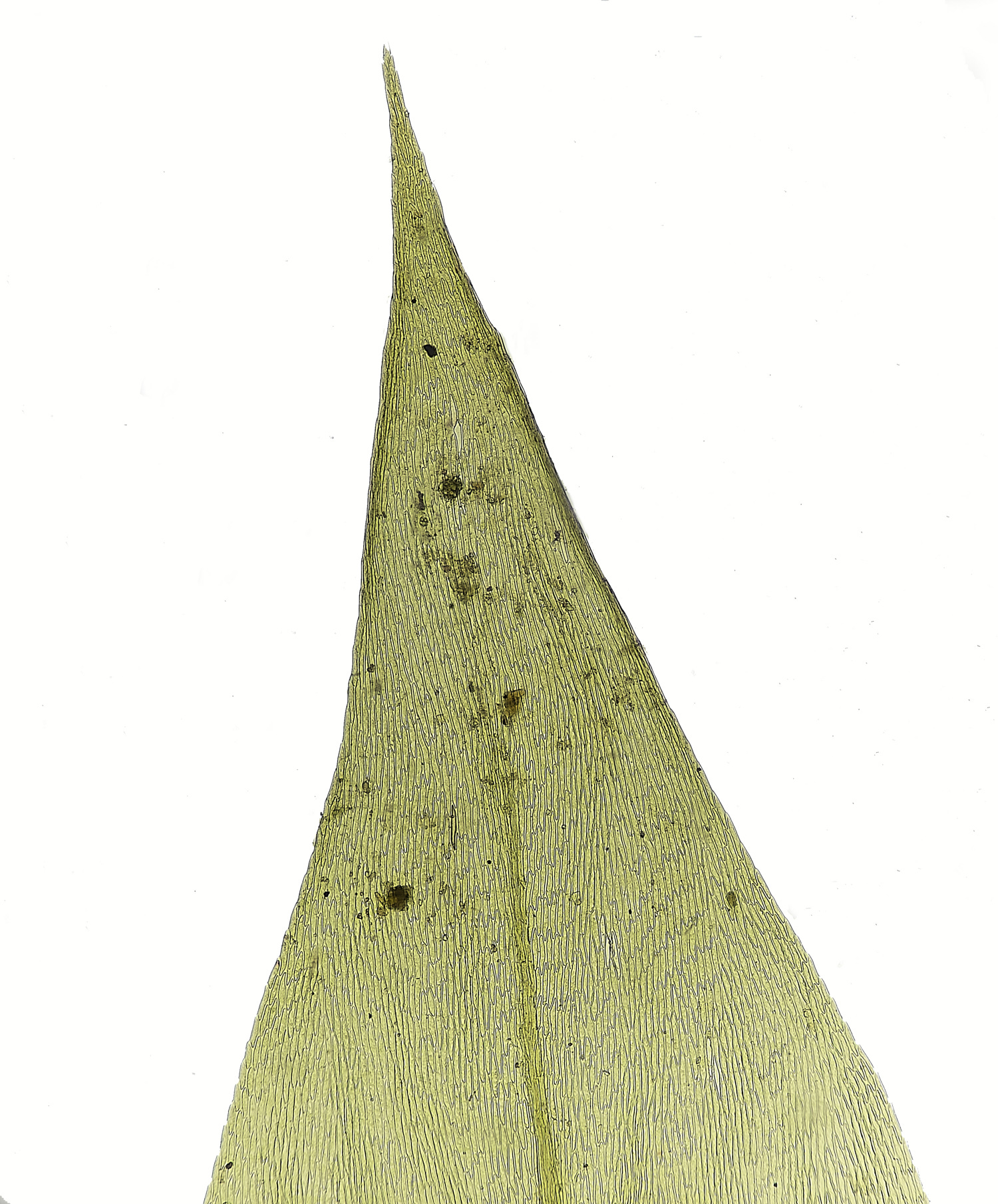
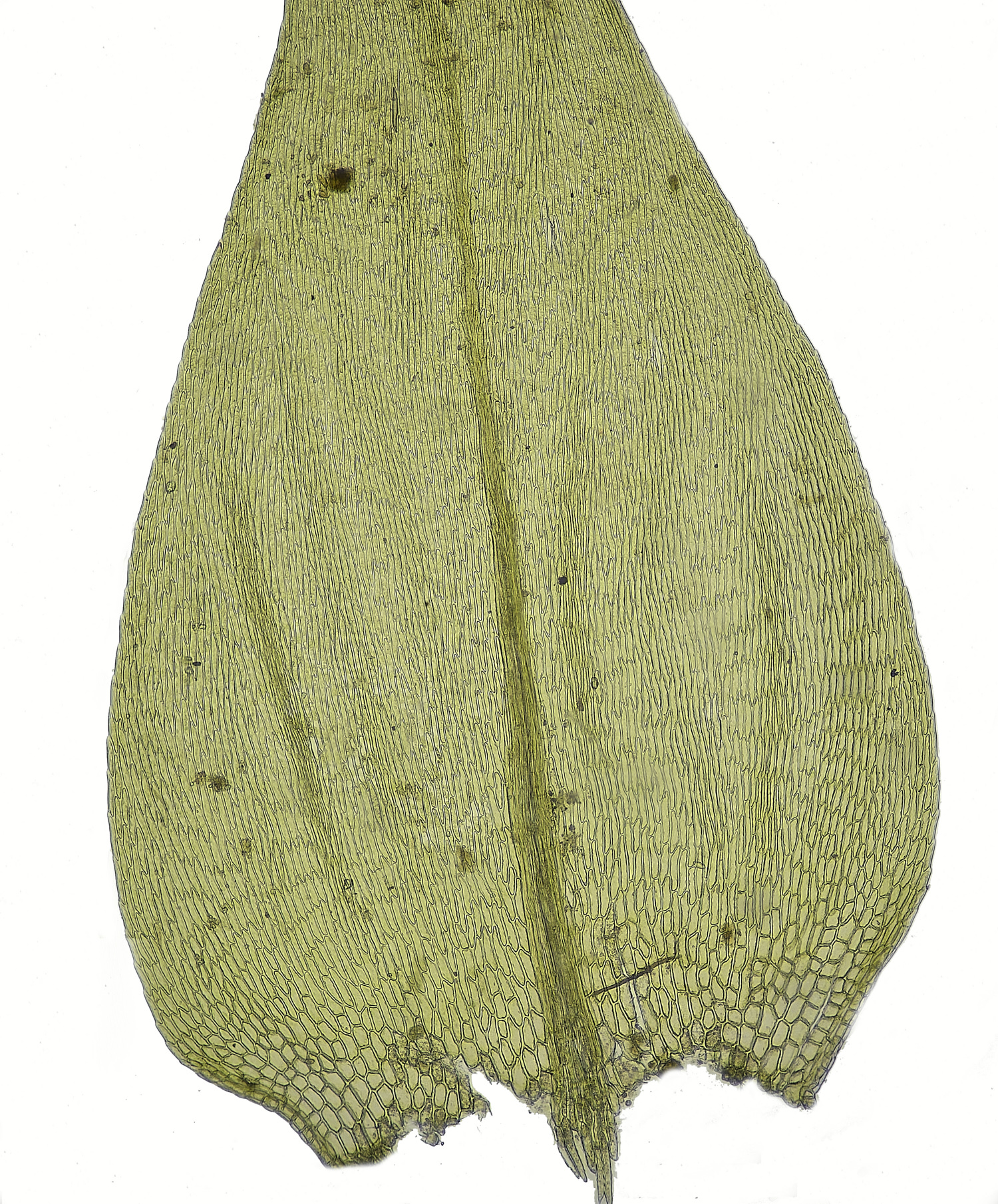
Sand feather-moss (Brachythecium mildeanum)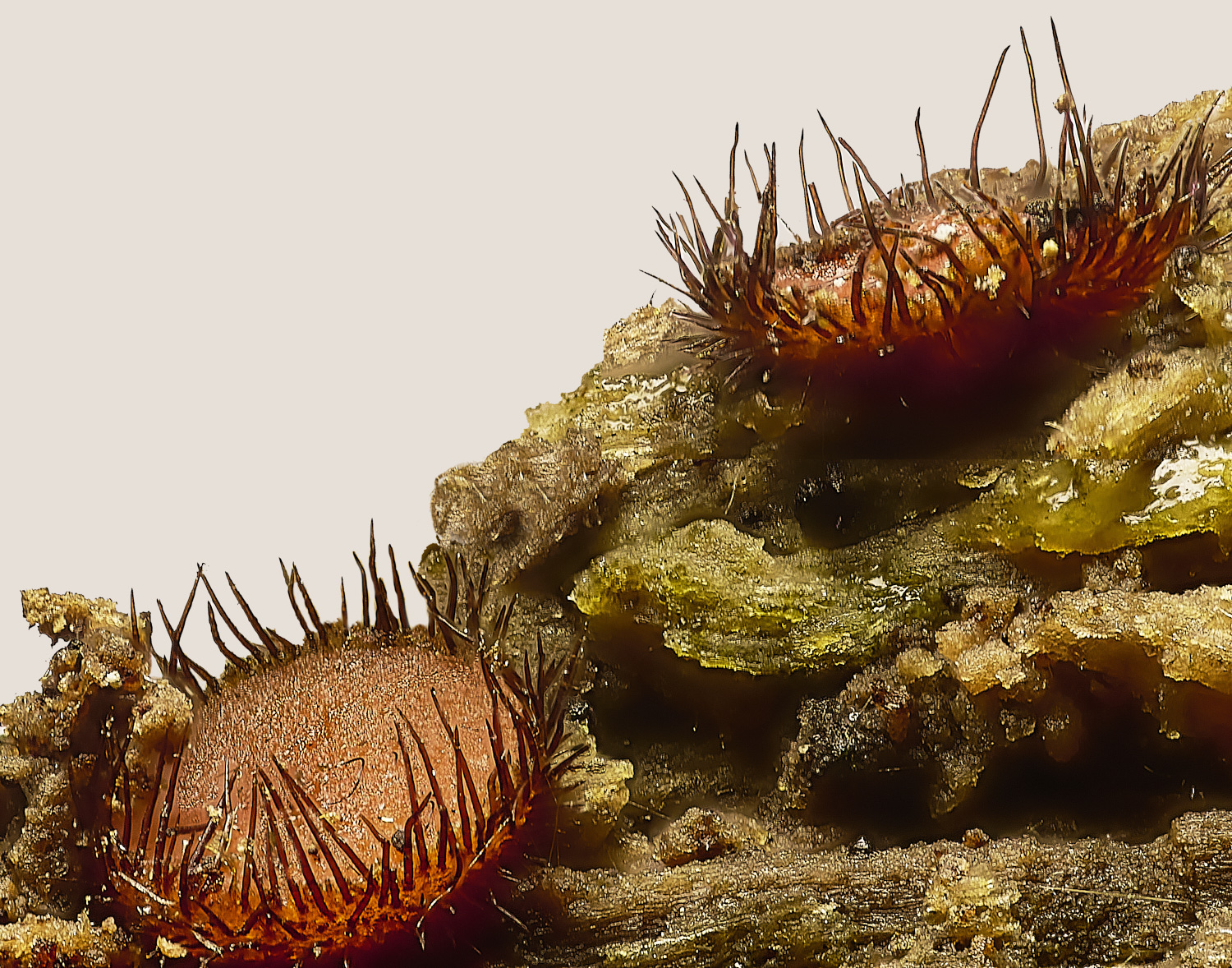
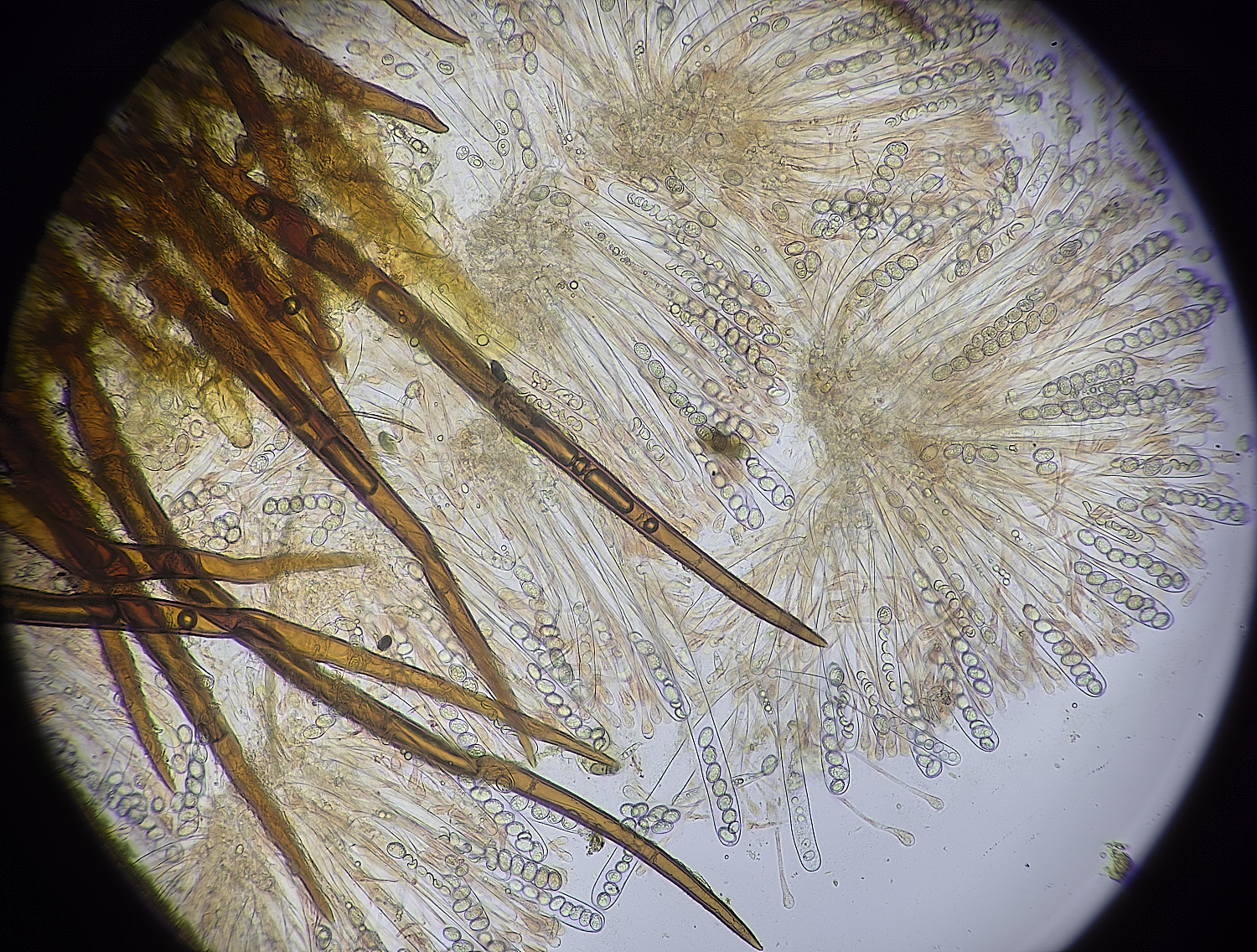
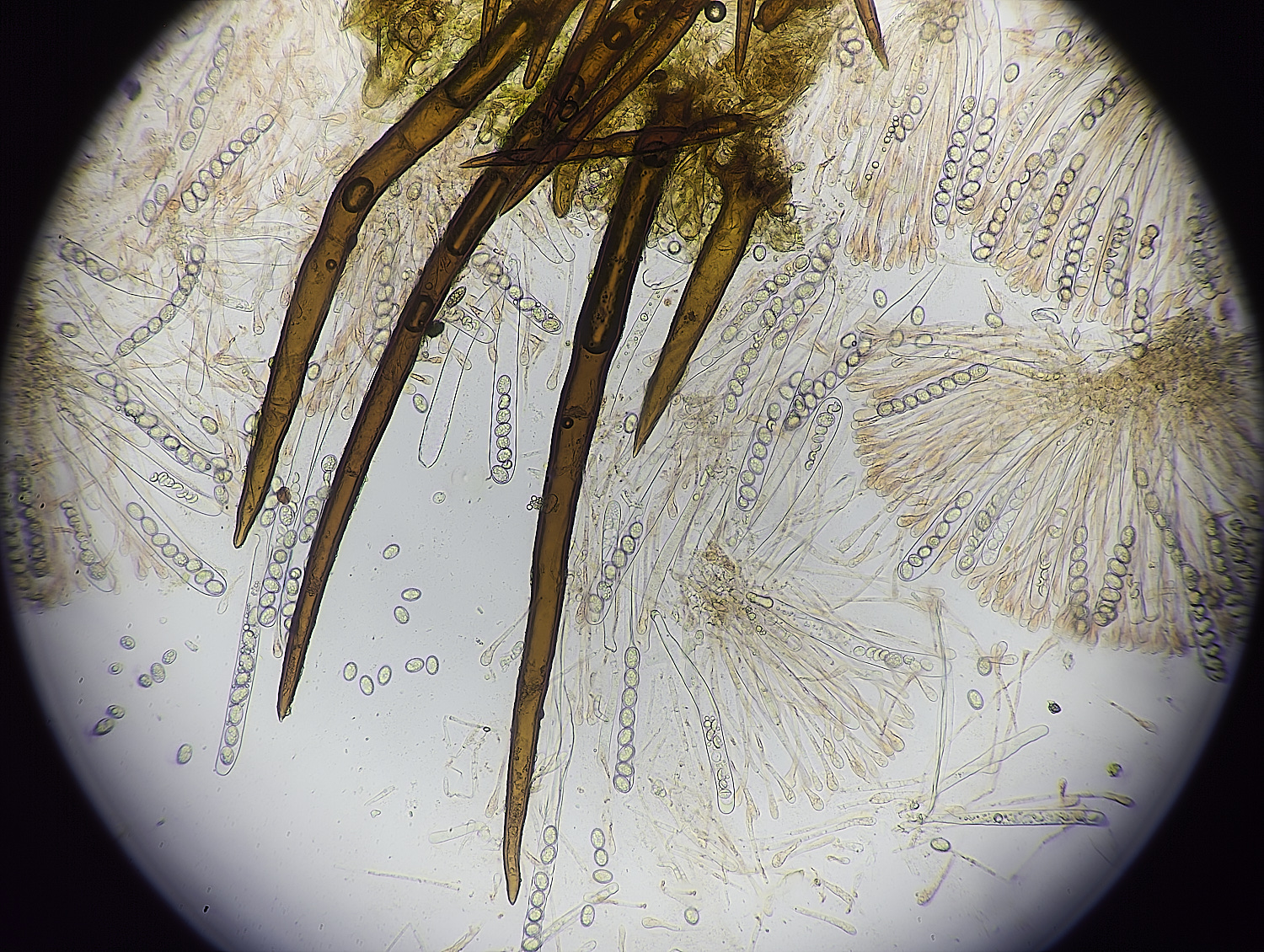
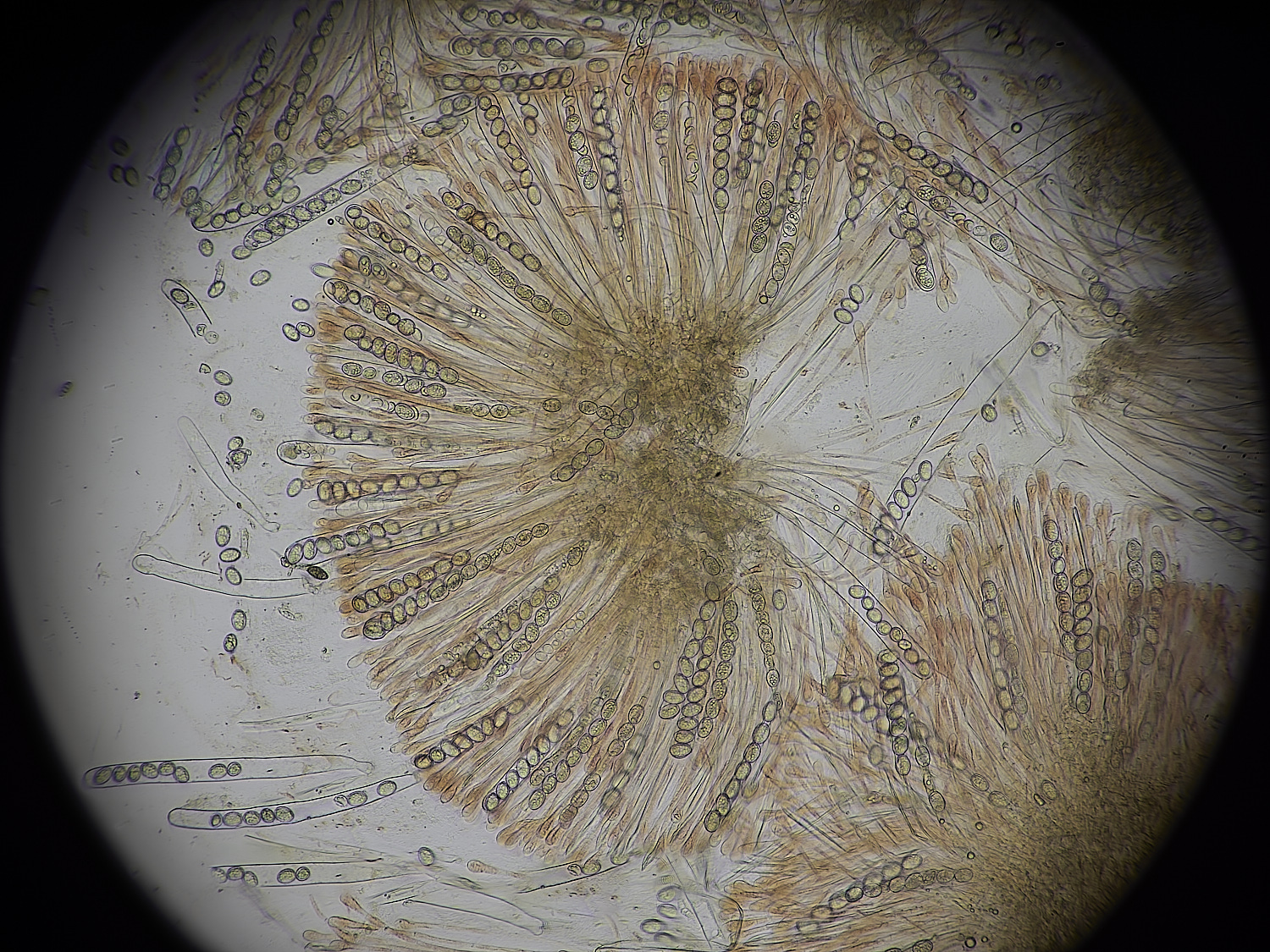

Common Eyelash Fungus (Scutellinia scutellata)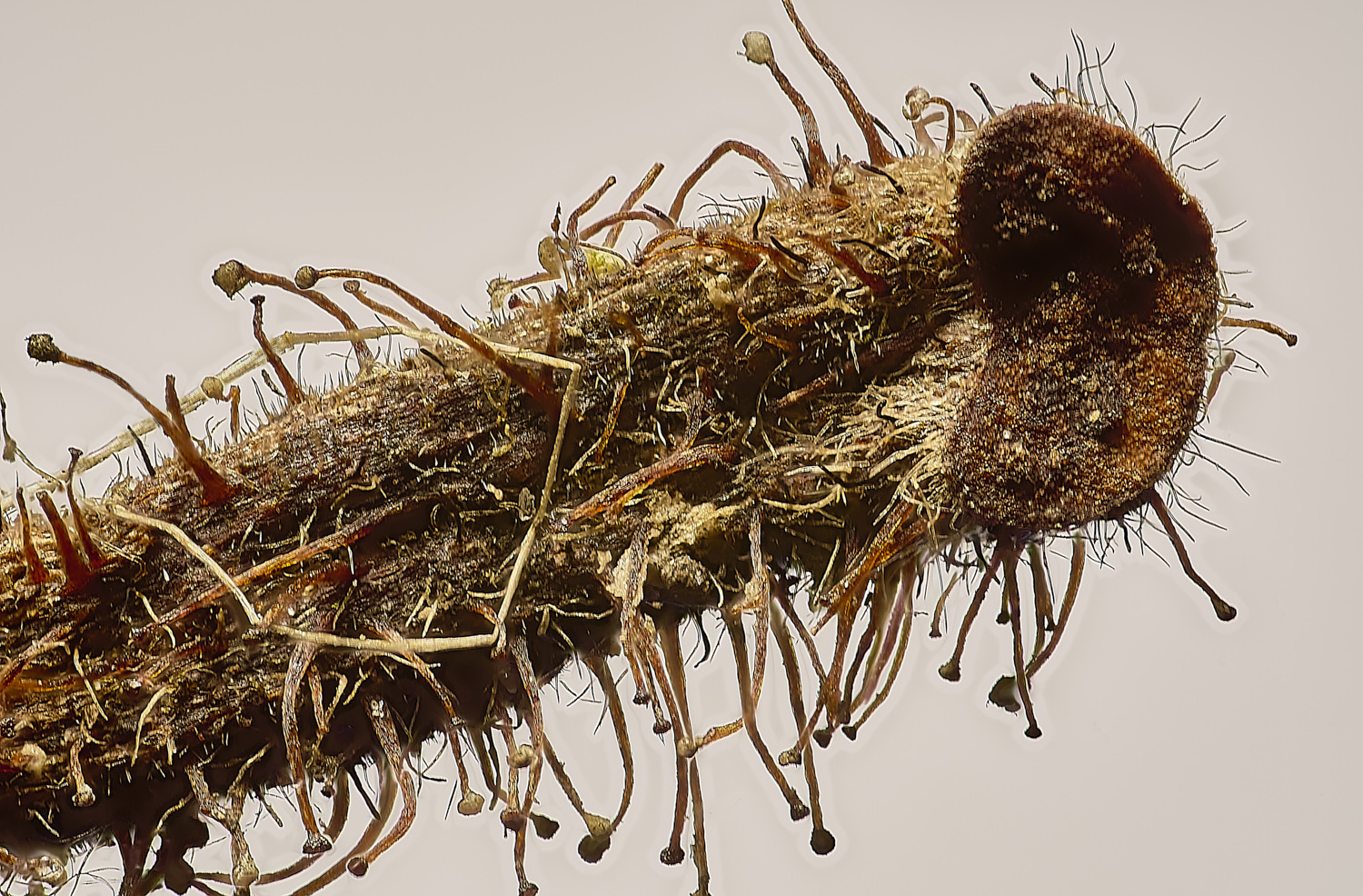
Hairs and stipules on the petiole of a Hazel Leaf (Corylus avellana)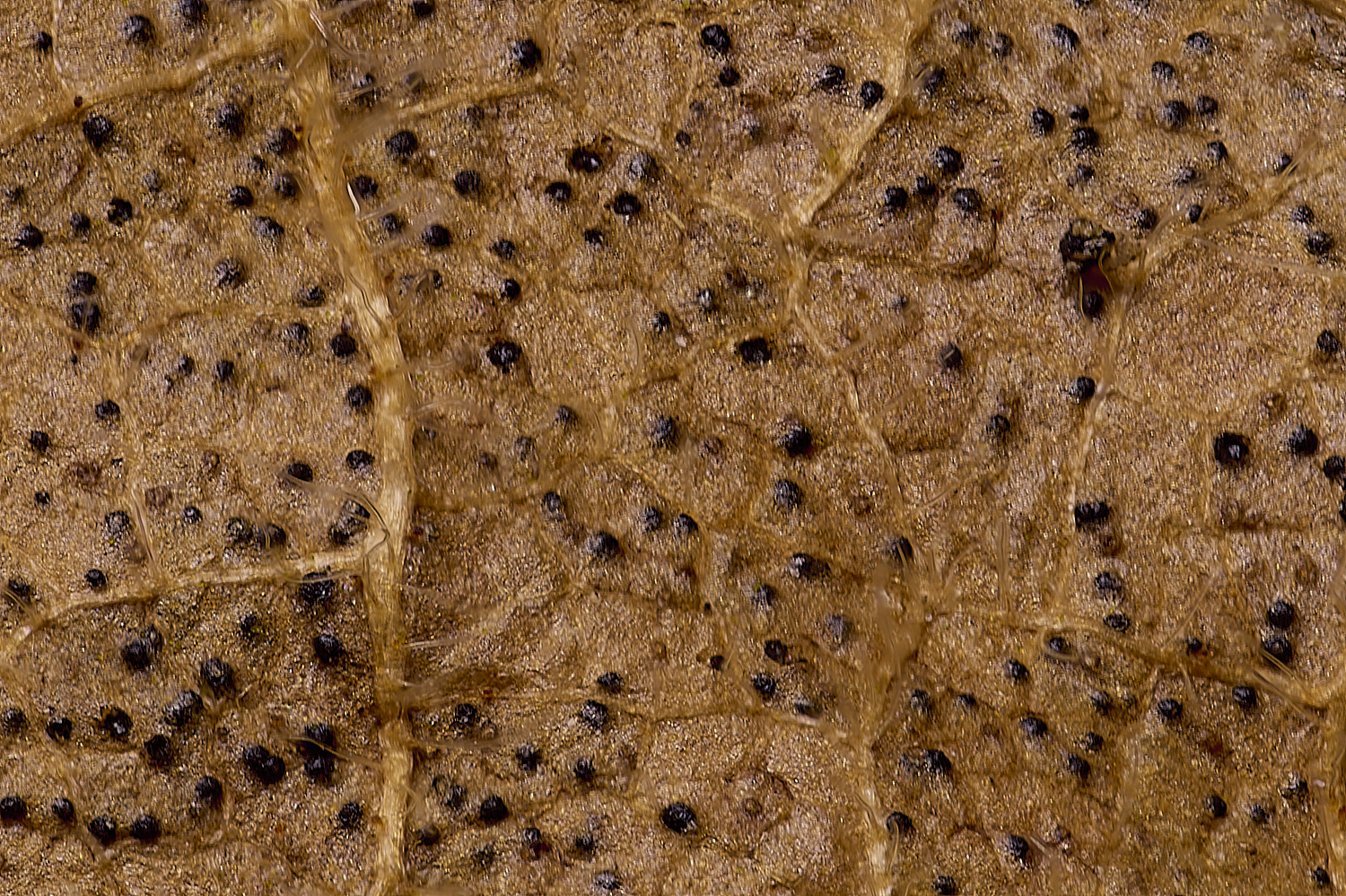
Fungus Sp on the Hazel leaf itself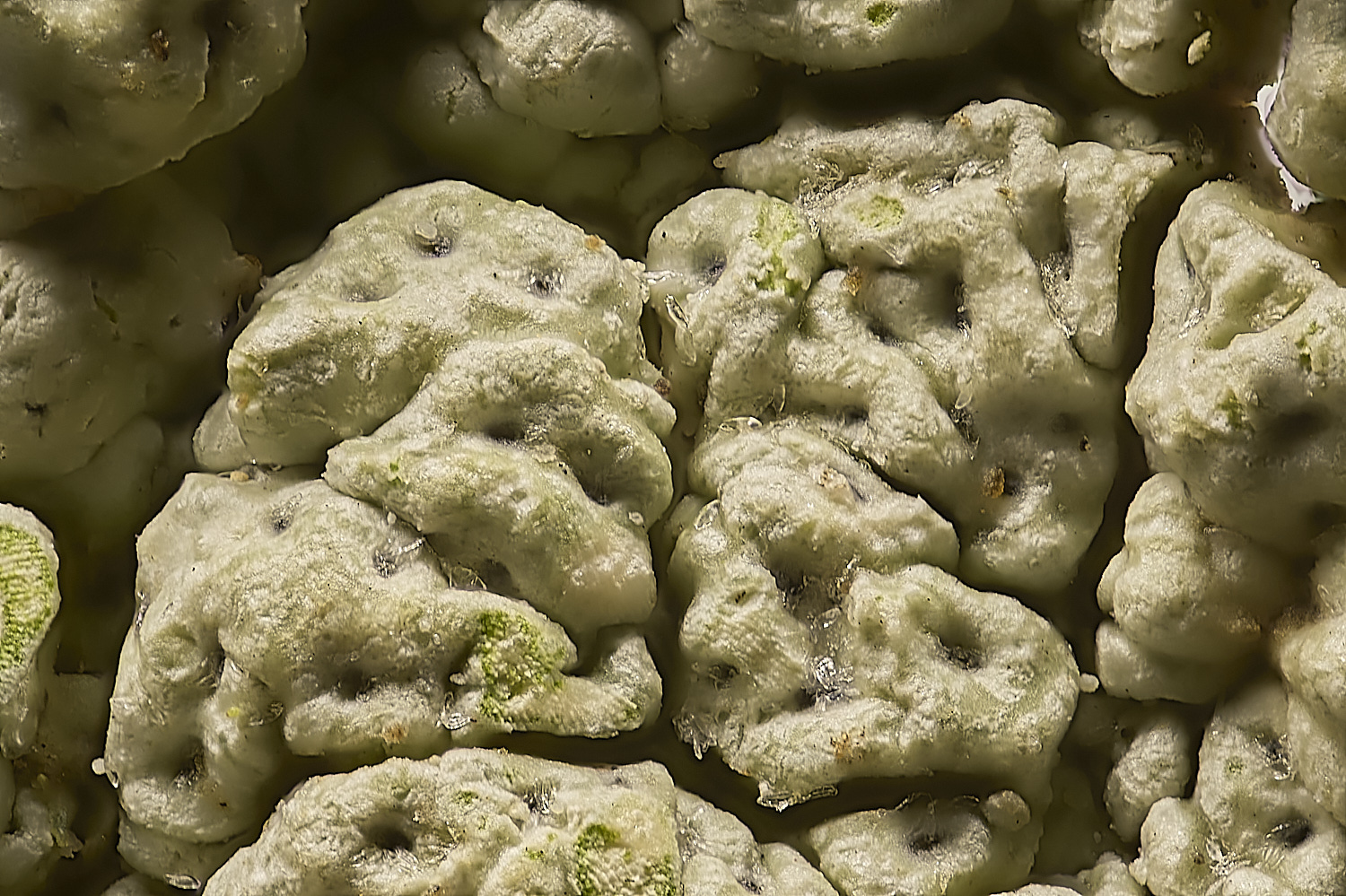
Lichen Sp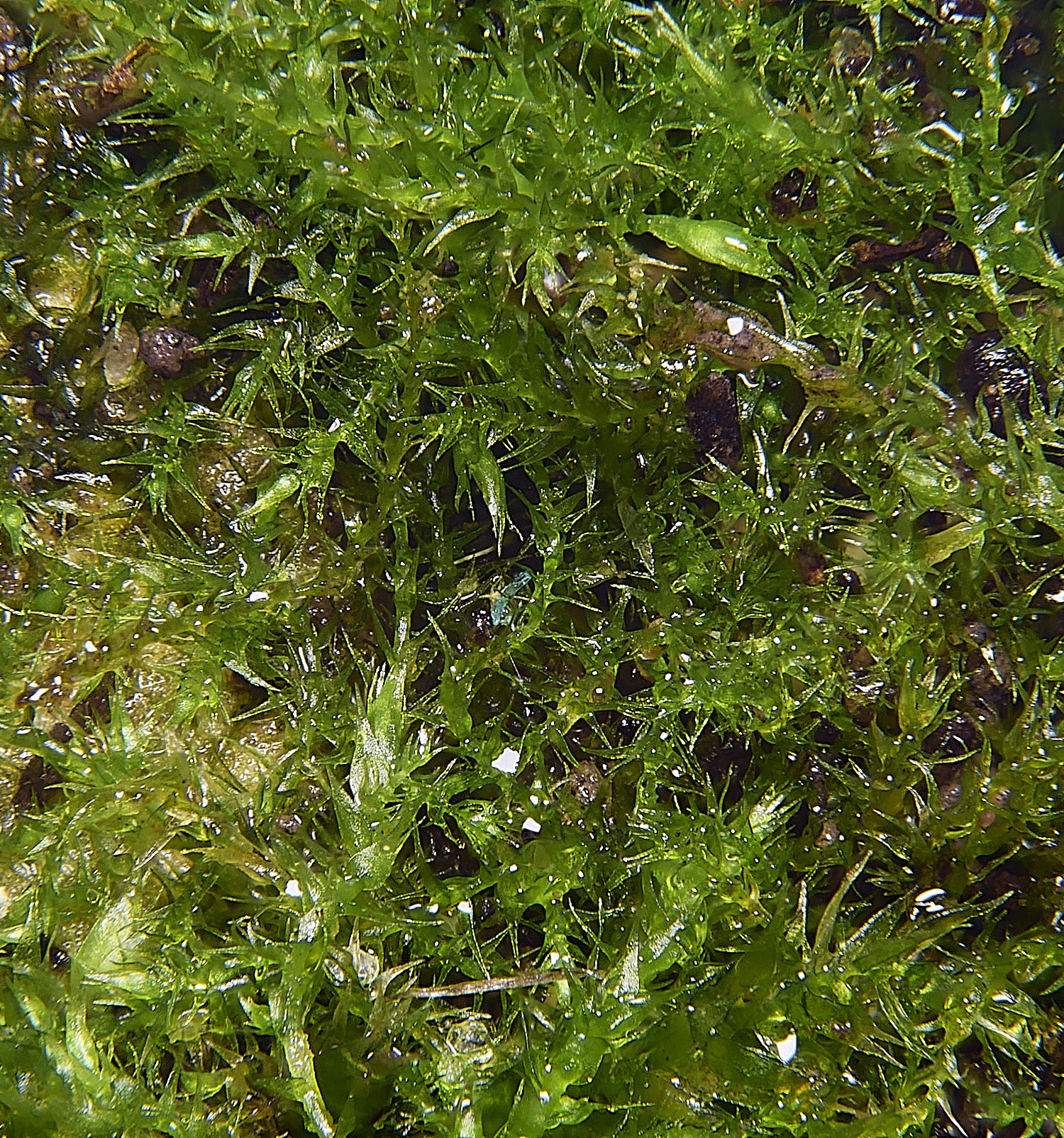
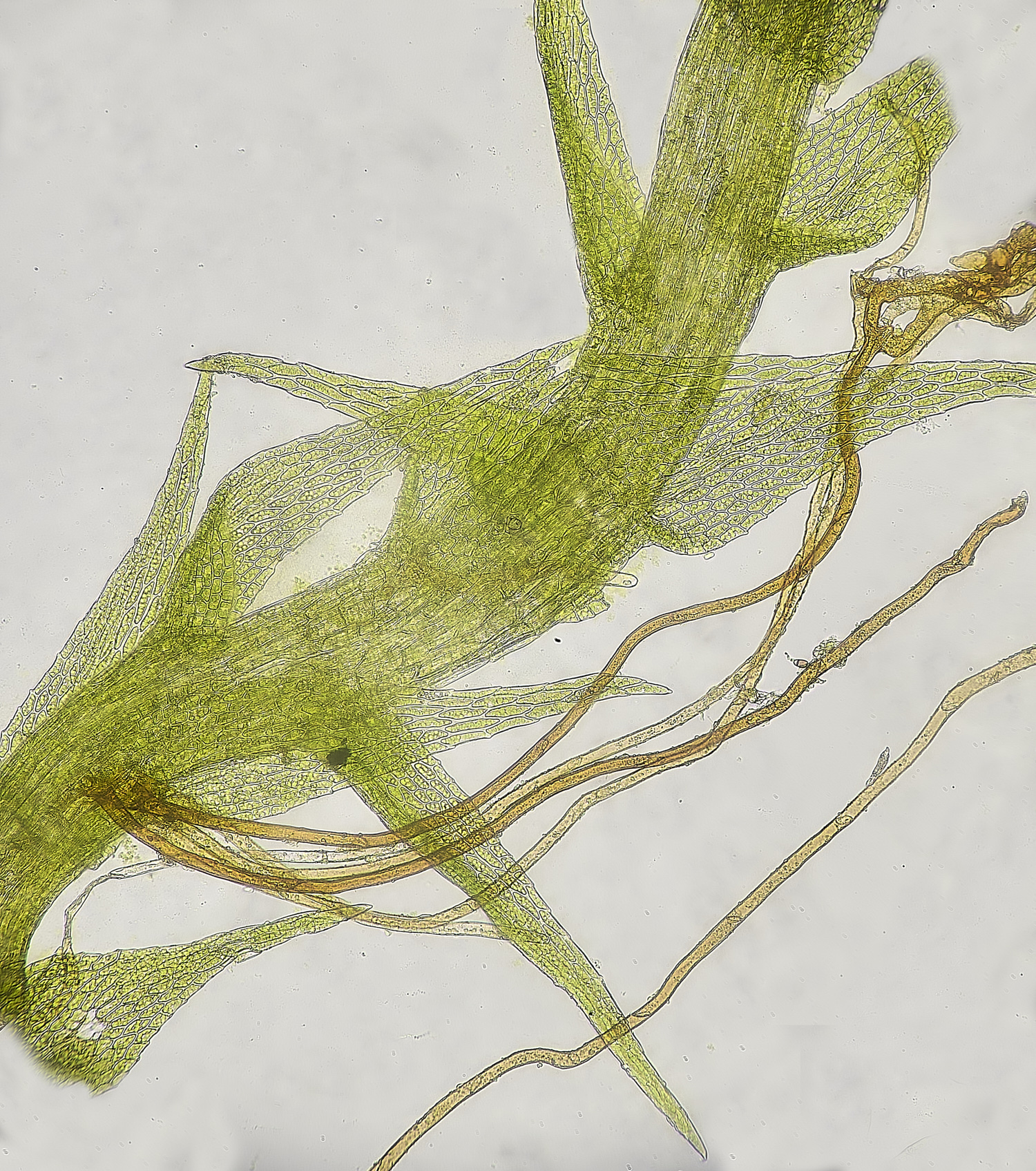
Creeping Feather-moss (Amblystegium serpens)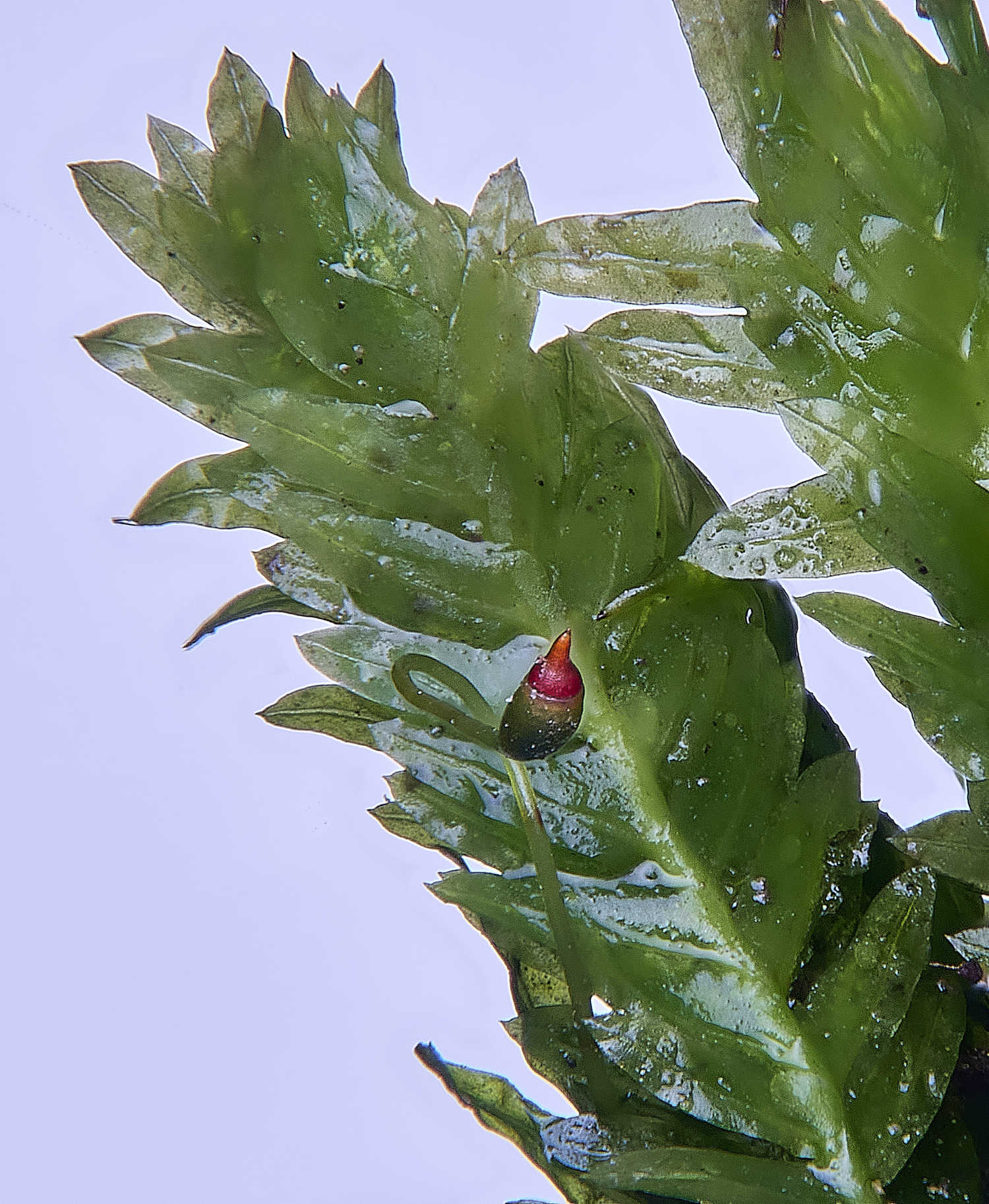
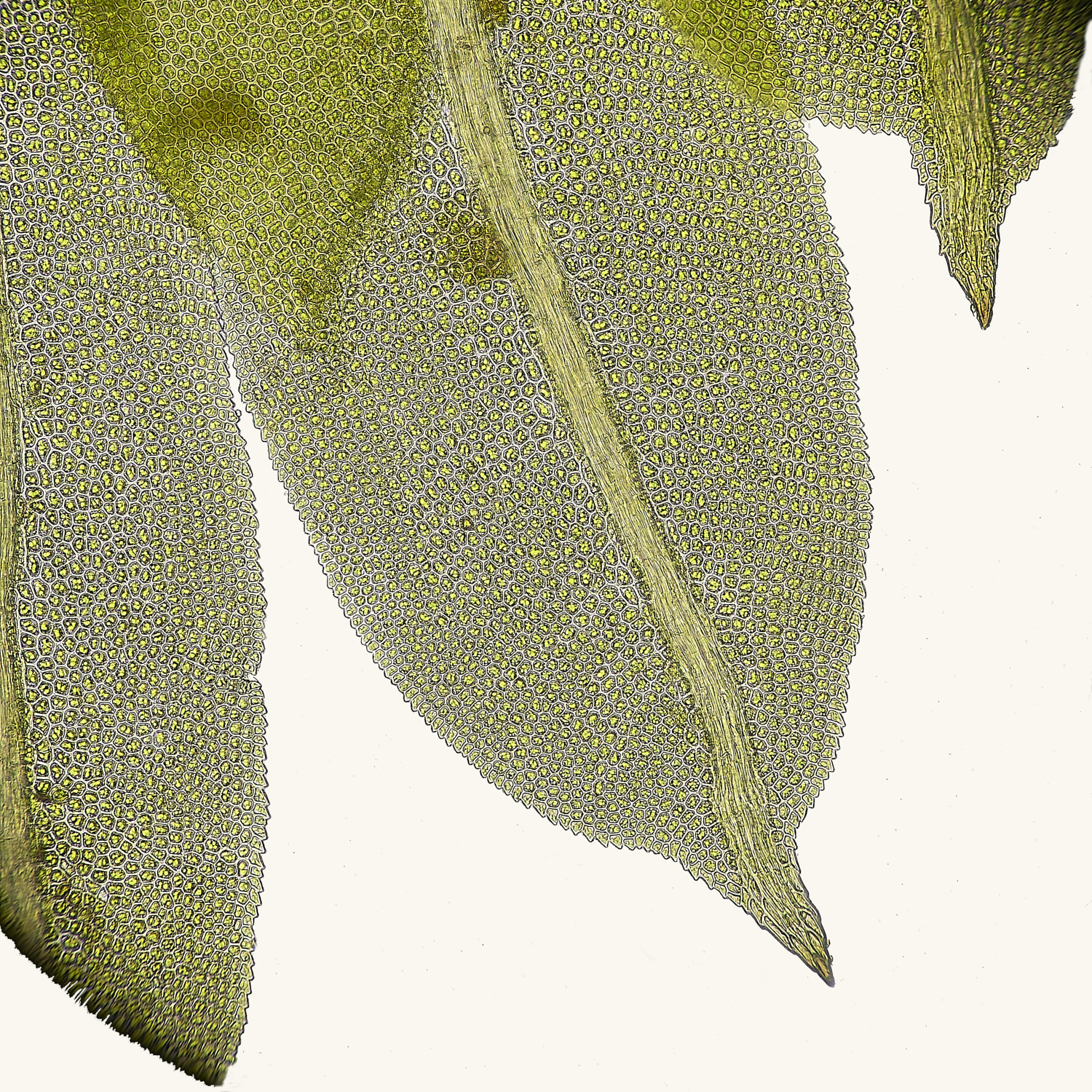
Short-leaved Pocket-moss (Fissidens incurvus)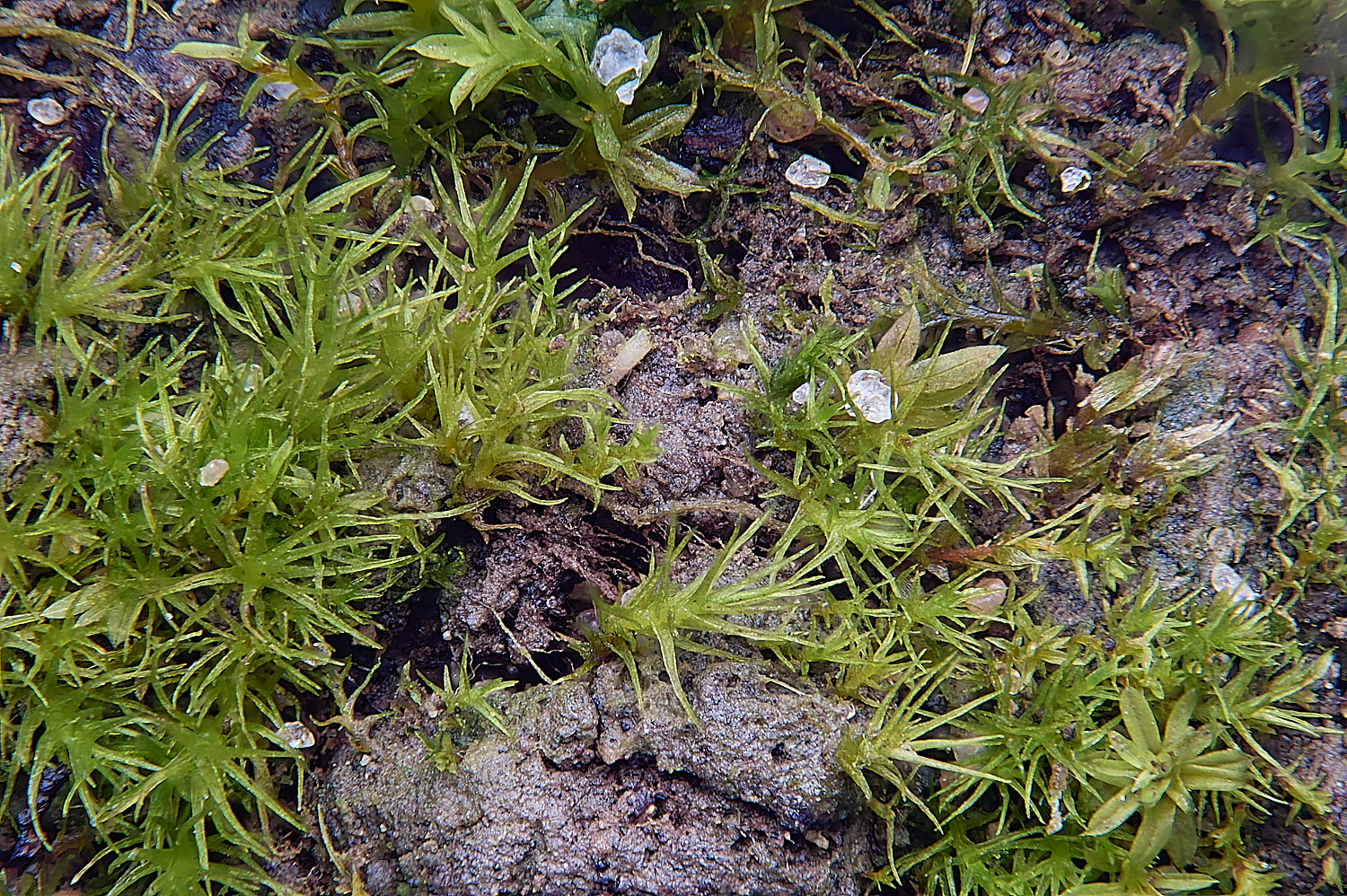
Variable Forklet-moss (Dicranella varia)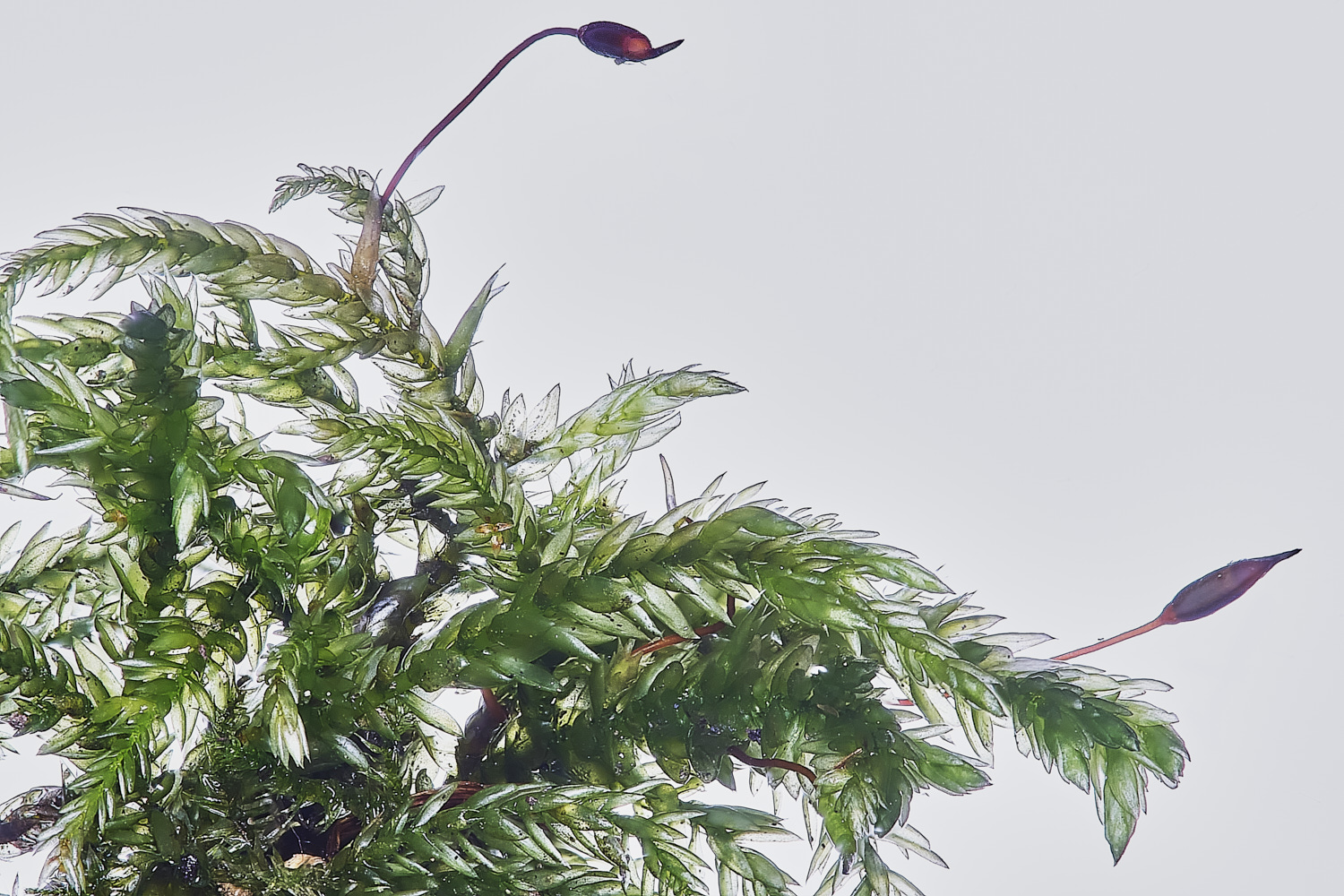
Larger Mouse-tail Moss (Isothecium alopecuroides)
Dillington
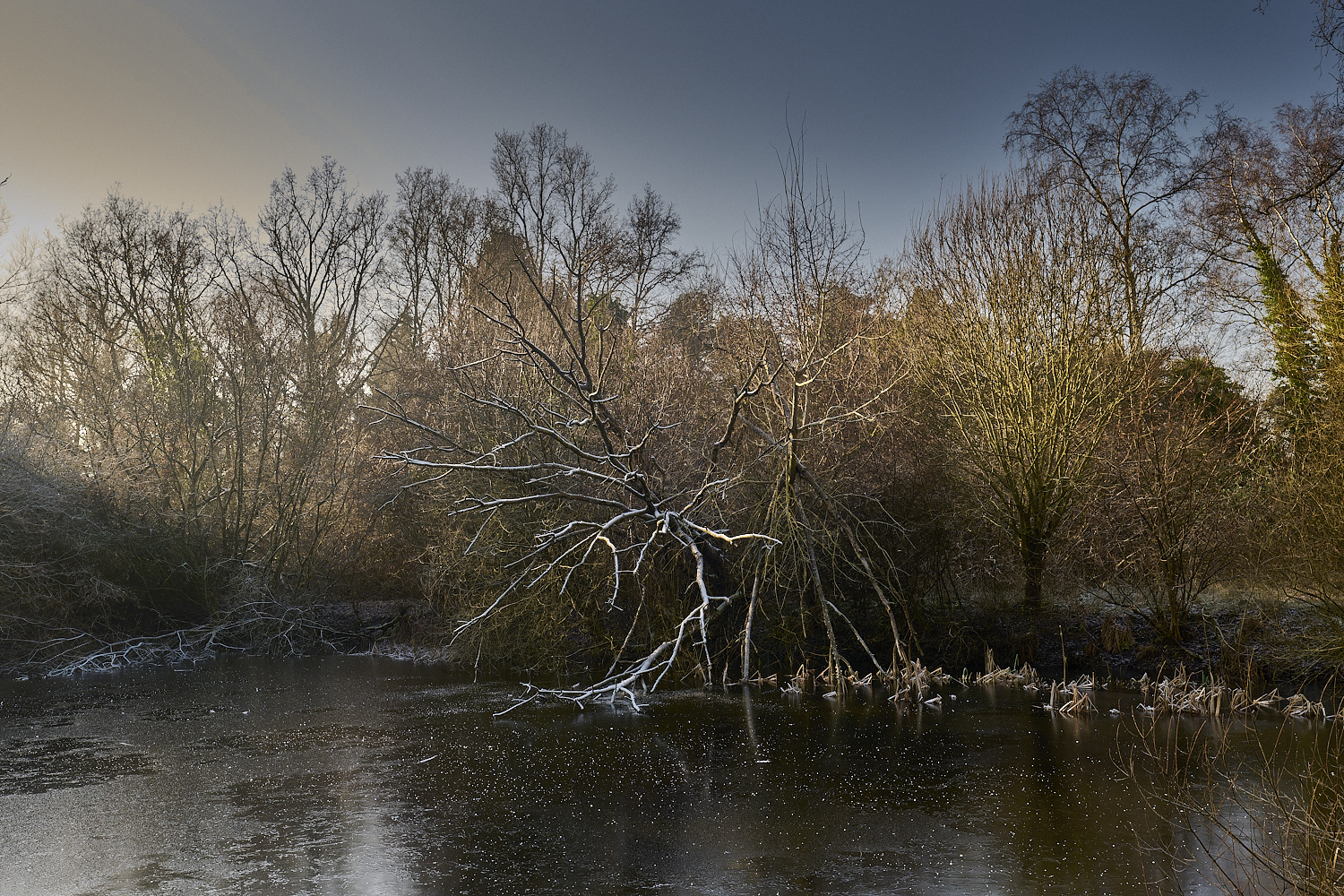

Small Moss Oysterling (Arrhenia retiruga)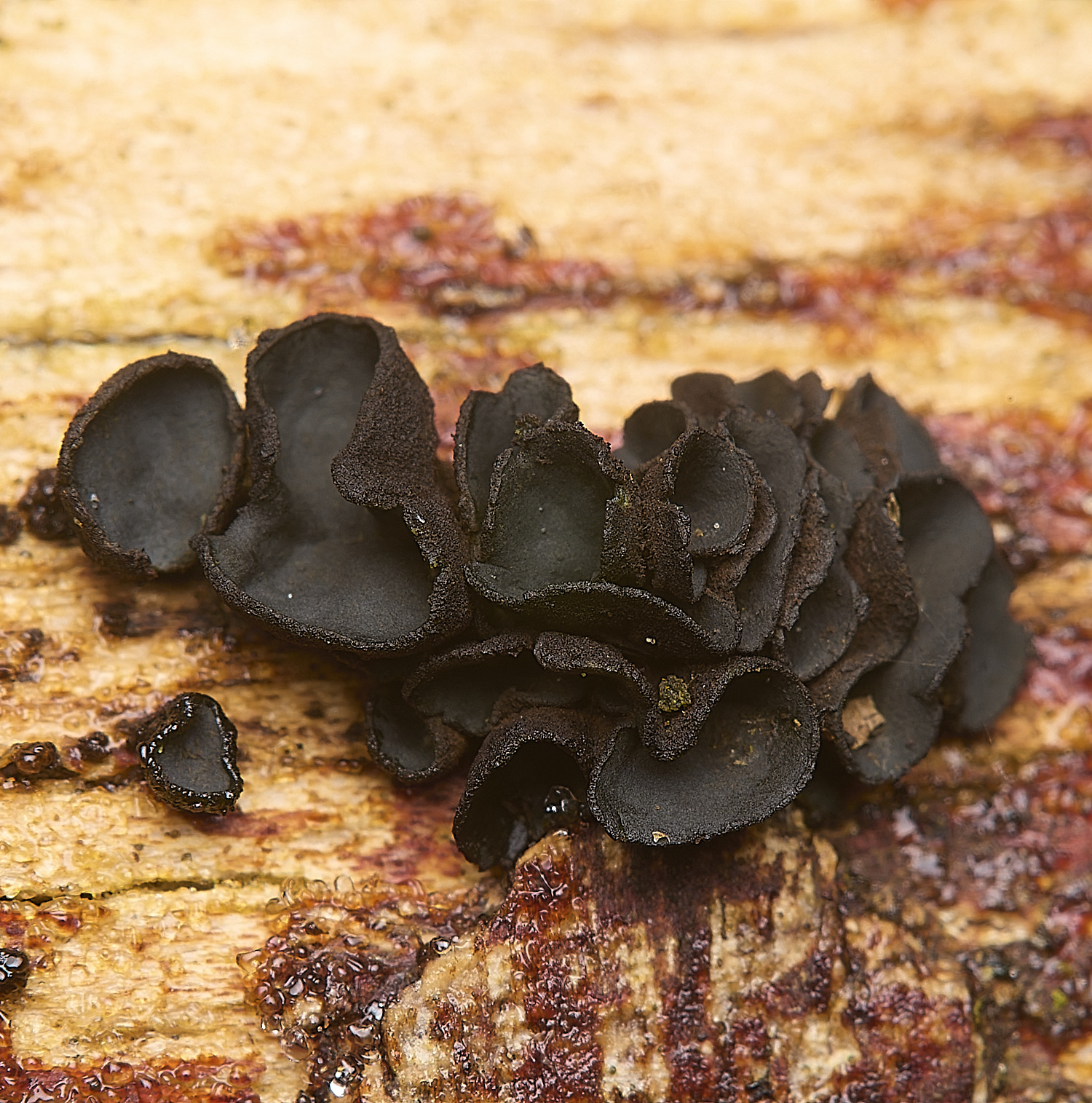
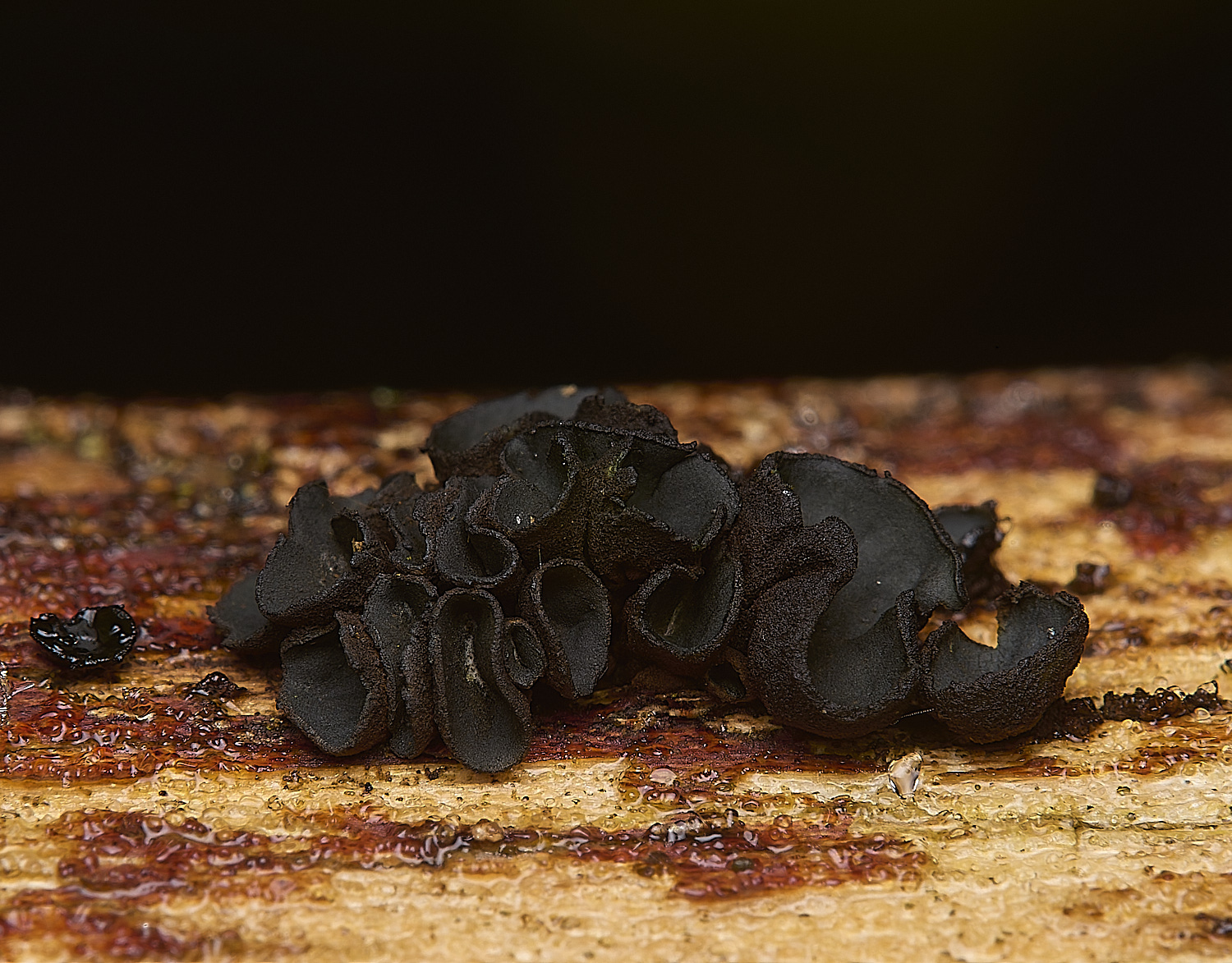
JE posted this on the BMS facebook page for an id
SW then confirmed it.
Ionomidotis fulvotingens
Judging from other images on the internet this species can be yellow, green/orange or black?
A very fine inwardly folding disco
Something new for Norfolk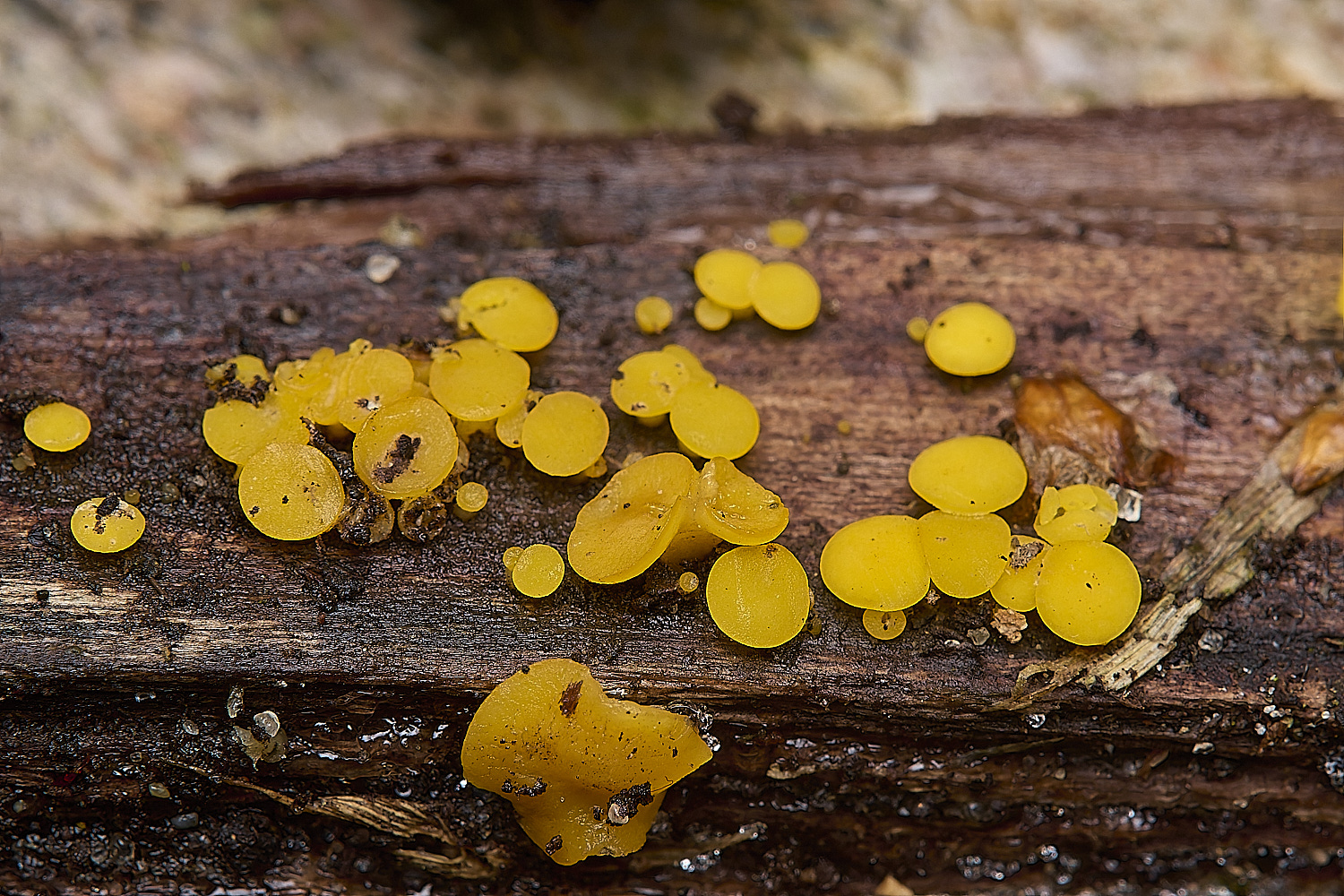
Sulphur Disco (Calycina claroflava)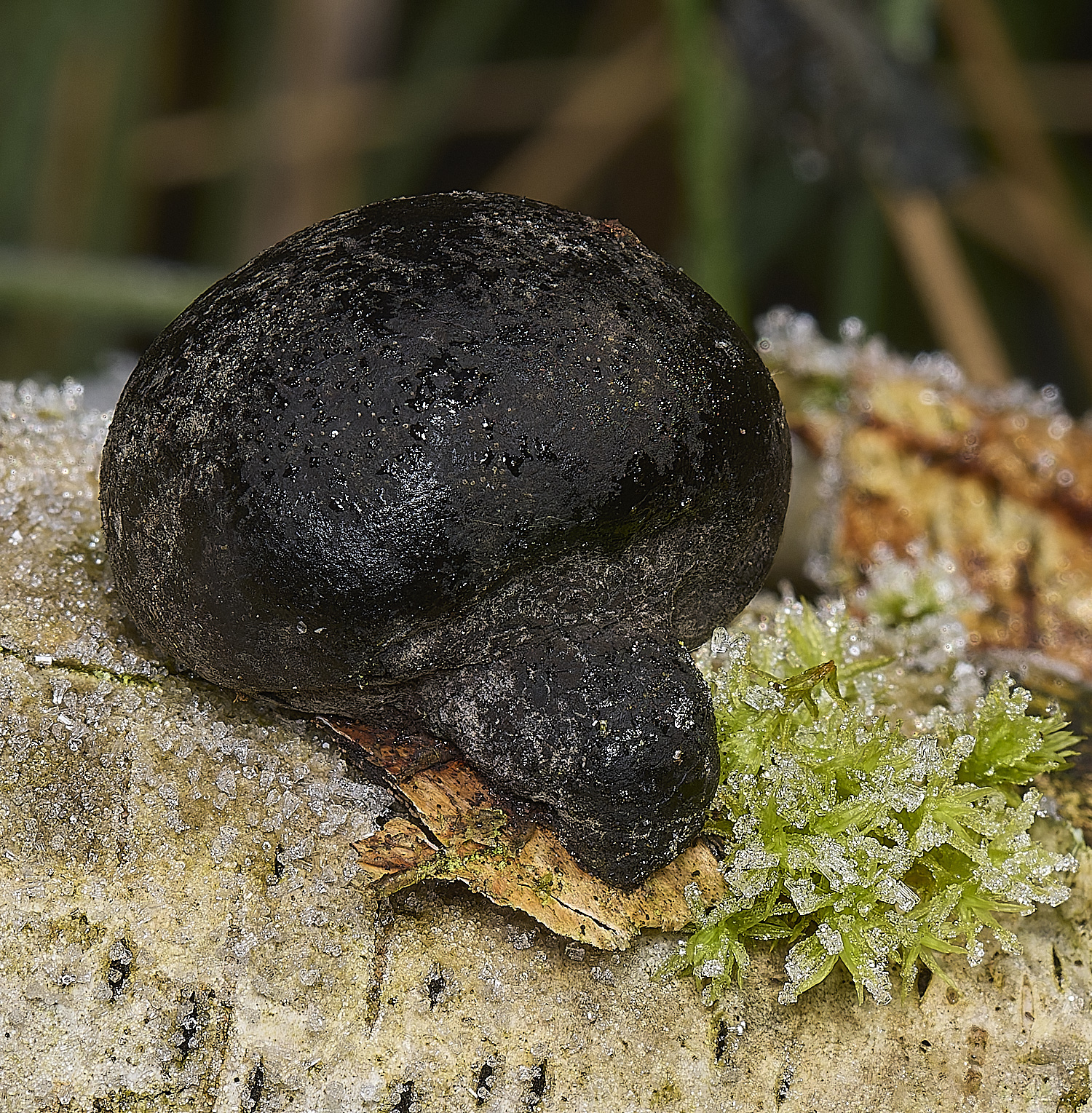
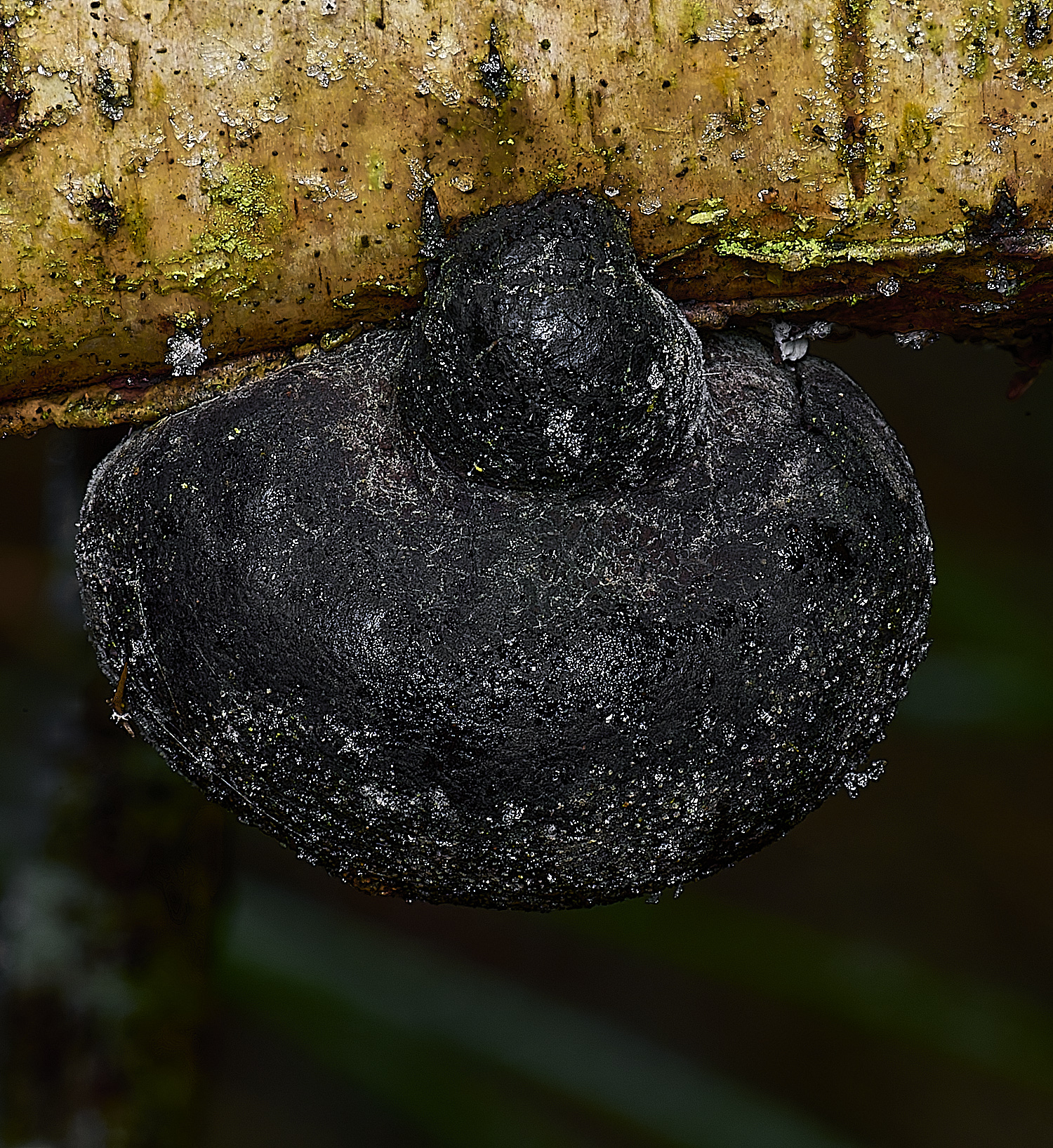
Daldinia Sp
From Tony M
The small 'cramp ball' on the fallen birch trunk was odd - Daldinia decipiens appears to be the only Daldinia with a stipe on Betula.
KOH pigment purple with ascospores dehiscing nicely so you would have thought job done. BUT the spore size is too small at 12.5 x 6.1 Q=2.1 (n=23). Ref:
The provisional key published by Fournier & Stadler in 2009 and Polyphasic taxonomy of Daldinia, Stadler et al 2014. Not sure where we go from here (& interestingly,
there is decent ITS barcode available on Genbank MB474112 referenced by Stadler et al).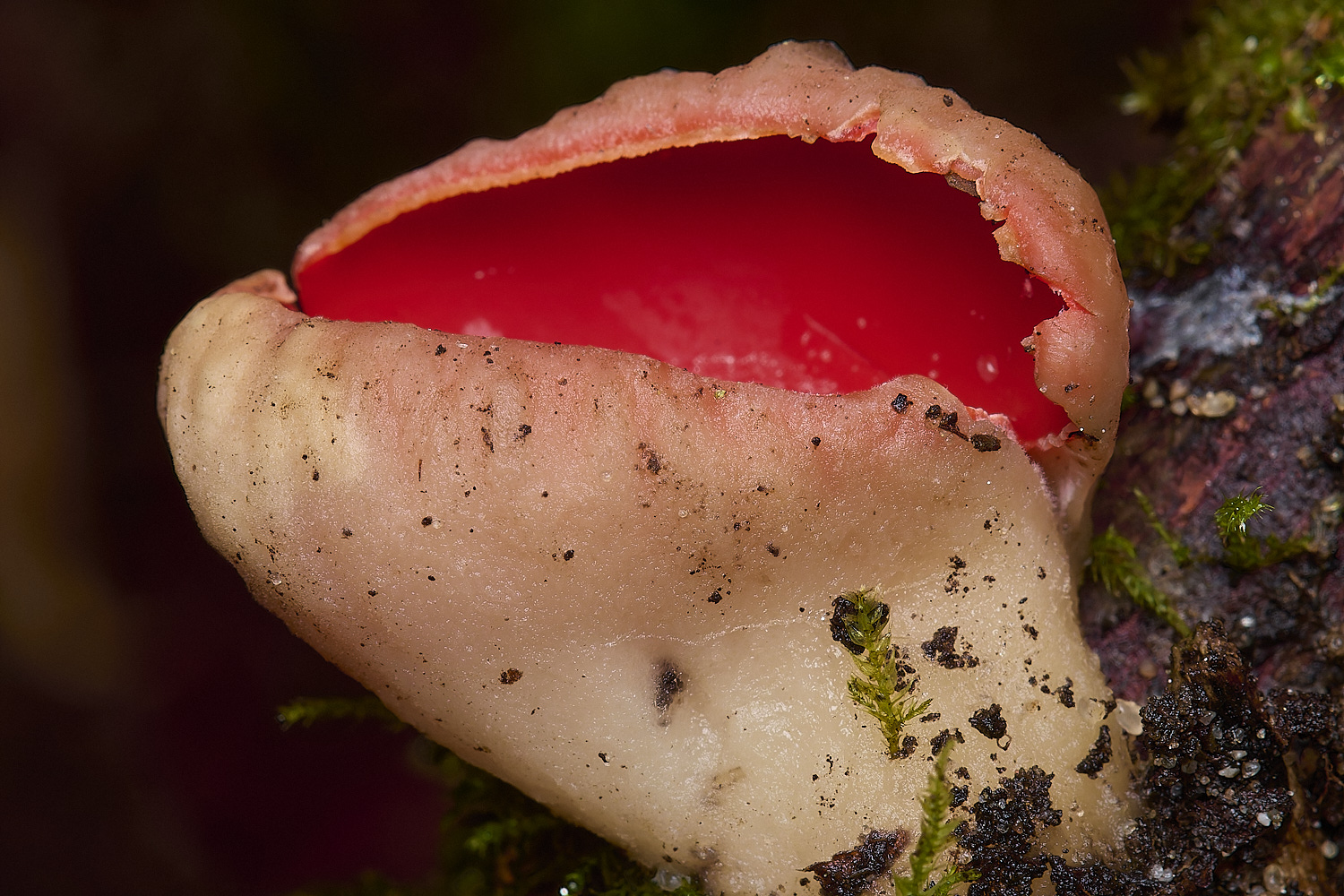


Matted hairs
Ruby Elfcup (Sarcoscypha coccinea)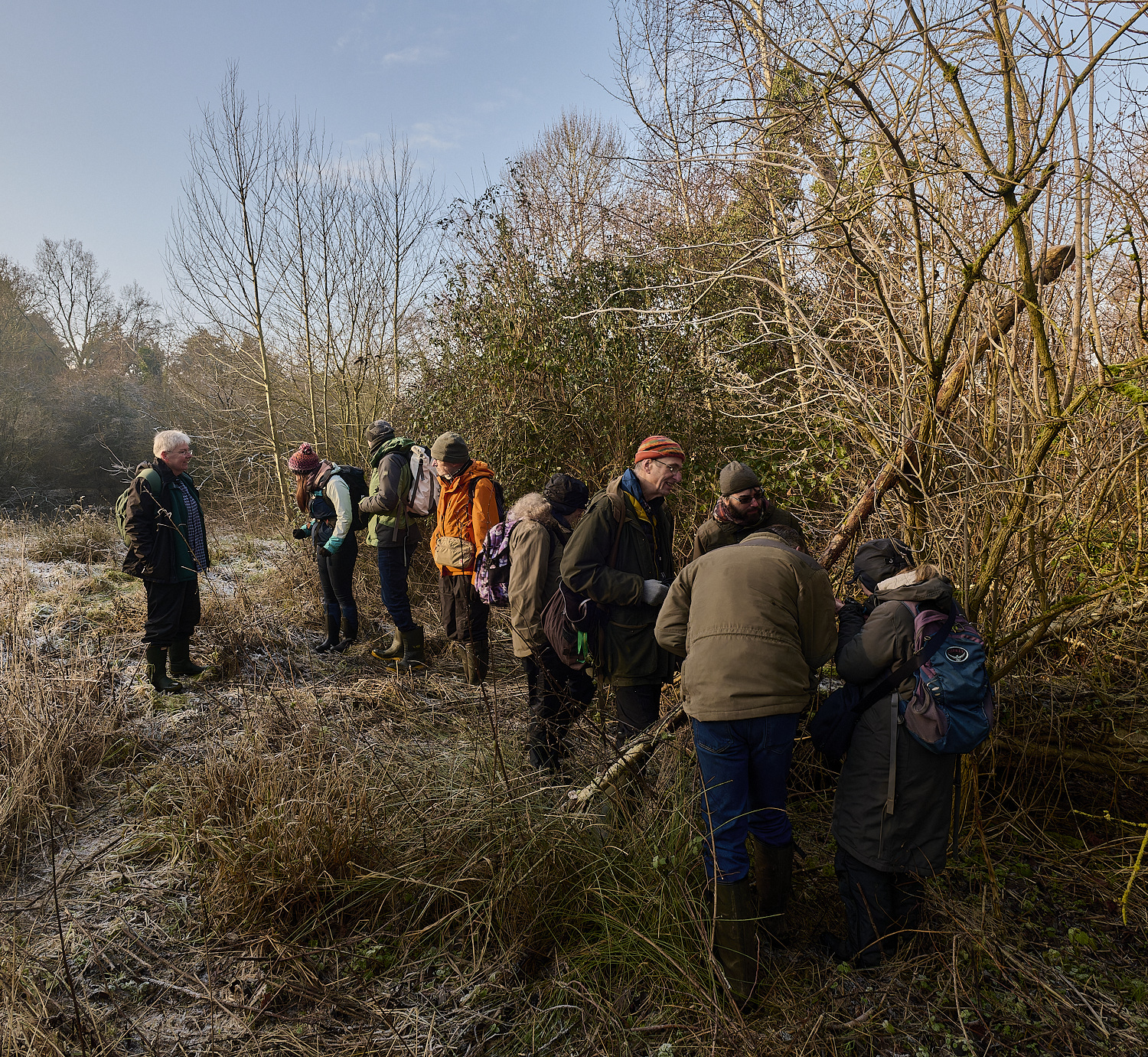
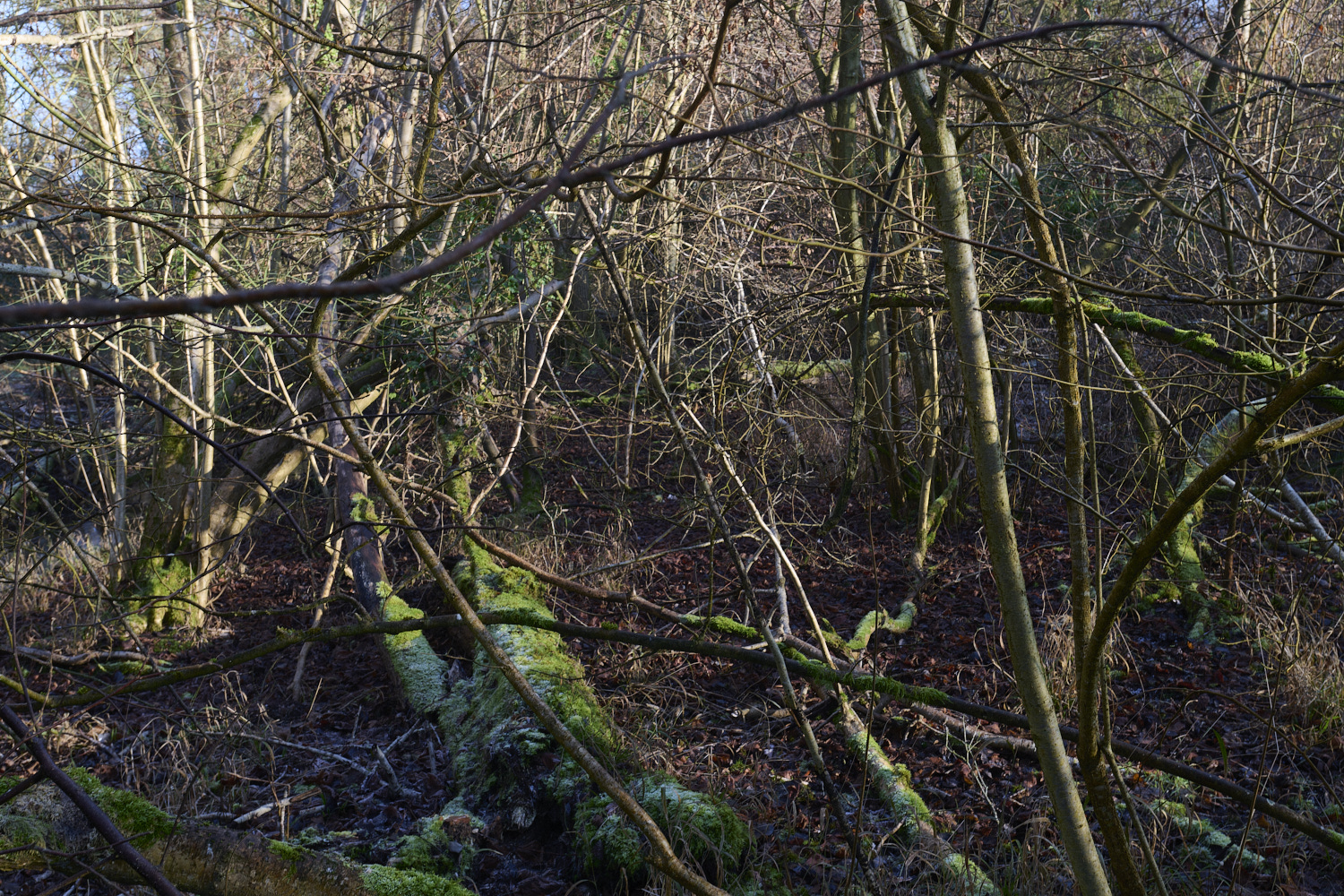

Fungal Ice Cubes
Glyphium elatum on Elder
Glistening Inkcap (Coprinellus micaceus)
From YM
The C. micaceus were a soggy blob when I got home but I am sure they were these - the spores were right and they had caulocystidia which I had seen with the hand lens in the field.
Lichen Sp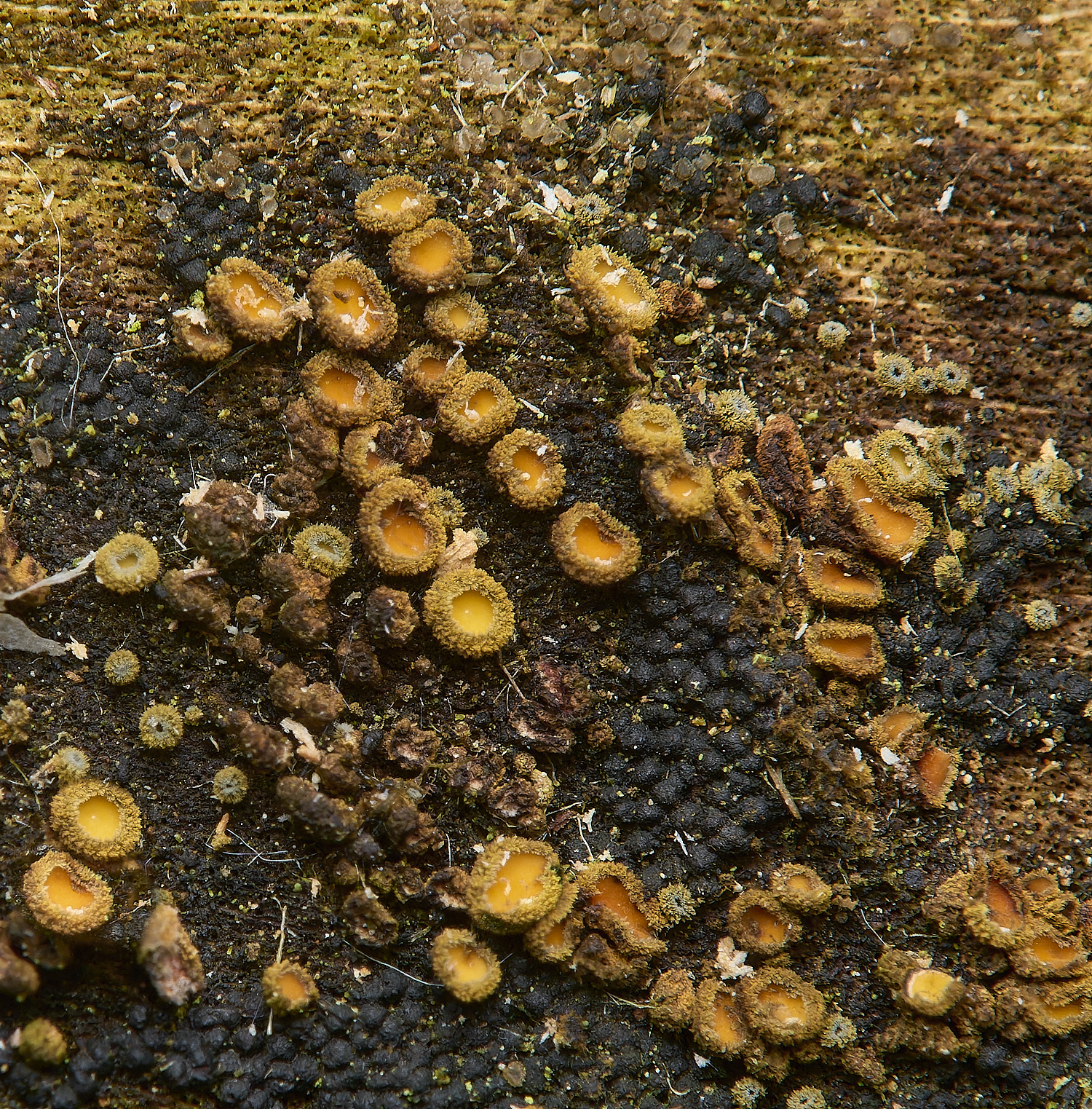
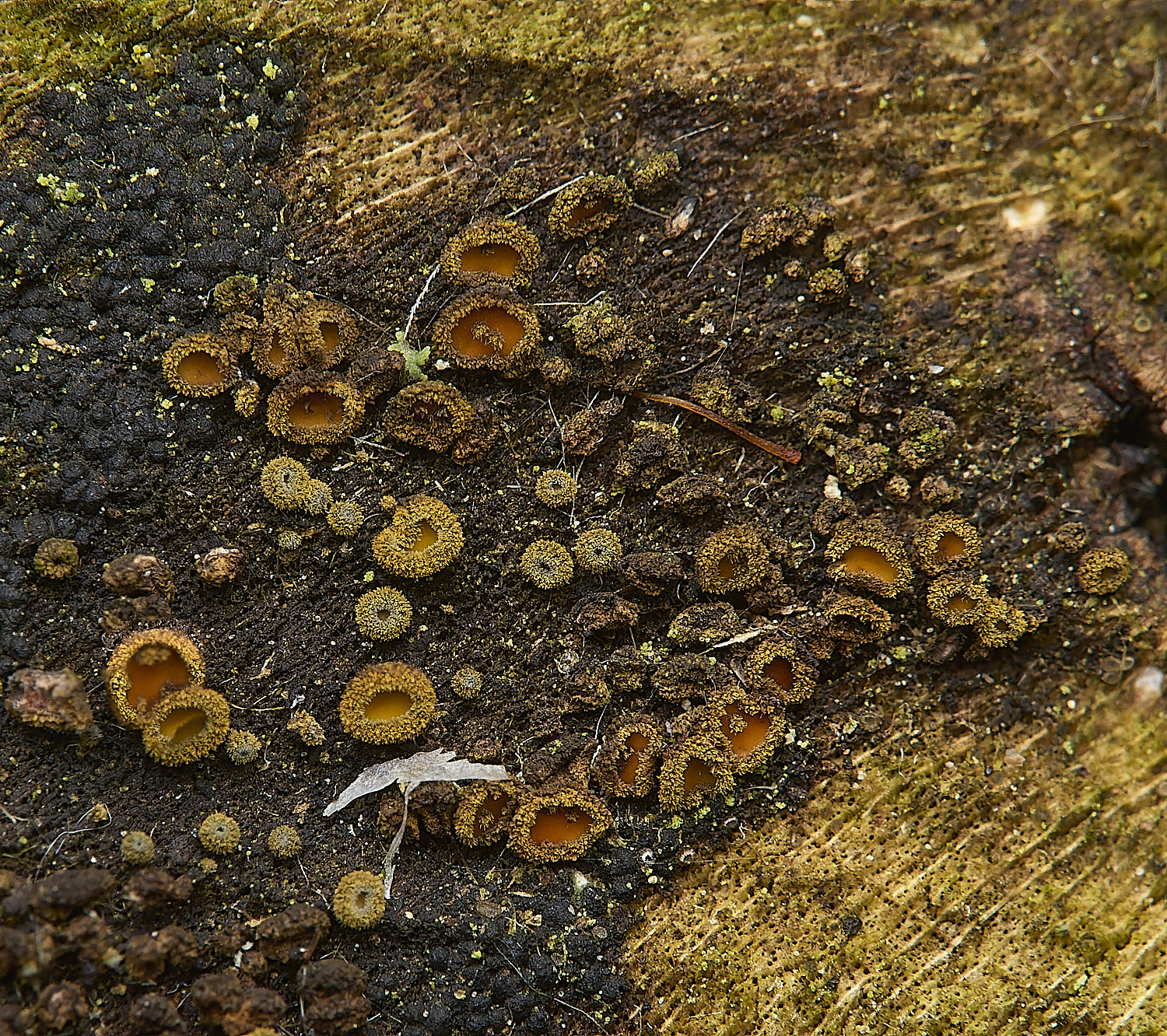
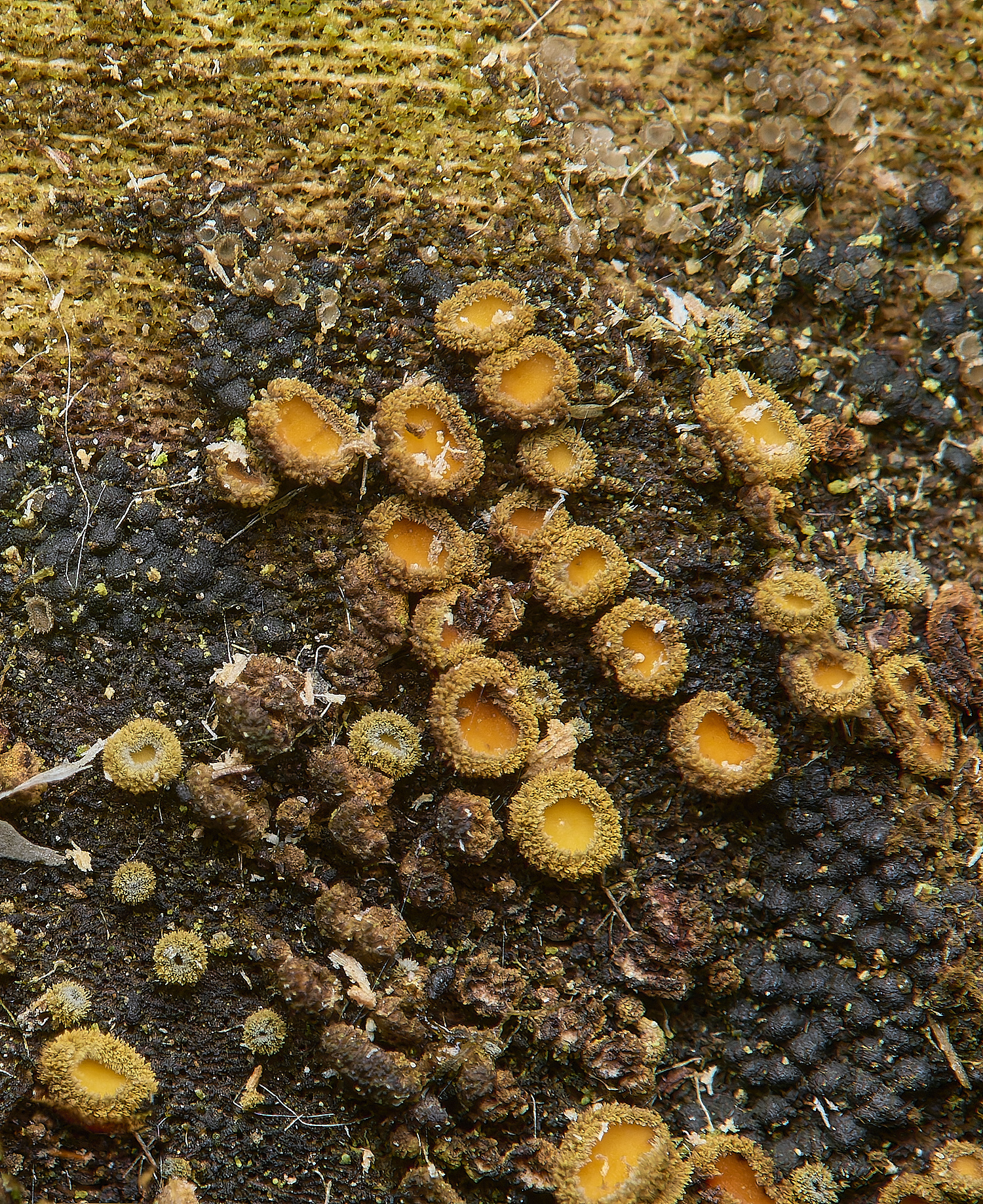
This one caused a lot of head scratching and thumbing through the pages of Fungi of Temperate Europe
From TM
Cups: 0.6-0.9mm diameter, short-stalked, inner surface smooth, yellow/orange, outer surface covered in brown hairs
Hairs: 90-100 x 4-4.5 rough walled, some with granular tips
Spores: 6.2 x 1.8 Q=3.4 (n=10) single celled
Paraphyses project up to 25um above asci
Finally resolved by SW
I looked through FTE and concluded they had to be
Neodasyscypha cerina
From
GBIF
Microscopy Images on Asco France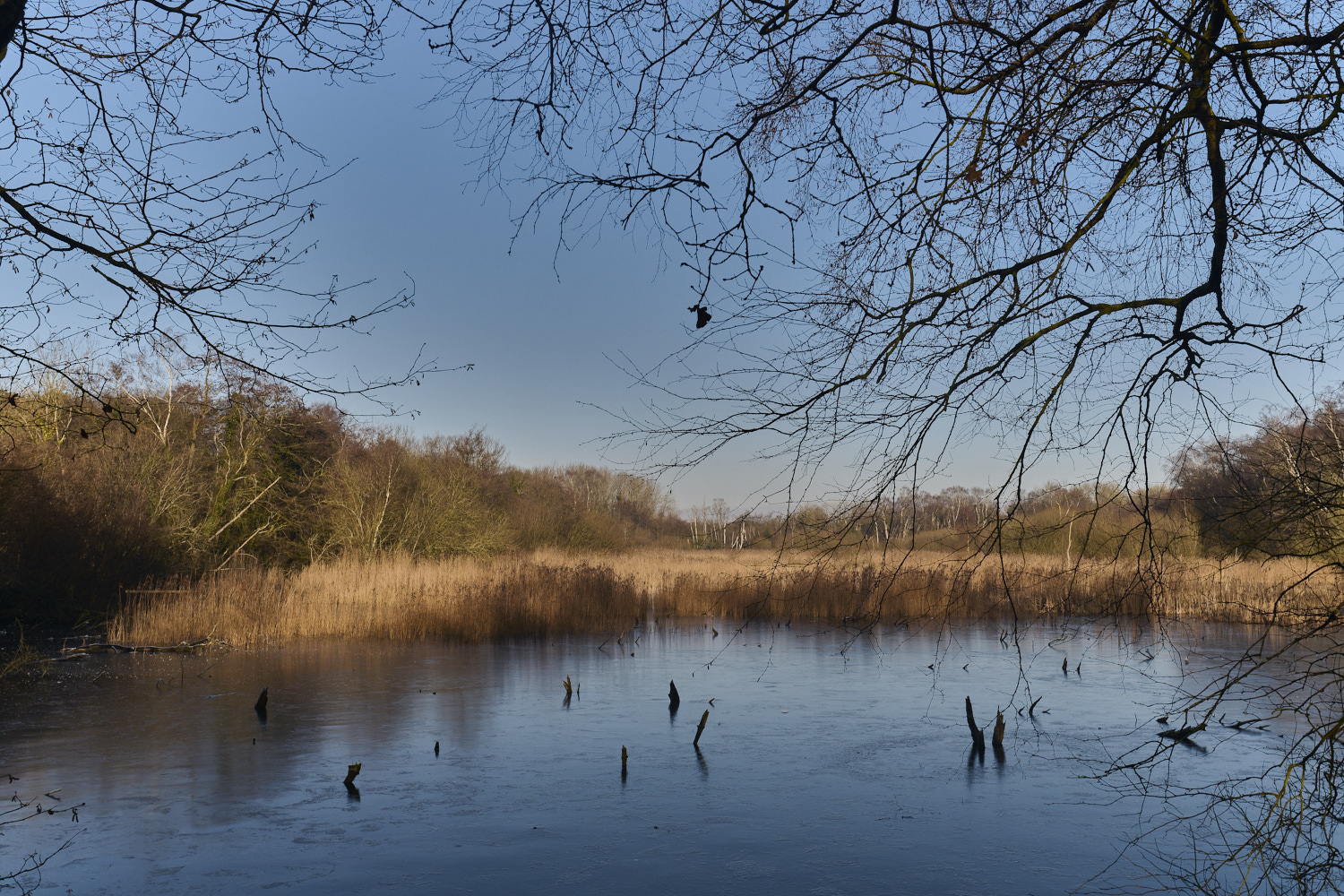
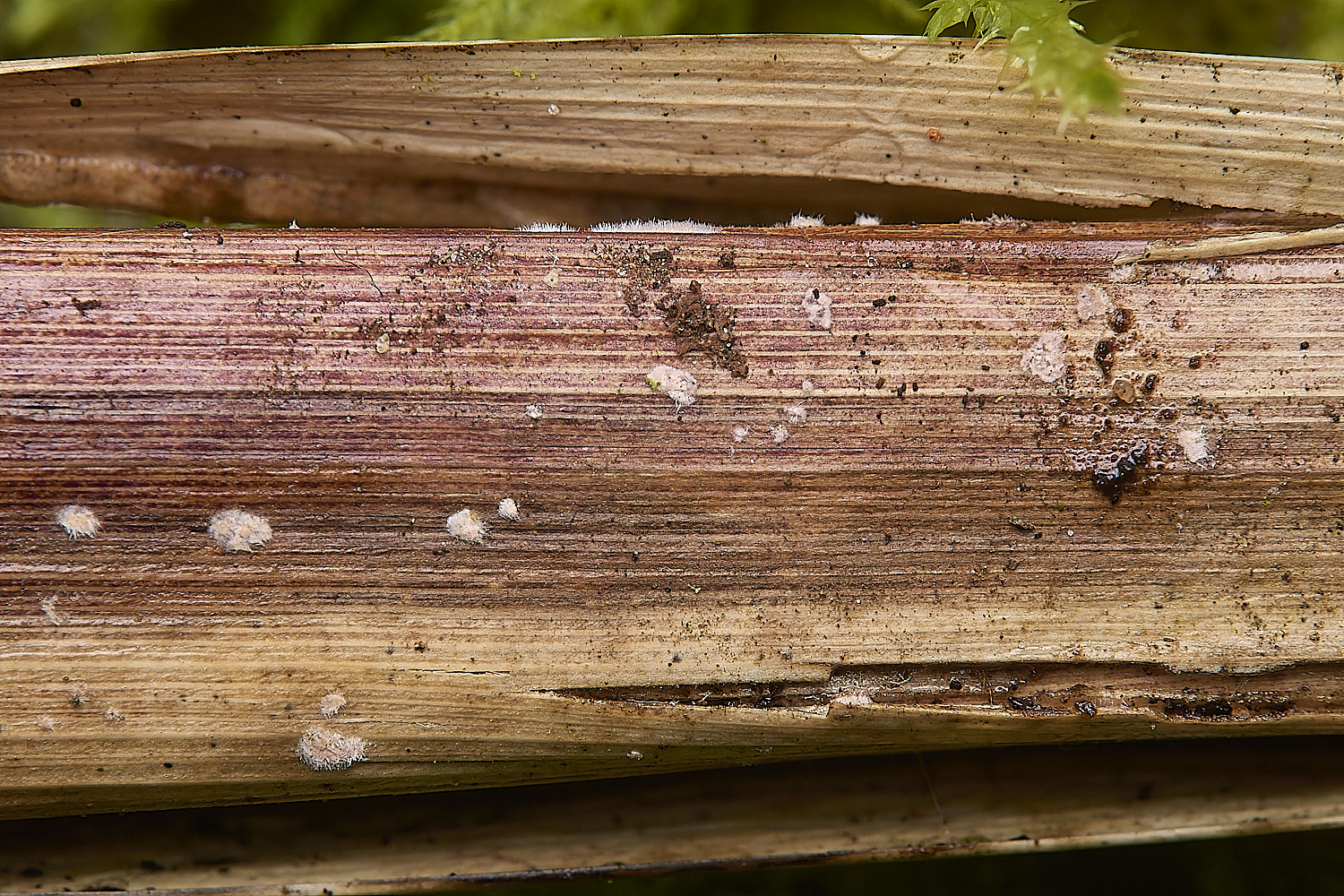
Volutella arundinis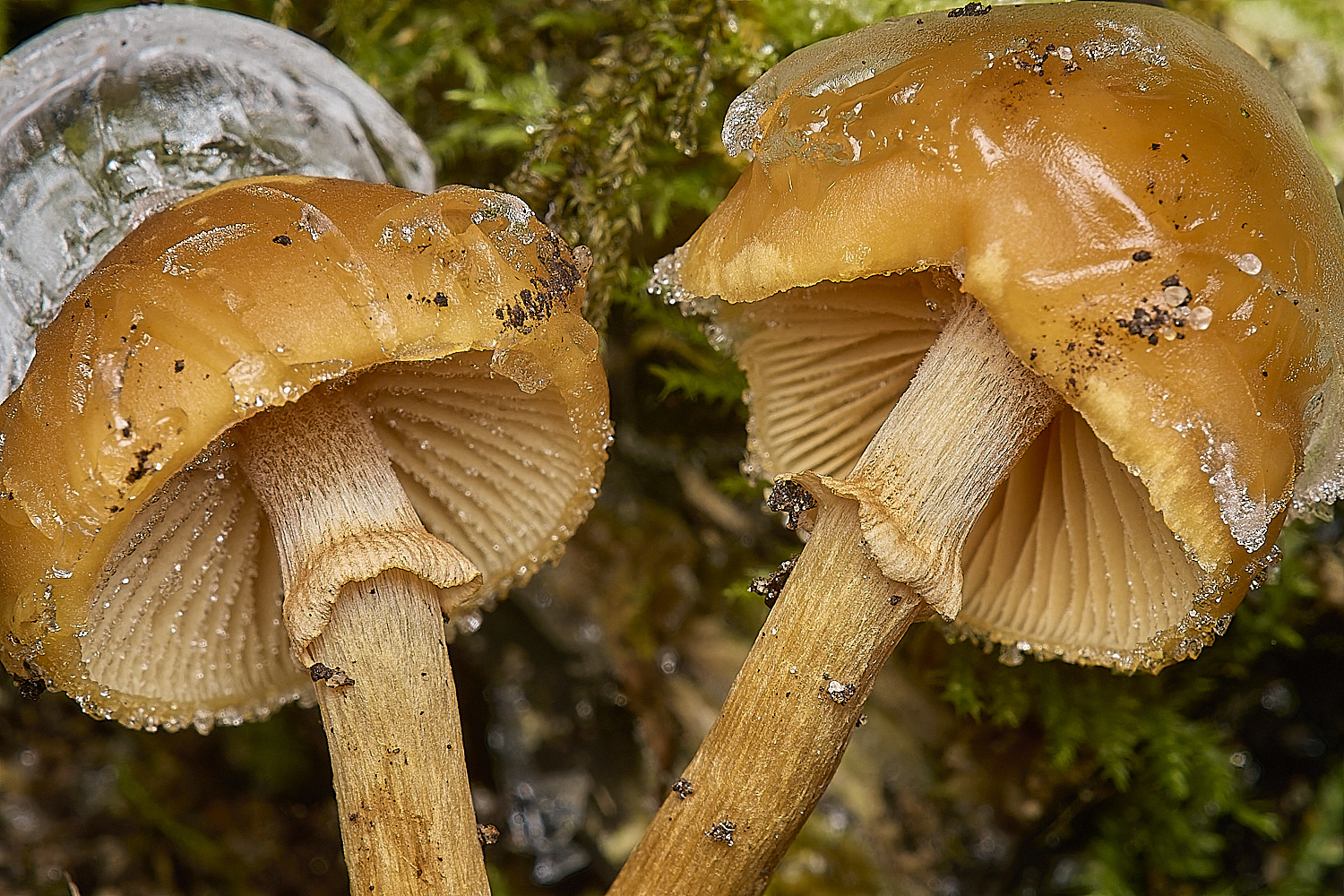
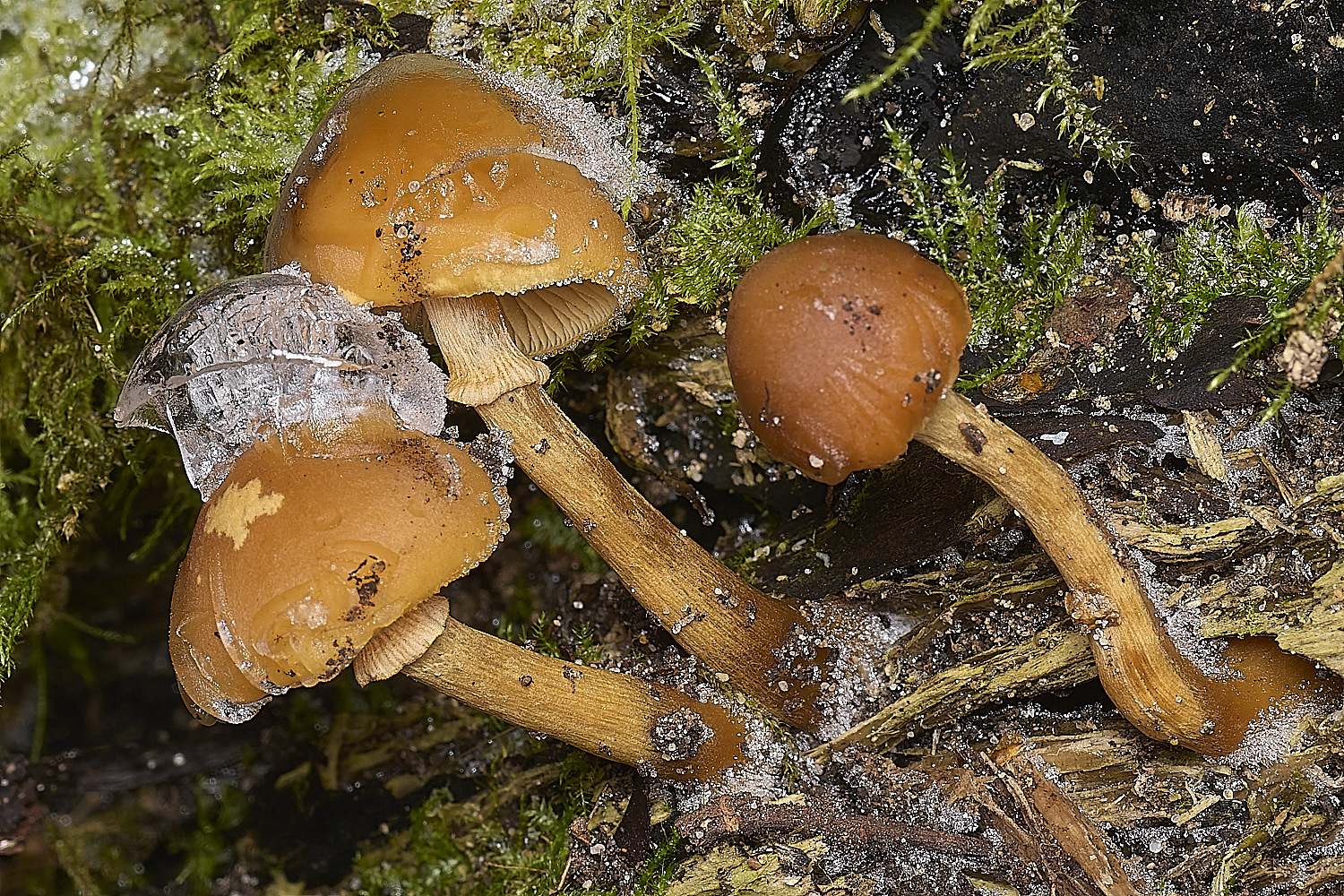
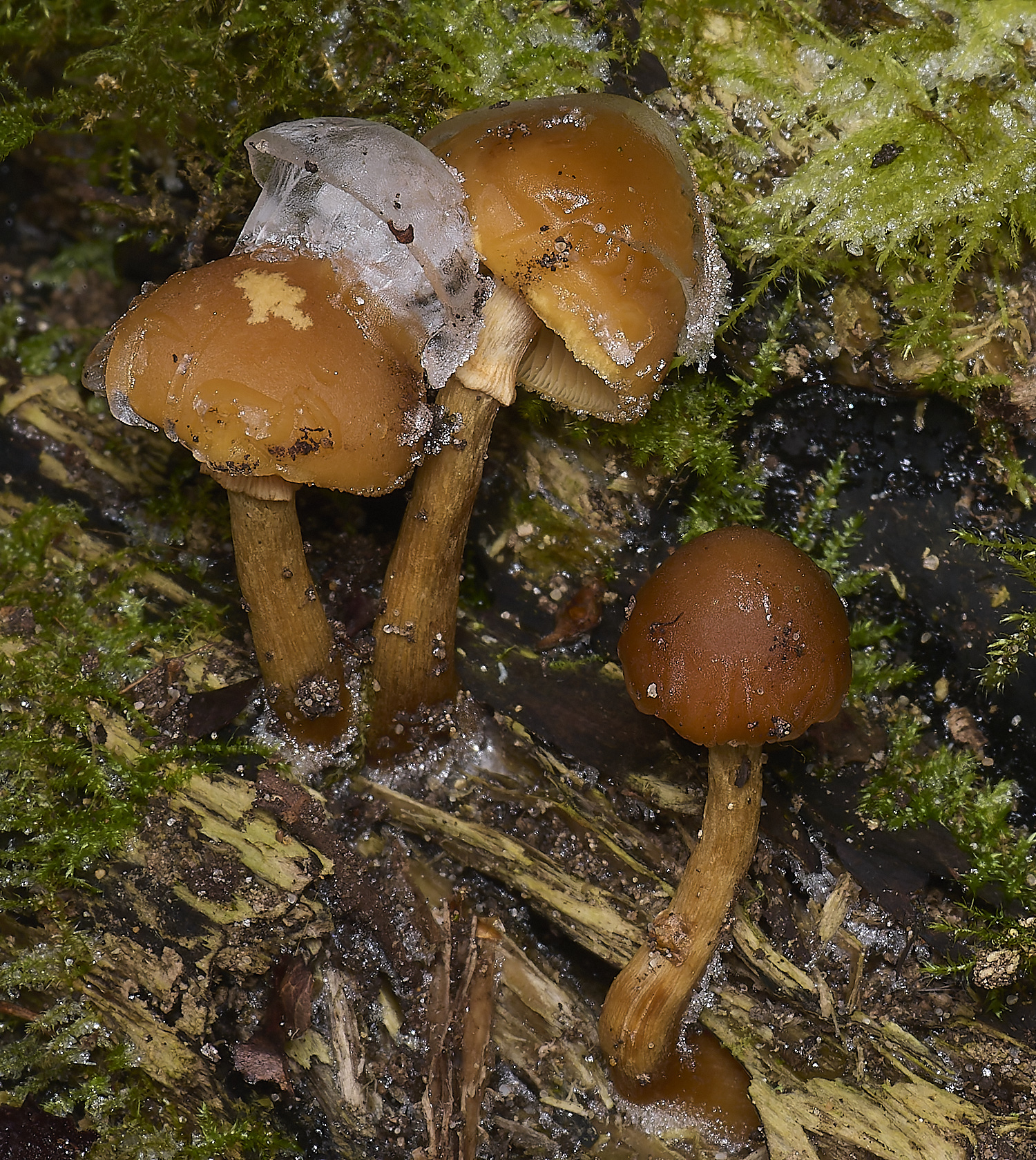
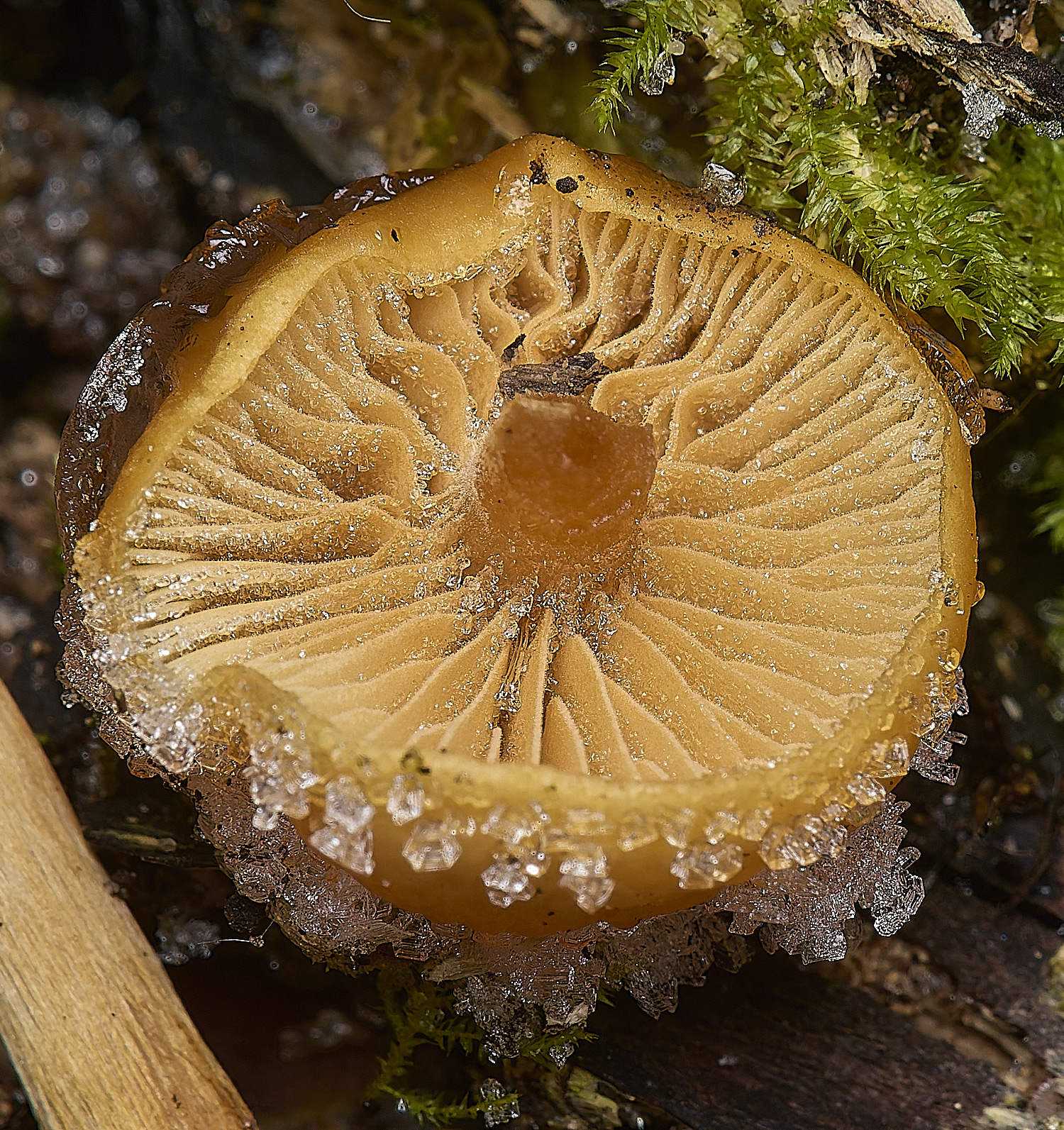
A well frozen Funeral Bell (Galerina marginata)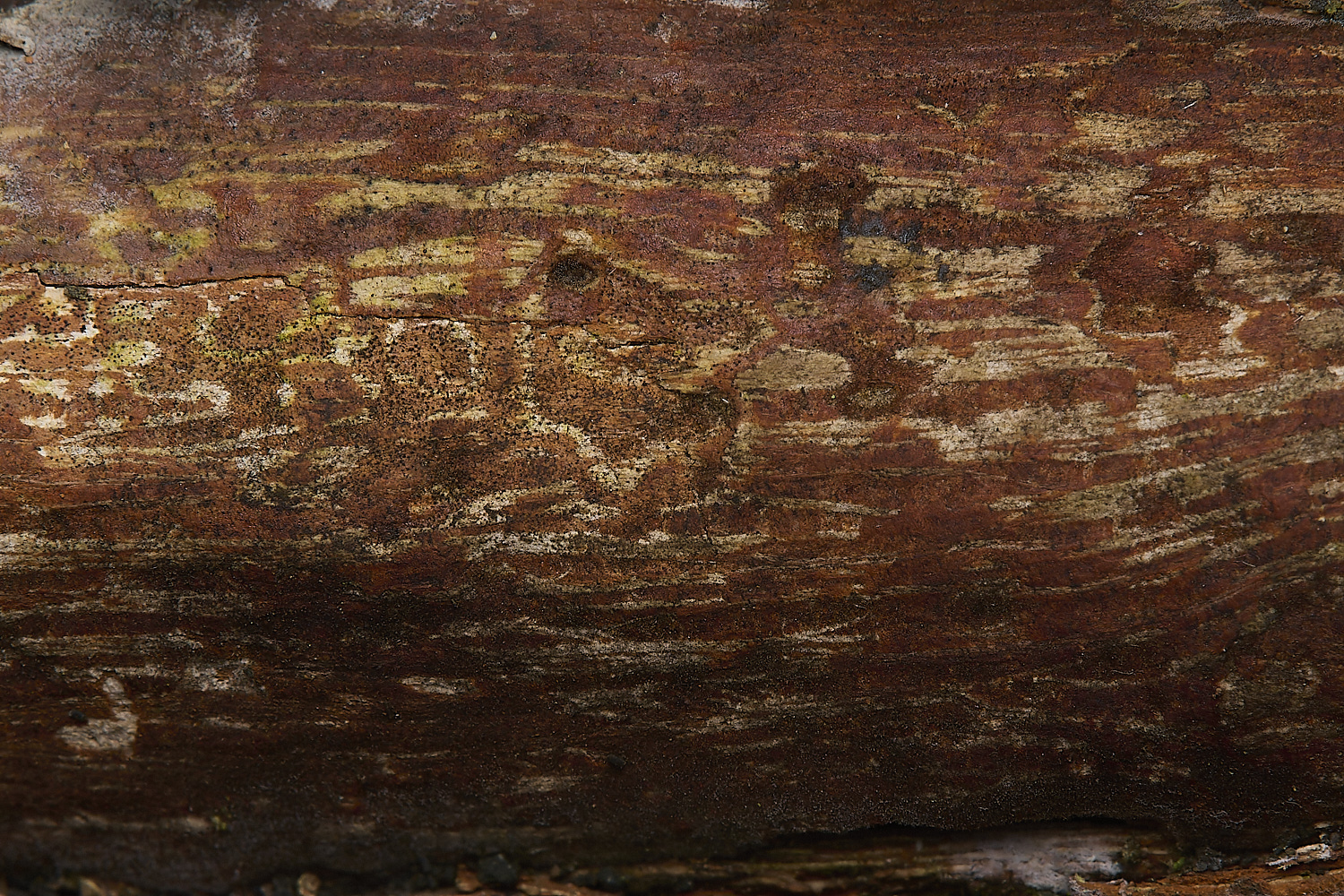
Vuilleminia cystidiata on Hawthorn
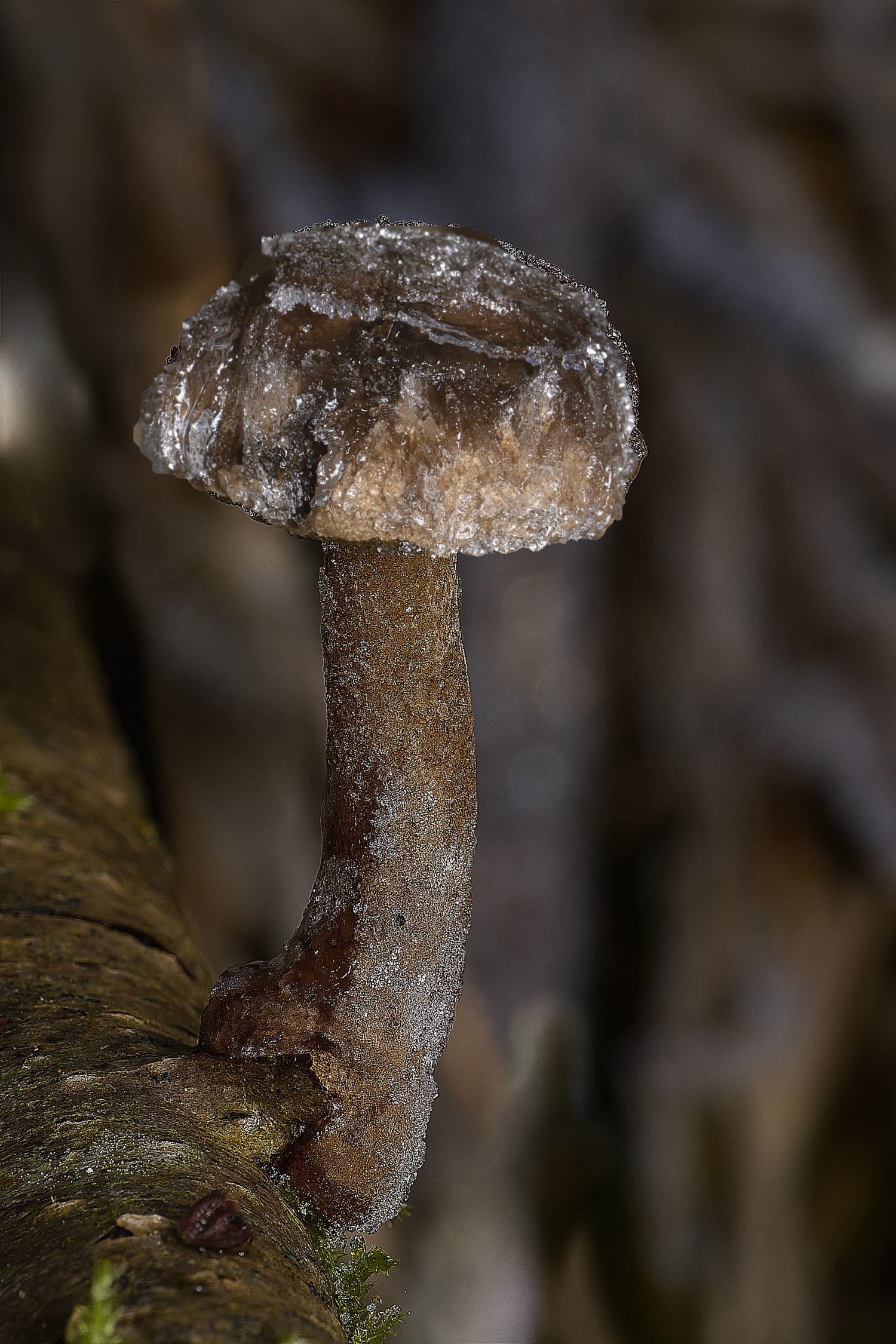
Winter Polypore (Lentinus brumalis)
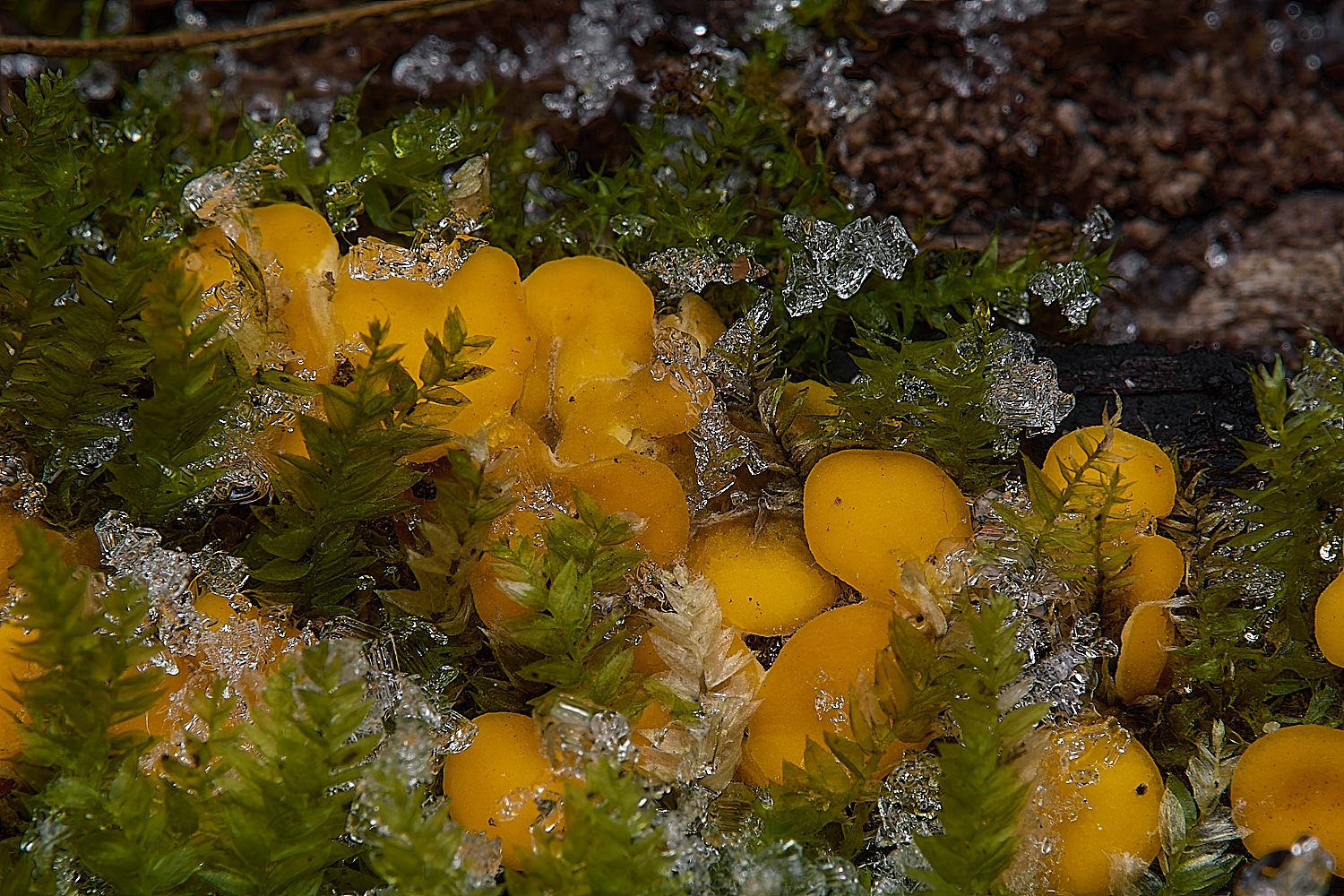
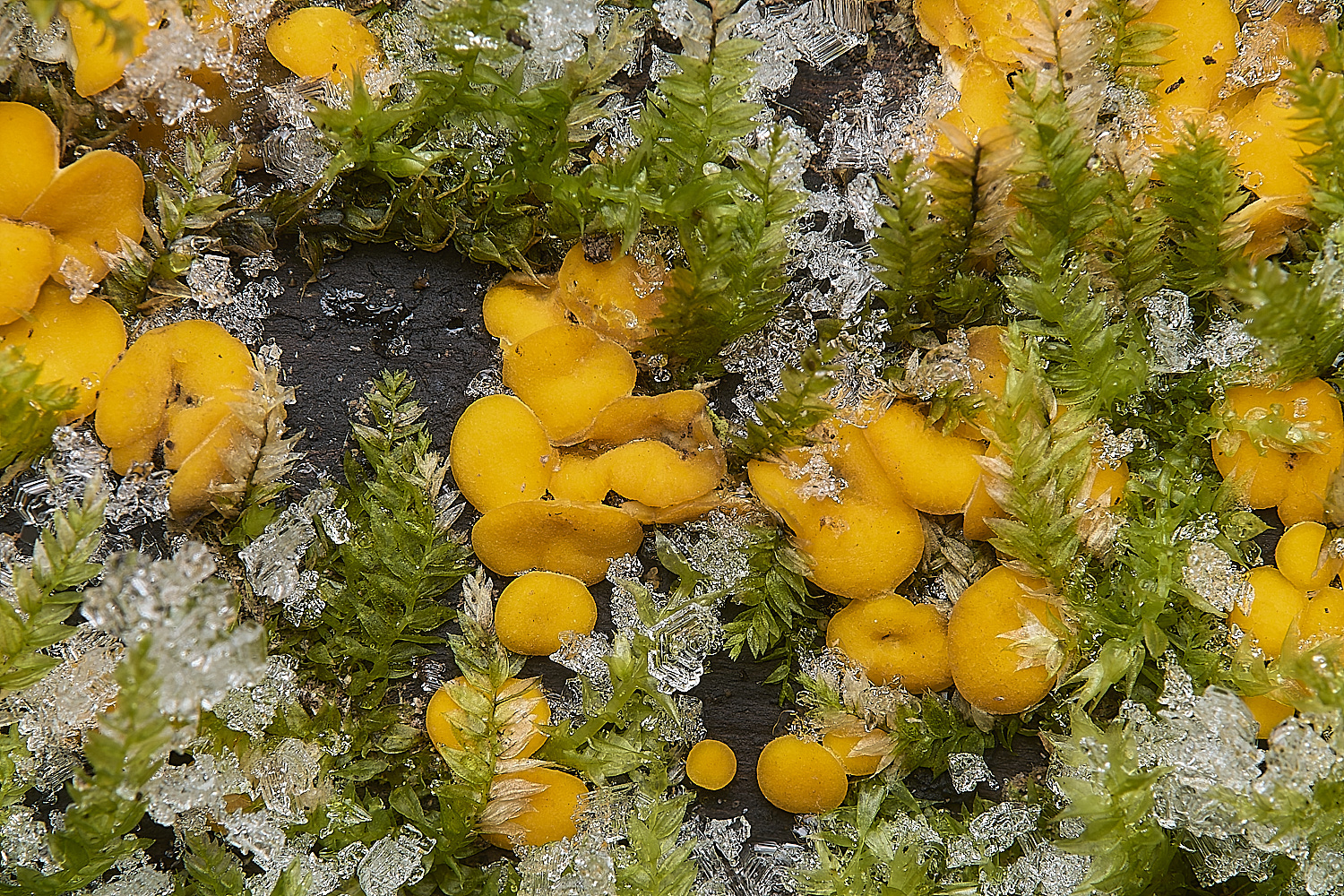
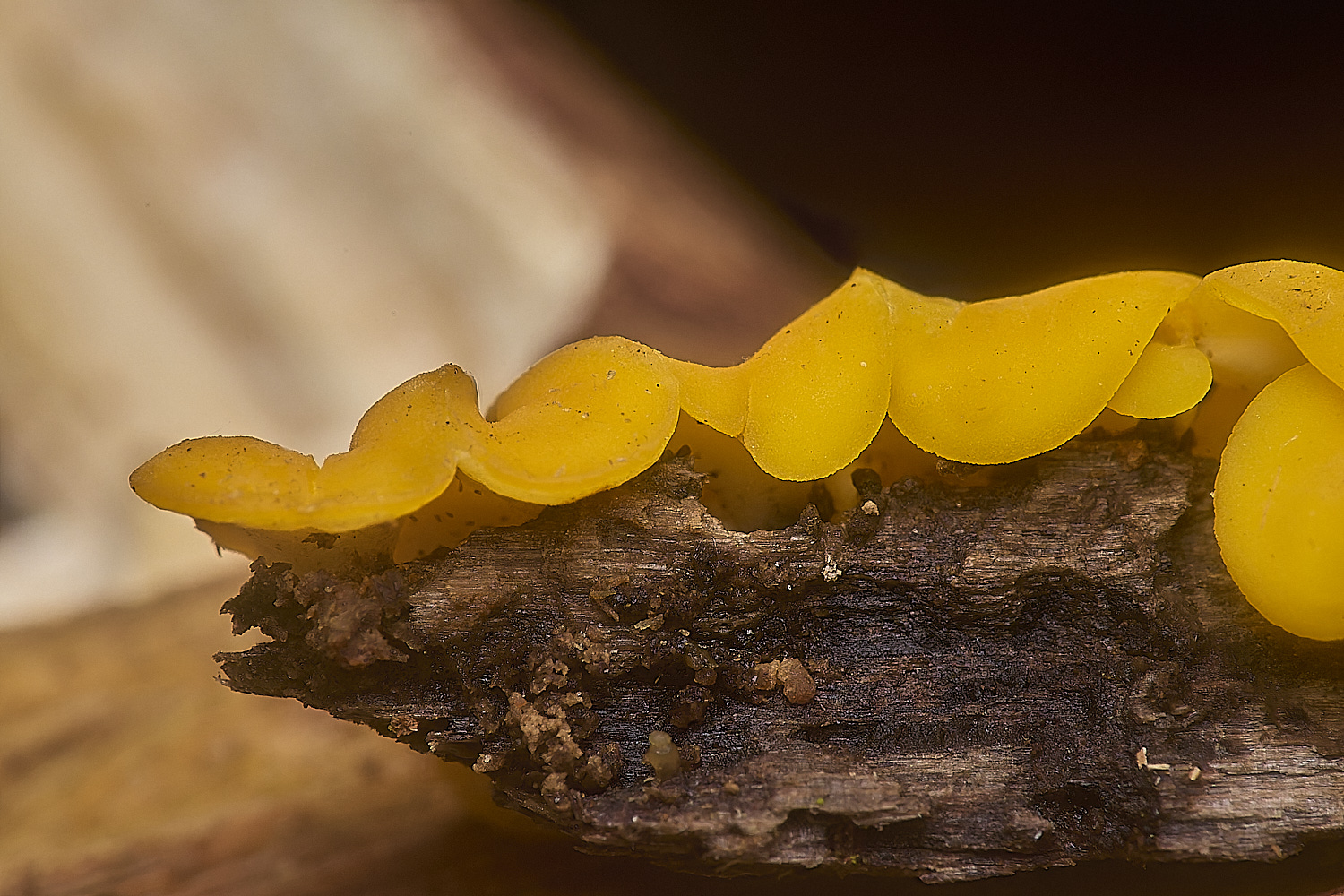
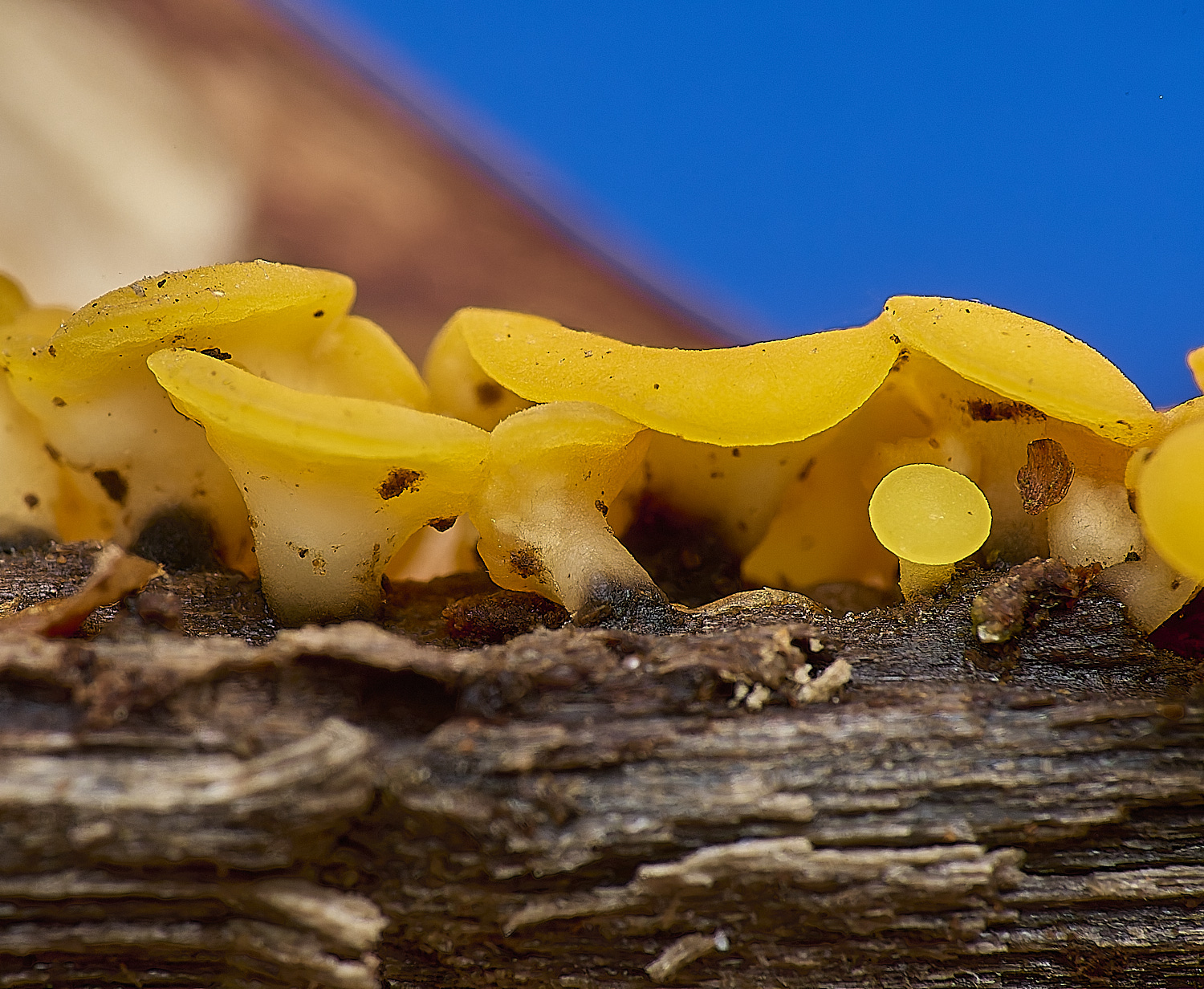
No hairs, very flat with white underside and white stipe.
YM & TL both came to the same conclusion
Phaeoholotium nobile
From Tony L
Phaeohelotium nobile is the name I am most comfortable with for the gregarious golden-yellow disco.
The other contender is P. monticola (= Hymenoscyphus monticola on NBN Atlas) but the dimensions of
both spores and asci are closer to the former, moreover some sources describe the latter as having finely verrucose
spores which become brown - neither were observed. There is one record on the Mycota (1995, Foxley Wood, Reg Evans).
From YM
Phaeohelotium nobile. I hesitated as I couldn't see branched paraphyses but they were the best fit. Lit Nordic Macromycetes vol 1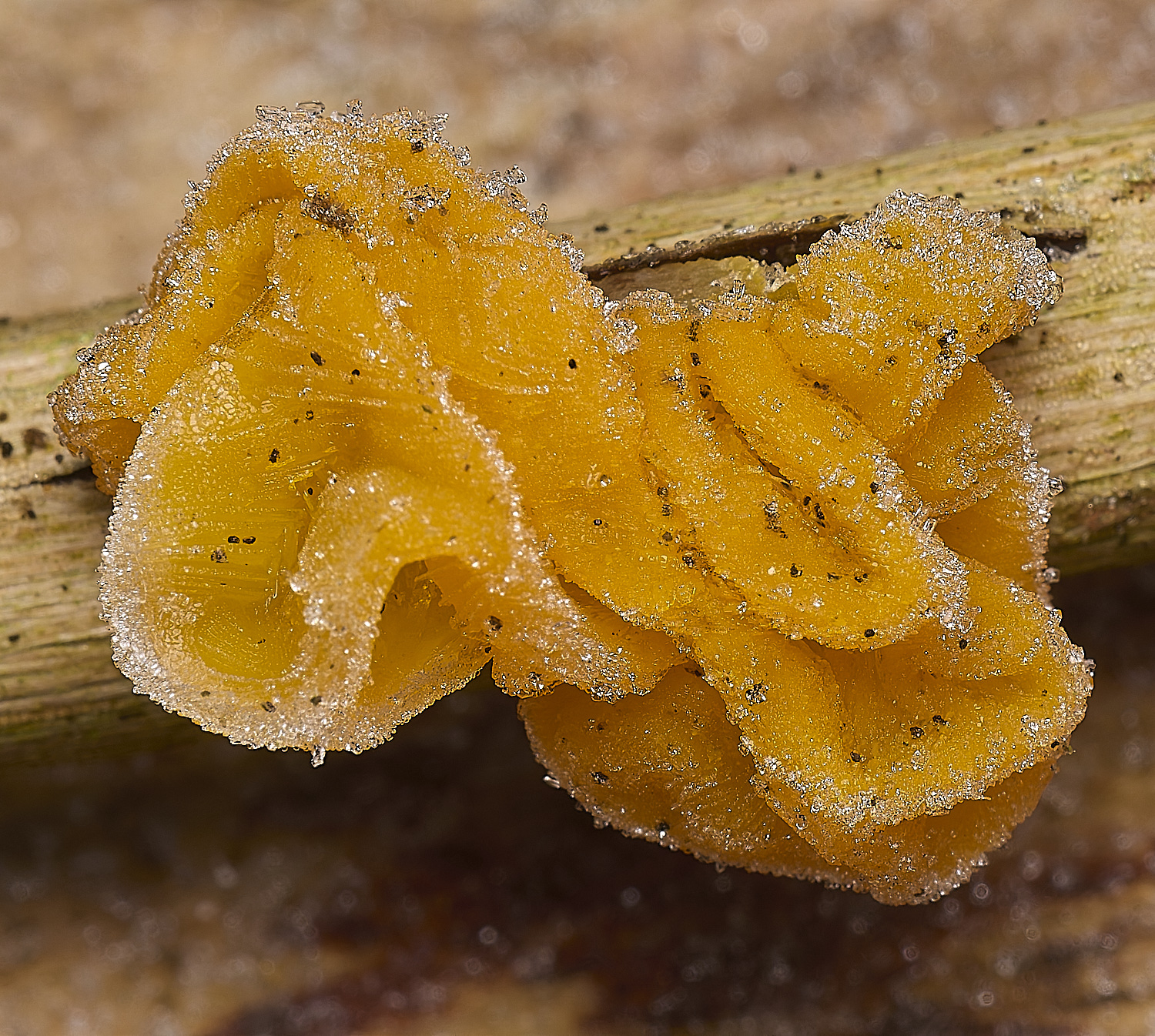
Yellow Brain (Tremella mesenterica)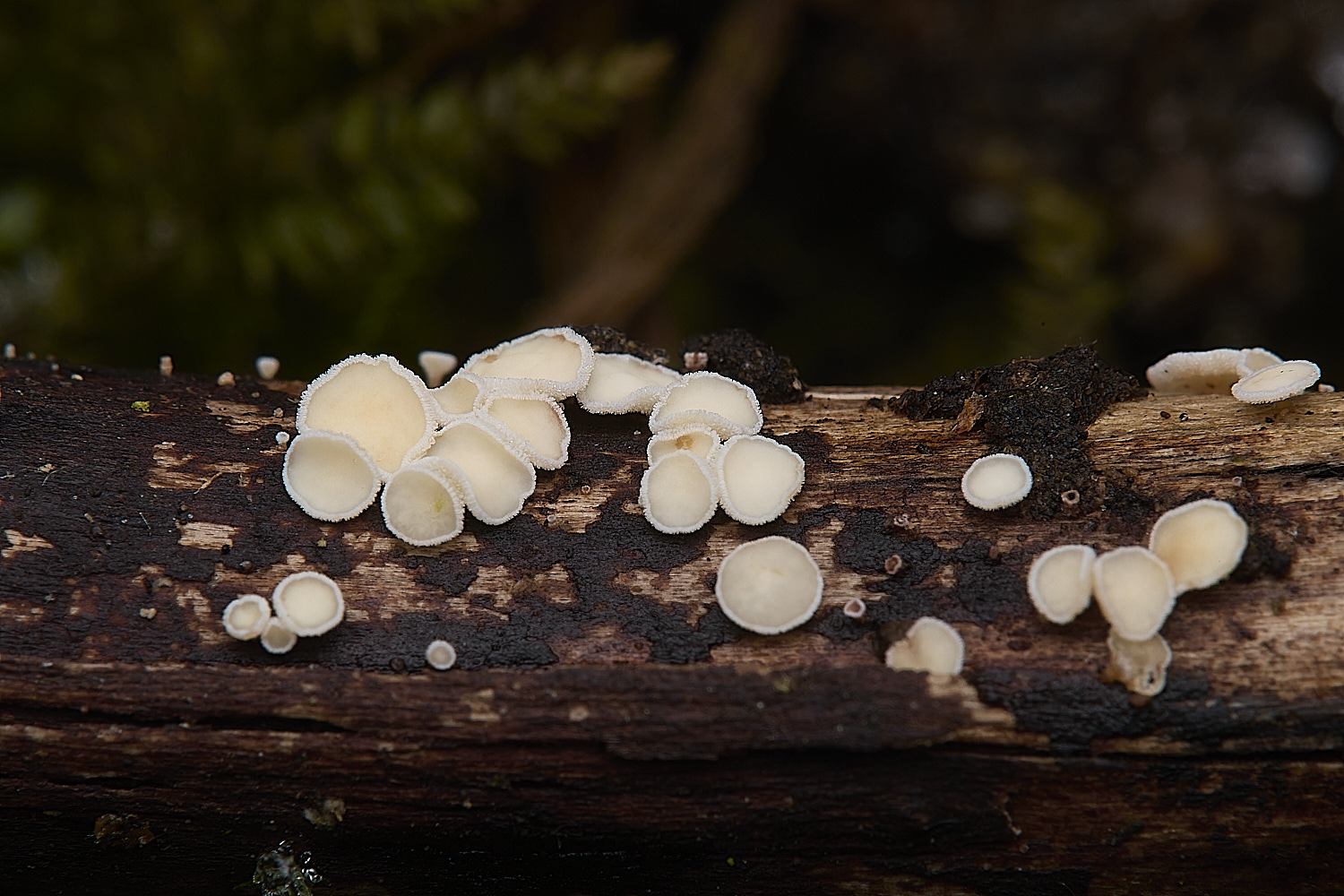
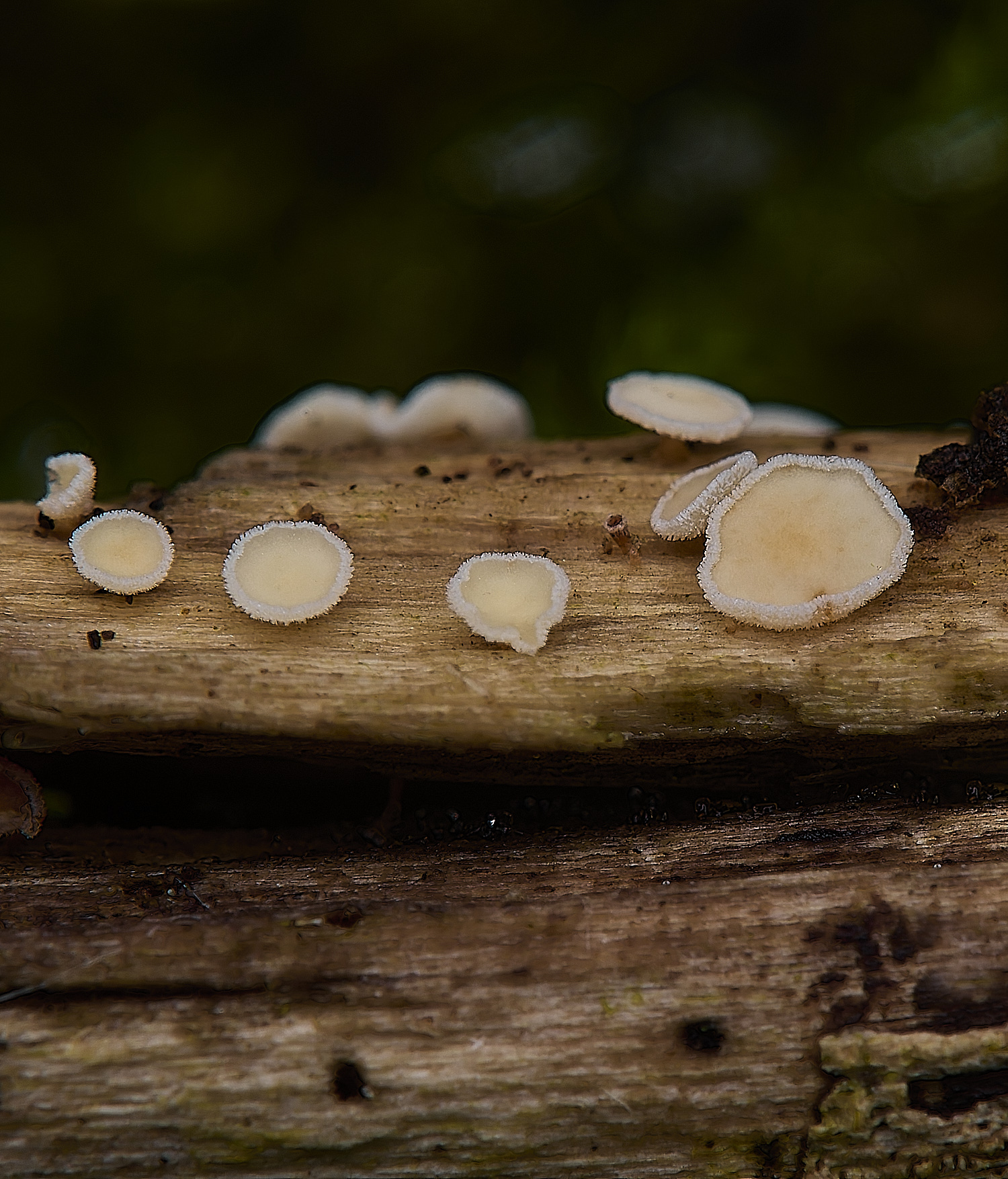
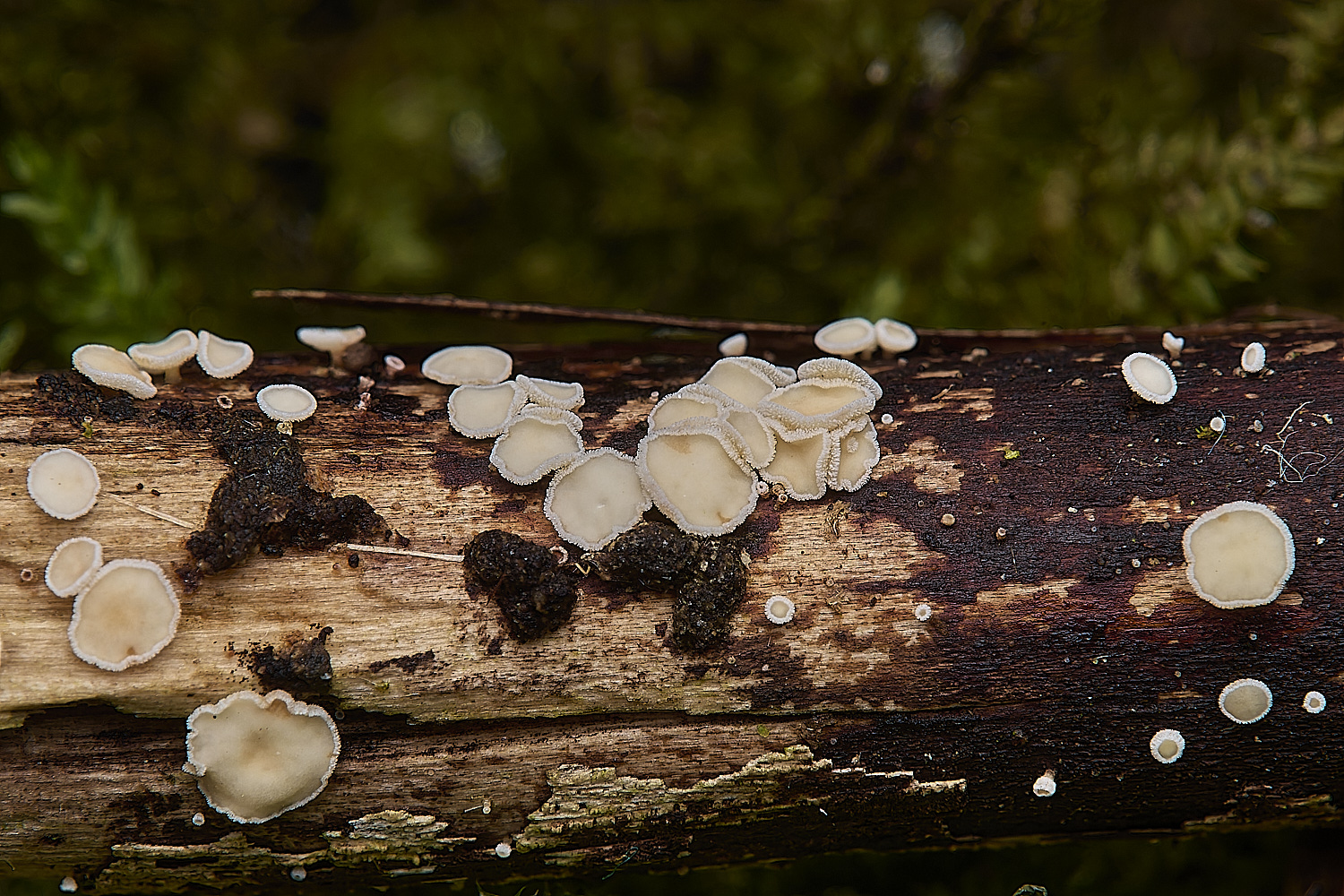
White haired (Lachnum)? that seems to be discolouring to brown/orange
AC - Turned put to be Snowy Disco ( Lachnum virgineum)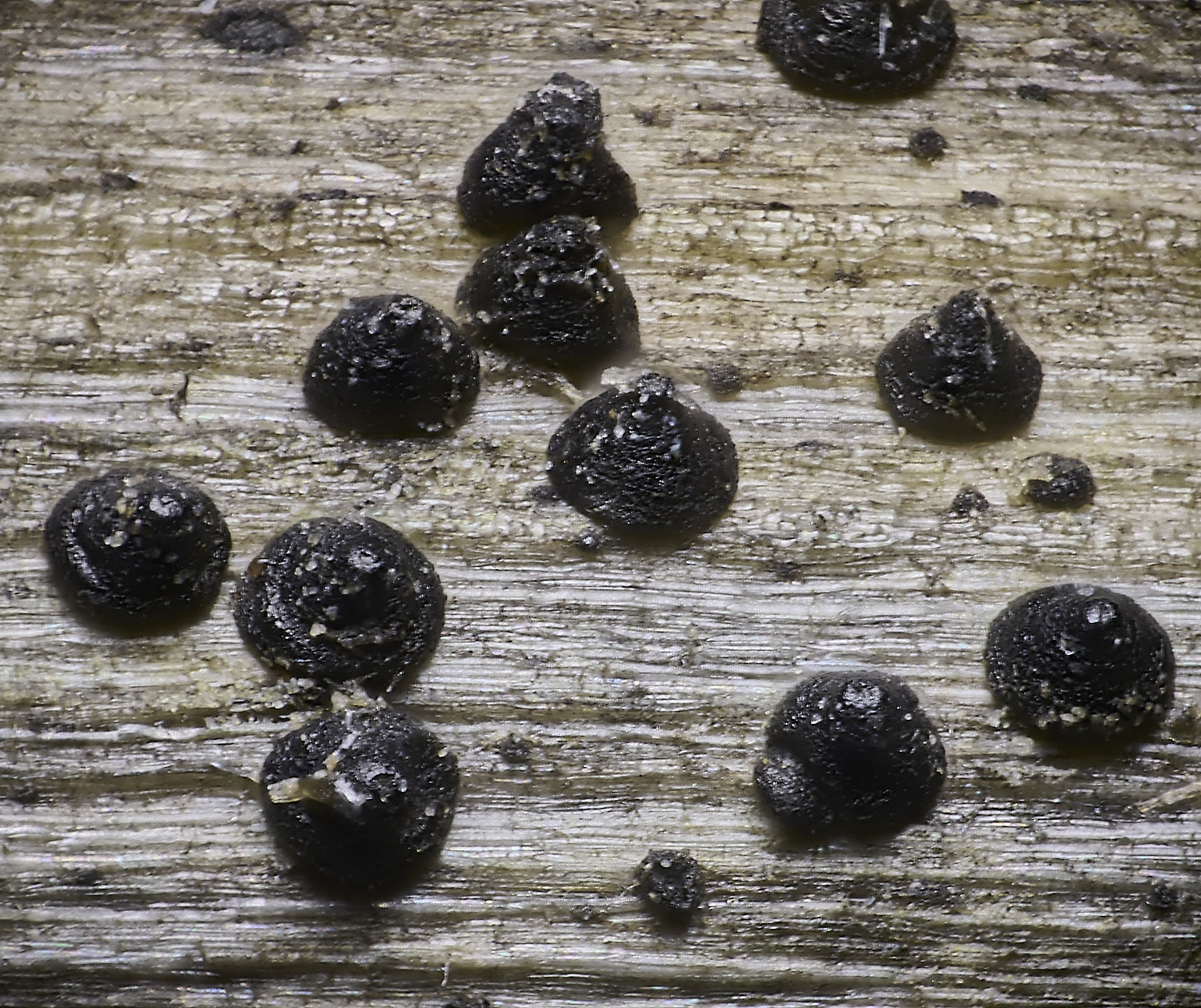
Nettle Rash (Leptosphaeria acuta)
